Balancing Entrepreneurship – Workshop 2 (Baseline Assessment)
The Appleton Greene Corporate Training Program (CTP) for Balancing Entrepreneurship is provided by Mr. Meuchel BS Certified Learning Provider (CLP). Program Specifications: Monthly cost USD$2,500.00; Monthly Workshops 6 hours; Monthly Support 4 hours; Program Duration 20 months; Program orders subject to ongoing availability.
If you would like to view the Client Information Hub (CIH) for this program, please Click Here
Learning Provider Profile
Mr. Meuchel is a Certified Learning Provider (CLP) at Appleton Greene and he has experience in management and entrepreneurship specializing in the construction industry. He has achieved a Bachelor of Science in Civil Engineering with a concentration in Construction Management. He has industry experience within the following sectors: Business Ownership; Design/Build; Construction Management and General Contracting. His experience within the construction industry incorporates all facets of construction including: Design Phase; Bid Phase and Construction Phase. He has had commercial experience within the following countries: United States of America, or more specifically within the following cities: Baltimore MD; Washington DC; Raleigh NC; Jacksonville FL and Atlanta GA. His personal achievements include: established time management processes; published book for entrepreneurs; entrepreneur mastermind program and construction expert witness. His service skills incorporate: time management; process development & testing; marketing & sales; owner & 1 subcontractor relations; estimating & budgeting; planning & scheduling; cost & quality control; inspections & safety; municipal regulations and permitting.
MOST Analysis
Mission Statement
The driving purpose of the Baseline Assessment Phase is to determine the present state of your business and to understand how your current work-life balance aligns with where you really want to be. After you are guided through the steps of the assessment you will learn how to analyze this data in conjunction with the validated goals and expectations you developed in the first phase. This analysis will then allow you, under the guidance of your mentor, to make informed decisions as you move into the final stages of process planning and start process development. The assessment phase will kick off with a focus on your mindset and expertise. During the mindset portion and under the tutelage of your mentor you will test yourself, specifically your confidence and clarity, to make sure you are completely clear where you want to be and are committed to working through the program to get there. You will continue to work closely with your mentor assessing your expertise as well. This is a critical step in self-awareness, not only to confirm your expertise but also to better understand how you are perceived by your customers, employees, and peers in relation to competition, credentials, social proof, etc. After tackling mindset and expertise, you will be guided through a detailed analysis of the nuts and bolts of your business and conduct a thorough review of the current systems and processes you have in place for both the front ends and the back ends. Next you will review your current unique value proposition and analyze how it positions you in the marketplace. During this portion you will also look at the tasks you are handling directly which is the first step towards identifying areas to delegate and identifying repeatable tasks you can create systems and processes for. Finally, at the end of the Baseline Assessment Phase you will review your current support network and the role this network is playing in your current approach to business and work-life balance. This network will be slightly different for each program participant but generally include a mix of immediate family and circle of influence, mentors, coaches, mastermind and networking groups, professional trade organizations and key outsource partners.
Objectives
01. Performance Reviews: departmental SWOT analysis; strategy research & development. Time Allocated: 1 Month
02. Self-Awareness: departmental SWOT analysis; strategy research & development. Time Allocated: 1 Month
03. Level of Expertise: departmental SWOT analysis; strategy research & development. Time Allocated: 1 Month
04. Goal Commitment: departmental SWOT analysis; strategy research & development. Time Allocated: 1 Month
05. Customer Perception: departmental SWOT analysis; strategy research & development. Time Allocated: 1 Month
06. Employee Perception: departmental SWOT analysis; strategy research & development. Time Allocated: 1 Month
07. Peer Perception: departmental SWOT analysis; strategy research & development. 1 Month
08. Current Processes: departmental SWOT analysis; strategy research & development. Time Allocated: 1 Month
09. Market Position: departmental SWOT analysis; strategy research & development. Time Allocated: 1 Month
10. Tasks and Delegation: departmental SWOT analysis; strategy research & development. Time Allocated: 1 Month
11. Support Network: departmental SWOT analysis; strategy research & development. Time Allocated: 1 Month
12. Professional Network: departmental SWOT analysis; strategy research & development. Time Allocated: 1 Month
Strategies
01. Performance Reviews: Each individual department head to undertake departmental SWOT analysis; strategy research & development.
02 Self-Awareness: Each individual department head to undertake departmental SWOT analysis; strategy research & development.
03. Level of Expertise: Each individual department head to undertake departmental SWOT analysis; strategy research & development.
04. Goal Commitment: Each individual department head to undertake departmental SWOT analysis; strategy research & development.
05. Customer Perception: Each individual department head to undertake departmental SWOT analysis; strategy research & development.
06. Employee Perception: Each individual department head to undertake departmental SWOT analysis; strategy research & development.
07. Peer Perception: Each individual department head to undertake departmental SWOT analysis; strategy research & development.
08. Current Processes: Each individual department head to undertake departmental SWOT analysis; strategy research & development.
09. Market Position: Each individual department head to undertake departmental SWOT analysis; strategy research & development.
10. Tasks and Delegation: Each individual department head to undertake departmental SWOT analysis; strategy research & development.
11. Support Network: Each individual department head to undertake departmental SWOT analysis; strategy research & development.
12. Professional Network: Each individual department head to undertake departmental SWOT analysis; strategy research & development.
Tasks
01. Create a task on your calendar, to be completed within the next month, to analyze Performance Reviews.
02. Create a task on your calendar, to be completed within the next month, to analyze Self-Awareness.
03. Create a task on your calendar, to be completed within the next month, to analyze Level of Expertise.
04. Create a task on your calendar, to be completed within the next month, to analyze Goal Commitment.
05. Create a task on your calendar, to be completed within the next month, to analyze Customer Perception.
06. Create a task on your calendar, to be completed within the next month, to analyze Employee Perception.
07. Create a task on your calendar, to be completed within the next month, to analyze Peer Perception.
08. Create a task on your calendar, to be completed within the next month, to analyze Current Processes.
09. Create a task on your calendar, to be completed within the next month, to analyze Market Position.
10. Create a task on your calendar, to be completed within the next month, to analyze Tasks and Delegation.
11. Create a task on your calendar, to be completed within the next month, to analyze Support Network.
12. Create a task on your calendar, to be completed within the next month, to analyze Professional Network.
Introduction
A History of Balance
Work-life balance has become one of the most popular subjects in academia, industry, politics, and society in recent years. This phenomenon arises as a result of demographic, economic, and cultural changes (Osoian Lazar & Ra?iu, 2009), such as the increasing integration of women in the workplace, the rising number of couples who both work outside the home, or the transformation of family structures, as well as population ageing, technological advancements, birth rate decline, and the need to improve human capital management. Furthermore, one of the key concerns of the so-called “Generation Y” (born between 1982 and 2000), who seek flexibility in time and space at work, is work-life balance.
As a result of these social, economic, and political changes, businesses have been more involved in work, family, and personal life issues. Work-life balance is a solution to work-family conflict, which happens when personal role expectations are incompatible with those of the productive role, and vice versa. Individuals who are exposed to higher stress experience tension as a result of this conflict, which reduces their productivity and has a negative influence on organizational performance (Kalliath & Brough, 2008).
In this context, the organization should adopt a proactive approach to implementing work-life practices, building a flexible structure to adapt to external changes and contribute to people’s overall happiness. As a result, work-life balance, like any other human resource strategy, can be viewed as both a problem and a source of competitive advantage for organizational leaders (Coff, 1997; Pfeffer, 1994). Work-life balance can aid in the retention of skilled individuals in the business, resulting in a higher return on investment for organizations looking to attract and retain highly motivated and committed personnel (Yamamoto & Matsura, 2012).
Work-family conflict is defined by De Luis Carnicer et al. (2004, p.54) “as a form of inter-role conflict in which the role pressures from work and family spheres are mutually incompatible.” The demand for balance emerges from a conflict between the professional and family spheres, which leads to the formation of roles that are potentially incompatible and difficult to reconcile.
For an individual, this leads to a lack of job and personal satisfaction, as well as stress, which reduces quality of life. Work-family conflict is linked to an employee’s educational level (individuals with a bachelor’s degree face more conflict), professional category (senior managers face more work-family conflict) and is experienced equally by men and women (De Luis Carnicer et al, 2004; Eagle, Miles & Icenogle, 1997). However, it differs by country (Crompton & Lyonette, 2006) and individual traits such as higher degrees of neuroticism and depression, both of which contribute to the rise in conflict (Frone, 2000).
Defining Balance
When it comes to defining work-life balance, there is a lack of consensus among experts, hence there is no widely acknowledged definition (Kalliath & Brough, 2008; Klöpping, 2011). Most definitions, according to Devi & Ravi (2013), imply that work and life demands must be prioritized equally. Understanding work-life balance, on the other hand, is the starting point for both individuals (who need to manage their resources) and businesses (who need to design programs that enable balance and so meet the demands of their employees) (Reiter, 2007).
In their formulation, most definitions refer to the coordination of the working and personal spheres. Feldstead (2002) points out that a person’s equilibrium is independent of their age or gender. While some authors in the 1980s considered work-life balance to be primarily a female concern (Hall & Richter, 1988), it is now a topic that is receiving attention and relevance from both men and women. Veiga (2010) also emphasizes the importance of “maintaining a healthy and balanced life,” as work-life conflict leads to issues such as low professional and personal satisfaction, decreased organizational commitment, and stress. As a result, work-life balance is a strategy for reducing conflict between professional and personal roles.
Other authors allude to the activities that persons must engage in in order to balance demands from many areas in order to meet these needs with limited resources while retaining life autonomy; as Fleetwood (2007) puts it, “control over when, where, and how they work.” They also stress the importance of establishing an organizational structure that allows men and women to strike a balance between the two worlds. A second group of authors defines work-life balance as the level of personal satisfaction achieved when all aspects of one’s life are in harmony (Joshi et al, 2002; Greenhaus, 2003; Grady et al, 2008).
However, work-life balance rules will not be effective unless they are combined with a corporate culture that prioritizes work, family, and personal life values, as well as managerial support. Employees will be hesitant to participate in these initiatives if they fear negative consequences for their work (Eaton, 2003) or even antagonism from supervisors and coworkers. As a result, it is vital to examine work-life balance policies and their implications for the firm.

Elements Of Work-Life Balance
The most important aspects of work-life balance
Author Jeff Davidson is an expert on work-life balance. He believes there are six components to achieving work-life balance:
1. Self-management
Taking care of your personal needs, such as eating, sleeping, and exercising, is critical to maintaining a healthy work-life balance. For example, if you don’t get enough sleep, you’ll be weary, which will affect your work. And, more crucially, in an entrepreneurship it is entirely up to you to manage your own requirements.
2. Organize your time
Making decisions about priorities and how you’ll complete all things on time can be difficult. You must also deal with personal assignments at the same time. Setting goals and prioritizing vital and urgent tasks are recommended by Davidson. The Eisenhower matrix technique, which can help you improve your time management skills, is based on this principle.
3. Stress reduction
Hearing diverse noises at work and dealing with distractions, whether from coworkers or from the outside, might cause you to become agitated. As a result, you must find a technique to adapt to this type of atmosphere in order to reduce your stress levels. Furthermore, according to Davidson, multitasking should be avoided because transitioning between projects and tasks can be stressful.
4. Change management
No matter where you work or what you do, you’ll almost certainly have to adjust to regular changes. You must guarantee that the volume of change does not overwhelm you in order to effectively manage these changes. This also applies to any changes in your personal life.
5. Technology management
Technology should make your life easier, not more difficult. Keep in mind that you are in charge of technology, not the other way around.
6. Organizing free time
Taking vacations is an important part of achieving a work-life balance. Additionally, to avoid boredom, spend your free time doing a variety of things.

How To Evaluate A Company’s Work-Life Balance
The following steps should be taken to completely examine work-life balance in an organization:
1. Assessment using a checklist
It is advised that a checklist be used to examine the applied measures and their amount in order to determine the measures taken by an organization to ensure work-life balance among its personnel. During the evaluation, it is vital to consider if employees have access to all state-guaranteed benefits and whether other benefits are offered on the employer’s initiative within the firm. Both an external expert and an employee of the organization designated by the employer can conduct the assessment. t’s recommended to review the situation in conjunction with a description of measures which includes the potential content.
2. Situational analysis based on data
It is proposed that depersonalized administrative data on employees who have used current work-life balance measures be collected in order to better analyze the extent to which existing work-life balance measures are truly available to employees.
Because the use of some metrics may be uneven (one group of employees may use a particular measure more frequently than others), it’s critical to figure out why. As a result, it’s critical to collect administrative data by sections, such as gender, age, family composition, work type, working hours, and so on.
Following the collection of administrative data, all potential inequities must be identified, and the extent to which state-guaranteed and employer-initiated actions are available to employees must be evaluated.
3. An examination of the situation based on a survey
An employee survey can be used in conjunction with administrative data analysis to assess the organization’s culture and customs in terms of balancing work and personal life. Unfavorable organizational culture and negative sentiments among employees might obstruct the implementation of work-life balance initiatives. An employee survey is a helpful extra instrument to examine the issue because administrative data analysis cannot measure the said level.
It is suggested that questions in the survey be included that disclose employees’ ideas and attitudes about balancing work and personal life, as well as the experiences of these employees in attempting to balance work and life, the work-life balance demands of employees, and so on.
If there are still “grey areas” and unresolved questions following the data analysis and survey, a focus group — a theme conversation with 8-10 employees on particular selected aspects – is recommended to better grasp the situation’s core causes. The focus group should be led by an outside expert in order for the results to be successful and objective.

Take A Look At Your Work-Life Balance
According to the Mental Health Foundation, more than 40% of workers neglect other elements of their lives due to work, potentially increasing their risk of mental illness.
So, how many of us are conscious of this negligence, and how easy is it to spot an unhealthy work/life balance?
Symptoms of an unbalanced work/life balance
Your work/life balance is important whether you’re a recent graduate starting your first full-time job or the CEO of a firm.
It might be tough to tell whether a minor snag is contributing to your overall stress levels or whether there is a larger issue at hand. While everyone reacts to pressure differently, there are a few typical indications of stress that could suggest a lack of work-life balance:
Tiredness
There could be an issue if you’re not getting enough sleep because you’re checking your emails late at night or waking up in the middle of the night worried about your to-do list. Even if you receive your full eight hours of sleep, you can wake up exhausted. A continual feeling of exhaustion (regardless of how much sleep you get) is a symptom that your brain needs to rest.
Do you have aches and pains?
It’s possible that stress is to blame if you’re getting more headaches than normal or have long-term, persistent shoulder and neck pain. Chronic headaches and muscle tightness suggest a constant state of strain, which is a clear indication that your body requires some attention.
A shift in eating patterns
Our eating habits are often negatively impacted by stress. When they are too preoccupied with what they need to perform at work, some people lose their appetite, forgetting to eat meals or eating very little. Others, on the other hand, may seek consolation in food, which can be harmful to your physical health as well as your self-esteem.
Although you may not notice a change in your eating habits, others may. If you’re a bystander concerned about a friend, call out and propose a lunch date; they may be in need of a break and a nice talk.
Working outside of normal business hours
If you’re thinking about work (or actually working) during your free time, it’s a sign of a bad work/life balance. If you’re scheduled to leave work at 5 p.m., it’s critical that you do so. This is your opportunity to disconnect and concentrate on other elements of your life.
Checking emails and taking calls outside of working hours may happen once in a while, but if it happens frequently, it’s time to rethink your work/life balance. Similarly, if you’re worried about work on your vacation or feel guilty for taking time off, it’s time to reconsider.
Irritability
When we don’t have a good work-life balance, our emotions can become more heightened and sensitive. We may notice that our patience is becoming thin and that controlling our temper is becoming more difficult. If you’re frequently yelling at coworkers or snapping at family members, it’s possible that you’re having trouble coping and need to take a break.
Feeling teary
When we are stressed, we can also get teary and emotional. When you become irritated and frustrated while performing chores that you generally find simple and fun, it’s time to take a break.
You’re having problems with your relationships
When was the last time you spent time with your family, laughed with friends, or had a genuine conversation (not about business) with your partner? If you can’t recall or others tell you they haven’t seen you in a while, it’s an indication you need to rethink how you spend your time.

The Possibility Of An Imbalance
Wellness and a focus on self-care are becoming increasingly popular in modern society, but not everyone follows through. We work long hours, take minimal vacation time, and try to cram as much as possible into our free time. While it is necessary to have a social life, we must also allow ourselves time to unwind totally. This could mean taking a minute of calm with your breakfast in the morning or setting out an hour in the evening to take a bath and pamper yourself.
You may believe you’re handling things well: you have a decent career, you’re performing well in your role, and you still have time for friends. You may, however, be lacking in other areas of your life. Consider how much sleep you get each night, when was the last time you cooked something from scratch, and when was the last time you took a day off to spend with your partner.
Here are some of the dangers associated with imbalance:
Burnout
Long-term, unresolvable job stress is regarded to be the cause of occupational burnout. If this isn’t treated, it can cause symptoms including headaches and weariness, as well as irritability and a lack of drive. It can lead to mental health issues including depression and anxiety over time. It also has the potential to generate issues with your workplace, especially if your productivity and ability to work are harmed.
Stress
When stress isn’t addressed, it can build up to the point where it’s too much. Burnout and physical issues can develop from chronic stress.
Stress can cause physical and emotional symptoms such as:
• feeling overwhelmed or as if you’re losing control
• low self-esteem, loneliness, and worthlessness
• becoming easily agitated
• lack of energy due to poor sleep
• aches, pains, and tense muscles
• upset stomach
• catching colds or illnesses frequently
Relationships that are not working
If you spend the most of your leisure time concentrating on work, whether at work or at home, you are unlikely to have much time for your loved ones. Friends and family require your time; neglecting them due to job obligations can have a negative impact on these relationships, which can exacerbate the effects of stress.
Your loved ones are there to support you, but when they feel neglected, tensions can erupt. Nurturing these relationships is critical for general well-being as well as achieving a healthy work/life balance.

Leaders who maintain a healthy work-life balance are more effective
According to popular opinion, fully committing oneself to a cause usually pays off. Sacrificing balance for professional achievement, on the other hand, is likely to backfire. Working longer hours does not lead to higher productivity; it leads to burnout, according to research.
If spending more time on the job was directly proportionate to work performance, then leaders who are viewed as having a healthy work-life balance by their peers would receive low grades.
In fact, according to findings, the reverse is true. They discovered that leaders whose colleagues rated them as having a healthier work-life balance are also seen as significantly more effective in their roles, based on anonymized data from thousands of 360-degree leadership assessments completed by participants in leadership development programs around the world.
These 5 questions about work-life issues are among the questions asked in the tests, which examine a wide range of leadership qualities.
1. Is the leader able to create a good balance between his or her professional and personal lives?
2. Does the leader appear to believe that life is more than simply a job?
3. Does the leader have any hobbies or interests that are not related to his or her job?
4. Does the leader take his or her job so seriously that it affects his or her personal life?
5. Does the leader allow job expectations to wreak havoc on the family?
It was discovered that executives and managers with higher balance scores had higher leadership effectiveness scores as well, with balanced leaders scoring 16 percent higher on effectiveness than less balanced leaders. The evidence is clear: when individual leaders feel supported and able to manage work and life, their organizations benefit.
Now it’s up to HR directors and managers to help employees deal with work-life balance issues.
Your Employees Care About Work-Life Balance
When looking for a new job in the United States, women and millennials in particular say they prefer organizations with flexible policies since work-life balance is so essential to them. Many businesses have responded by providing flexible work hours, alternate work schedules, and remote work possibilities.
However, not every profession can be flexible — you can’t care for a hospital patient from a coffee shop, for example — and cultivating a culture that promotes flexible work arrangements isn’t always straightforward.
The good news is that according to Gallup’s findings, having realistic performance goals is a greater predictor of work-life balance than flexible work arrangements. Additionally, workers who strongly believe that they have realistic performance goals are 2.4 times more likely to also strongly agree that they have a healthy work-life balance among full-time U.S. employees.
Every manager may attain the goal of setting realistic performance goals. Establishing clear and achievable goals, regardless of industry, can help all managers achieve a greater sense of work-life balance.

Managing Work-Life Conflicts with Your Employees
Unfortunately, some businesses still do not believe that assisting employees in better managing work-life problems can boost employee retention and productivity. Workers in a wide range of industries have been evaluating the purpose of their work and rethinking what they want from their lives as a result of the pandemic, as seen by the widely mentioned “Great Resignation.” Millions of people are quitting their employment because they are dissatisfied.
Organizations that efficiently deploy human capital, on the other hand, take a longer-term view of the employment relationship. Human resources are regarded as a core competency of the company. People are treated as assets to be nurtured and developed rather than as expenses to be cut.
Right now, the companies that provide their employees with the most freedom are the ones who are succeeding. According to a survey conducted by The Conference Board earlier this year, 60% of HR leaders stated that productivity in their firms had grown over the previous year.
Employees who are part of healthy work environments are more engaged in their careers and in their personal lives. They have an energizing connection to their work and family activities, which supports their engagement, productivity, and effectiveness at work and at home. This is the essence of holistic leadership.
As a result, rather than focusing on regulations or benefits to resolve work-life conflicts, HR teams, top executives, and managers across the firm should endeavor to align employer and employee objectives.
Here are three indicators of employee happiness:
• Employees feel appreciated and recognized for their hard work. They think their professions are a good match for their skills and interests. This is crucial in terms of increasing employee motivation. Employees who believe their bosses care about their development and well-being have much greater levels of engagement and intention to stay. The absence of support, on the other hand, causes the heart to wander.
• Employees believe there is a mutually beneficial social exchange in the workplace. This implies they are adequately compensated and do not have to sacrifice their personal and family well-being in order to accomplish their professions; they have control over work-life conflicts and boundaries. After the pandemic, the majority of workers say they want flexible and remote work choices to continue. Is your company embracing flexibility in the workplace and reminding your staff that you’re open to continued hybrid and remote work, as well as flexible schedules, in light of the high number of people quitting?
• Employees are learning new skills and expanding their knowledge in order to remain employable. It is critical for employee motivation to be encouraged to continue learning and to believe that management supports continual development. Make sure your managers understand how to demonstrate their bosses that they care about their employees’ development. Have you taken any steps to ensure that your managers are prepared for the future workplace, with the abilities necessary to lead effectively in a hybrid workforce?
You may also want to assess whether your company is assisting your employees in resolving any work-life conflicts by providing them with the tools they need to build resilience, which will improve their engagement and performance.
Is there anything your company can do to show support for sleep and rest, for example? Your organization can demonstrate that self-care is important to you by assisting your employees in developing new techniques to better manage their work-life conflicts.
There Are Two Things That Every Manager May Do To Establish Clear Objectives
1. Involve employees in the development of their performance objectives. According to Gallup research, employees who believe their boss engages them in goal-setting are 2.3 times more likely to say their performance targets are attainable than those who don’t.
Before setting goals, having a dialogue with employees might help to clear up any potential misunderstandings about role expectations. According to Gallup, nearly half of all employees in the United States have no idea what is expected of them at work. This decreases employee engagement and makes it more difficult for the corporation to successfully cascade companywide initiatives to individuals and teams.
When employees aren’t involved in goal-setting, only 47% strongly think that they understand what is expected of them at work. More than three-quarters (76 percent) strongly believe that they know what is expected of them when they are involved in setting their goals.
Individuals who are involved in goal-setting have more ownership of their job and have more control over their performance measures. This fosters autonomy, which is linked to higher levels of engagement, performance, and even physical health.
2. Describe the implications of failing to fulfill your objectives. Employees who are aware of the implications of not meeting performance goals are more than twice as likely to feel their goals are achievable, according to Gallup workplace study.
Consequences might be favorable (rewards, bonuses, recognition, promotions) or negative (penalties, suspensions, etc). (demotions, reprimands, termination). Employees should understand the positive and negative consequences of their activities at work. Managers should take the effort to explicitly communicate the consequences of poor performance, such as “X promotion or bonus will only be given if Y targets are met.”
Conversations like these provide staff with goals to strive for. They also enable managers and employees to detect and address potential performance impediments before they jeopardize achievement. This method gives employees more ownership, gives managers more perspective, and leads to more realistic solutions and fewer surprises down the road.

The Advantages of Setting Realistic Goals
Setting realistic goals with employees can also help to prevent some undesirable behaviors that could harm the company’s bottom line and reputation.
Excessive pressure, ambiguous expectations, and harsh punishments might encourage unethical behavior, such as lying and cheating. Goals Gone Wild: The Systematic Side Effects of Overprescribing Goal Setting, a paper published by the Academy of Management Perspectives, states that “managers and scholars need to conceptualize goal setting as a prescription-strength medication that requires careful dosing, consideration of harmful side effects and close supervision.”
Setting realistic goals together naturally leads to caution and supervision. Employees who firmly believe that their performance goals are reasonable are 1.6 times more likely to indicate they plan to stay at their company for at least another year, according to Gallup (compared with those who do not strongly agree their goals are realistic).
Furthermore, employees who firmly believe that their performance targets are attainable are three times more likely to promote their company as a wonderful place to work.
Setting realistic goals with employees can result in a slew of benefits for businesses. However, it can provide individuals with some essential benefits, such as feelings of autonomy and living a balanced life.
That’s difficult to come by in industries that don’t allow for flexible work schedules or remote work. Work-life balance isn’t simply about being able to work from a coffee shop or leave early on Fridays, according to Gallup’s research. It’s about having a sense of control and ownership over your work. And those characteristics are fully derived from the workplace.
Benefits To Employers
According to previous study, companies are less likely to have tangible proof of increased productivity as a result of introducing more flexible work practices tailored to match the needs of individuals (Bevan et al., 1999). Nonetheless, many businesses believe that employees who work more flexible hours are more productive than those who work regular hours, and that these benefits can be seen in both job quality and actual outputs (Bevan et al., 1999). Employees who are certain that their outside demands will be met are said to be less distracted and more focused on their work. When people know they can take time off to deal with domestic concerns, they are calmer at work. They are less prone to bring problems to work with them or to get side-tracked while at work by trying to solve domestic and personal issues.
Another benefit mentioned was that employees who are able to effectively balance work and personal life are more refreshed when they arrive at work. Staff can avoid traveling during rush hour by starting later, leaving them with more energy for the rest of the day.
A small number of organizations had performed staff questionnaires that demonstrated that family-friendly policies were evaluated positively by employees, according to Bevan et al. (1999)’s study of small enterprises. Overall, most companies considered that family-friendly policies improved morale and commitment among employees with care obligations. Furthermore, a UK study of a supermarket chain revealed that a 20% increase in employee dedication resulted in a 9% rise in monthly sales per location (Barber et al., 1999).
Barclays Technology Services (the bank’s IT services provider at the time) implemented a development program concentrating on individual performance and work-life balance as part of the IES long hours culture study. They credited this initiative, as well as their other flexible working alternatives, for a two- to three-percent decrease in worker turnover (which is very low for the IT industry) (Kodz et al., 1998). Each of the employers in the small firm research (Bevan et al., 1999) was able to identify employees who had stayed with them longer due to their access to family – Work-Life Balance.
Most people could estimate how many employees would have left if such a benefit had not been available. None of them had assessed the expenses of replacing these individuals, nor had they placed a price tag on the provision of these insurance plans. Most, on the other hand, were confident that keeping important employees with key abilities was clearly helpful to the company.
Furthermore, according to a study conducted in the United States, childcare issues resulted in an average of 5.28 days missed per employee (Bright Horizons Family Solutions, 1997). Furthermore, in organizations with a variety of flexible working practices, organizing absence cover is generally significantly easier. Job-share partners, for example, will frequently cover for each other when they are able; most people are willing to work flexibly, especially in an emergency or to meet a short-term need (Bevan et al., 1999).

Future Predictions
Predictions for the future of work-life balance
Nowadays, on-site and remote work are the norms in the global workforce. Many multinational corporations have begun to shift their work environments to teleworking, either partially or totally.
When you work remotely or from home, your professional and personal lives begin to blur. As a result, these two domains become increasingly intertwined. That is why it is difficult for you to distinguish between work and leisure time. Furthermore, this may have an impact on your satisfaction and overall work-life balance. It’s simple: there’s no balance between both domains when you’re pleased at work but unhappy in your personal life. To attain this balance, you must be content in both your personal and professional lives.
But, in terms of work environments and work-life balance, what can we expect from the future workforce? Employees may be forced to work in hybrid environments, according to experts.
Hybrid employment is similar to flexible work in certain ways. The idea is to provide employees the freedom to pick where and when they work. Some hybrid organizations, for example, have a regulation that some days are reserved for in-office meetings when employees are required to be present. On other days, remote work is required, thus physical attendance is not required. The purpose of this work environment is to provide employees more autonomy and flexibility. As a result, workers will be able to achieve a better work-life balance because their job will be organized around their other personal pursuits, rather than the other way around.
Conclusion
Your productivity and performance will soar if you’re content with your work life. As a result, the entire quality of your work life will be improved. However, keep in mind that you must still strike the correct balance between your entrepreneurship and your free time.
Numerous studies show that a variety of circumstances, such as work surroundings, have an impact on your work-life balance. Aside from that, it has been established that there are links between employee turnover, work-life balance, and quality of life. In addition, polls show that work-life balance varies around the world.
Experts predict that in the future, people will be able to attain work-life balance in a mixed work environment. Workers will be able to tailor office hours to their tastes and personal interests because this type of work environment provides for more employee autonomy.
Executive Summary
Chapter 1: Performance Reviews
How to Evaluate the Performance of Your Company From the Ground Up
Business performance evaluations are crucial at any point of a company’s life cycle; they serve as a means of assessing the present state of the organization. Business assessments should be performed on a regular basis and incorporated into your business planning cycle. A well-thought-out evaluation will not only help you understand the current state of your company, but it will also assist you in determining the path you want your company to go in. While assessments are required in high-level companies, they should also be used in small and medium-sized firms.
The goal here is to ensure that you evaluate your company from the ground up. A good business evaluation should look at where you are now, what your short- and long-term objectives are, and what you need to do to get from where you are now to the objectives you’ve established. These points can be clarified using business evaluation techniques that provide both clarity and direction.
When evaluating your company’s performance, ask yourself questions about each vantage point, review your present business processes, and then honestly and totally answer the questions.
Processes
Determine which processes are critical to your company’s effectiveness and efficiency. There are six key processes that may and should be employed to improve your company’s performance:
• Your lead generation process (How do you get leads? Where do you look for, locate, and obtain leads? What is your lead generation procedure?)
• Your financial planning process for your business
• Your risk management process for your business
• Your investment planning and management process for your business
• Your client service process for your business
• The planning and evaluation process for your business’s clients
Assess your current condition and identify opportunities for development so that you can focus on developing strategies, establishing new procedures, or improving existing ones.
Regularly Evaluate Your Company’s Performance
Regular company performance reviews will keep you on track to achieve your objectives. What’s more important than doing periodic assessments is defining action metrics that will allow you to act on the outcomes of your assessments and propel your company ahead to success.

Chapter 2: Self-Awareness
Self-awareness has an impact on how you define success and how you attain it, therefore it seems sense that it has an impact on entrepreneurship – to some extent.
As an entrepreneur, you can have a laser concentration on a business or product while ignoring your overall self-awareness and still succeed. Self-awareness is lacking in some successful entrepreneurs.
Entrepreneurial success is linked to having optimistic delusions in behaviors and beliefs (but not in decision-making). Optimistic delusions might result from a lack of self-knowledge or a suppression of awareness. Surrounding oneself with the proper people, not by design but by chance, can help you succeed. Entrepreneurial success is largely determined by timing, opportunity, and luck. That isn’t to say you shouldn’t take action to take advantage of the time and opportunity, or that you shouldn’t have the skills/knowledge/product available and figure out how to use it, but it doesn’t necessitate self-awareness.
Now, the topic of how to maintain or replicate success is perhaps a different one. You may succeed without self-awareness, but lack of self-awareness is often a precursor to future failure. Of course, success can lead to more possibilities and/or money if you have a “track record.”
Self-awareness can be a key piece of the jigsaw if you want to have a long and prosperous career as an entrepreneur and live a healthy and balanced life while doing so. Self-awareness allows you to better understand what you need to be aware of, grow, and use. It can help you form stronger bonds, broaden your horizons, and perceive more opportunities and threats.
Self-awareness is not required to succeed as an entrepreneur, but it is required to persevere and weather future hardships. Self-awareness is a valuable talent to have on your resume.

Chapter 3: Level of Expertise
Many people are born entrepreneurs, while others must work hard to achieve their goals. There’s a lot to be gained from being proactive about honing your entrepreneurial talents, regardless of which category you belong to. Here are five things you can do to improve your entrepreneurial skills:
1. Take advice from the experts.
There are a lot of successful entrepreneurs that have a lot of advise to provide to people who want to follow in their footsteps. You can also learn from the pros by reading entrepreneur-focused periodicals. Make your own reading list of entrepreneurship-related blogs, publications, and books. Don’t forget about videos! Entrepreneurs get their own segment on TED.
2. Go to events and soak up information.
Conferences, tradeshows, webinars, and other events give the ideal setting for learning how to improve your skills. Industry gatherings, topic-based conferences, and even local meetups are examples. The goal is to network extensively and to be a sponge, soaking up all of the knowledge and experience available to you.
3. Return to school
You can take this strategy to its logical conclusion by enrolling in an undergraduate or graduate program that focuses on entrepreneurship. Although formal education might be a terrific method to help your business expand, it may not be the best option for everyone. There are other options, which is good news.
If undergrad or graduate programs aren’t for you, consider taking individual classes that focus on a single skill, either online or locally. You can also look for seminars and lectures on a variety of small company topics at your local Small Business Development Center. When you have the time, there are also self-paced online learning programs that you can use to develop your skills. Essentials in Entrepreneurship on Coursera and How to Build a Startup on Udacity are two examples.
4. Look for a mentor.
A mentor allows you to pick the brain of someone who has already faced and overcome some of the issues you are encountering and is willing to share their knowledge. It offers one-on-one entrepreneurship training. It may take some time to find a mentor with relevant experience and who is available to mentor, but it will be well worth the effort. Start your search on LinkedIn or the Small Business Administration’s SCORE website.
5. Make an effort to improve your leadership skills.
Although entrepreneurs come from a variety of backgrounds and have a wide range of skill sets and experience, they all have one thing in common: they are leaders. Entrepreneurs have a vision and rely significantly on leadership characteristics to see it through. Read this Inc. article for 20 methods to become a better leader to get started improving your leadership skills.
Taking steps to develop your entrepreneurial abilities can help you improve at what you do on a daily basis. However, you may discover that your imagination has been awakened and that you have even more beneficial business ideas.

Chapter 4: Goal Commitment
What’s the difference between a commitment and a goal?
A goal is a desired outcome that you set out to pursue, define, plan for, and then realize. In life, you have many short- and long-term objectives, but a commitment goes beyond even the most distant objective. It’s not something you complete, but rather something you strive for.
How might a commitment benefit your company?
It aids concentration. A lack of focus may be incredibly harmful to your organization, not just on a day-to-day basis, but also on a wider scale. You require strong concentrate more than a long period of focus to thrive in your business and complete each day’s, month’s, and year’s goals.
The “2-List” approach for concentrated attention devised by Warren Buffet is a fantastic example of focus: identifying your priorities and removing the rest. You make a list of your objectives and circle the top five. Then you not only prioritize these, but you also eliminate the remainder.
Commitments aid in the creation of that list and the subsequent definition of your top five. You can be hyper-focused on each of your business’s tasks and goals if you’re hyper-focused on a commitment, because they all lead to the one thing you’re most focused on. You get rid of anything that doesn’t fit with your dedication.
Commitment aids in the setting and attainment of objectives.
A commitment is something you make for the rest of your life; you may never completely realize it. However, you can create targets along the road to help you get closer to your goal. Your devotion is also linked to the aims and success of your company.
Goals are ‘islands on the horizon’ – You’ll swim from island to island before reaching a coastline, focused on something nearby as you make your way to the far-off mainland.

Chapter 5: Customer Perception
The Importance of Customer Perception
According to a recent report, one out of every three customers will abandon a favourite brand after just one poor experience. In other words, we’re not far from a future where your customers’ perceptions of your brand and service quality will trump traditional competitive advantages like pricing, features, and usability.
You’re at risk of falling behind if you don’t invest in your customer experience and perception right now. 50% of customer-care executives rank “investing in new technologies” as one of their top objectives for the next five years.
Look for Warning Signs
Certain employees are more prone than others to contribute to problematic customer interactions, and these individuals may usually be divided into a few groups. Many employees — as many as a third, in fact – are dissatisfied with their positions and would gladly switch if the opportunity occurred, while another group is always on the lookout for anything new, even if they have no intention of changing jobs.
Whatever category they belong to, you can bet these employees aren’t giving it their all for the consumers when they’re continuously thinking about getting away. Because dissatisfaction can lead to accidents, absenteeism, and decreased productivity, it’s important to address it. It causes the entire office to slow down, and consumers may sense the negative energy. But what should a business owner do?
Most of these employees, according to evidence, would be happier in their current job if they could attain greater work-life balance — a phrase that is typically euphemism for “I’m overwhelmed by all my duties.” Adding the possibility of flex time or other family-friendly job arrangements can help to boost productivity and improve personal balance.

Chapter 6: Employee Perception
It’s all too easy to let work consume your life in today’s highly competitive and fast-paced commercial world. Many Americans today have a poor work-life balance, working many longer hours than they should, taking far fewer vacation days than they require, and bringing work home with them. This causes a slew of problems and troubles that cancel out or even impair any productivity gains from overclocking.
Work-related stress and anxiety account for the majority of work-related illnesses and lost working days in many firms. As a result, many business leaders are devoting more time to researching and examining ways to ensure that they and their employees are not overdoing it at work. This critical balance of work and play not only benefits individual mental health, pleasure, and job satisfaction, but it also boosts production at a lower cost.
You have a responsibility as an employer to ensure that your employees feel motivated, supported, and healthy while working for you. There are some things over which you have no control, such as events in your employees’ personal lives that have a negative impact on their mental health. However, you have the authority to create programs and processes in which people are encouraged and given the tools they need to achieve their own work-life balance.
Absenteeism decreases as workers take the time off they need, and employee engagement rises as they feel more valued. The quality of the work generated is likewise higher, with fewer errors.
From an organizational standpoint, proper balance provides managers and employers with a clear vision of the overall corporate growth strategy. The organization will gain a better reputation among potential recruits if it looks after its personnel. This gives you a much better range of options for your next recruitment campaign.
Companies are increasingly understanding this, to the point that many will assess their work-life balance policies before considering wage packages. Employees are aware of this criterion as well; up to 84 percent of employees will research a company’s reputation before applying for a position.
The message is clear: a firm that takes care of its people is a company that is taken care of by its employees.

Chapter 7: Peer Perception
The distinction between incremental and exponential growth can be determined by choosing the correct peer group.
Simply said, no one requires the assistance of a professional peer group. You’re one of the fortunate ones if you’re content with where you’re at in your work and life. Peer groups become appealing when you have a sensation that you are so much more than what is currently reflected.
Most executives don’t have easy access to a thoroughly screened community of like-minded people who are eager to learn and improve from one another. Participating in the proper peer environments might mean the difference between sluggish incremental improvement and exponential growth that transforms your perspective on what’s truly attainable in your life and work.
What you get out of a peer group, like anything else in life, is mainly determined by what you put into it. Part of the purpose for the high membership fees is to distinguish individuals who are serious about taking their careers and enterprises to the next level from others who are either dabbling or “just interested.”
Here’s 5 peers that demonstrate that balance is achievable:
Keller Williams Realty
Keller Williams Realty, a real estate firm based in the United States, has topped the work/life balance rankings, including being named Indeed’s number one employer in 2018 for providing employees with a balance between work and home life.
“If you’re working remotely or at our buzzing HQ in Austin, Texas, we’ll give you what you need to enjoy a fulfilling career and the life you deserve.”
Keller Williams, the company’s co-founder, emphasizes the significance of people within the company and how he wants every employee to be extremely successful:
With a business strategy that emphasizes profit sharing and allows for flexible work hours, on top of paid parental leave, significant paid time off, and continued professional development opportunities, the company manages to maintain a culture of balance via approximately 140,000 employees.
Boostability
On their careers page, marketing agency Boostability proudly displays their various employer accolades, including nods for leadership, best CEOs for women, and, of course, work/life balance.
Employees who work for a company that ranks in the top 10% of similarly sized US businesses can earn up to 21 days off each year, as well as access to the company’s Boostlife health program and other perks like workplace parties and retreats.
The firm ranks in the top 10% of similar-sized organizations in the US, with 88 percent of employees reporting satisfaction with their work/life balance. Many employees mention wonderful friendships with their coworkers and a culture that celebrates originality.
Intuit
Intuit, the software firm behind QuickBooks and TurboTax, landed in second place (after Starbucks) in Comparably’s 2018 work/life balance awards, and their standards haven’t slipped since, with high Glassdoor evaluations and a solid 4.4/5 overall score.
Flexible schedules are one of the reasons for the company’s outstanding work/life balance scores, with over 800 employee reviews identifying a positive work-life balance as a beneficial aspect of their employment.
The company provides a variety of vacation possibilities, ranging from regular vacations to disability and travel options, as well as a variety of wellness programs to assist physical, mental, and financial well-being.
Slack
When it came to outfitting their offices, Slack chose a slightly unorthodox approach in that they didn’t do much of it, which is unusual for a successful software firm. For a good reason, the messaging platform skipped the rock climbing walls and on-site fitness centers: they want their staff to go home when they’re done working.
It may appear to be a chilly message to convey to employees, but the corporation recognizes that working all hours of the day and night benefits no one, especially their employees. The policy appears to be working, as evidenced by this LinkedIn article, with HQ practically deserted by 6:30 p.m.
Ryan & Company, LLC
Ryan, LLC, a tax services firm, used to have a work culture that no one would consider conducive to work/life balance. Employees were routinely asked to work 55 hours a week and on weekends, reporting every minute of their time spent on the job.
However, in 2008, they shifted gears and began demonstrating to employees that the firm prioritizes long-term success, especially after it was discovered that employees who worked the most hours (some as many as 70 per week) were less productive than those who worked fewer hours.
Time spent in the office is no longer tracked, and staff can work from home, resulting in a 6% reduction in voluntary turnover and an increase in client satisfaction and financial success.
On Glassdoor, the company now has a 4.3 work/life balance score, as well as excellent culture and values evaluations.

Chapter 8: Current Processes
How to put systems and processes in place in your company
It’s easier than you would think to put procedures and processes in place in your company. Make it a process if you’re going to do something more than once. Make a list of the steps you (and your team) will need to do to complete the process. Stick to the method if it proves to be successful. If it turns out to be a complete failure, either scrap it and start over, or refine it till it works.
Whatever the procedure is, write it down so that you and others may repeat it. Transform your processes into standard operating procedures so that future employees can follow them and know exactly what to do.
To put processes in place in your company, you must first analyze the goals of the company. What are your objectives? What are the procedures that must be followed? What is your long-term strategy for your company? And, more importantly, how can you make all of these elements function together in harmony?
There are systems in place to make your life easier. Marketing systems, online booking systems, sales systems, an operating system, and so on are examples of business systems. You should think about your company’s numerous functions and how they’ll all work together through the processes you’ve built. You don’t want one function to operate independently. Each function must be in sync with one another. This comprises the technologies employed, as well as the procedures to take and processes to interface with.
Your system is critical to ensuring that everything runs smoothly and that everyone (and everything) is doing their part to keep the company afloat!
Systems and procedures are critical, particularly if you want to develop a successful and profitable company that can run without you.
Schedule of Regular Meetings
Establish a regular meeting schedule that will serve as the foundation for your business management. These meetings should be held on a regular basis (e.g., weekly) and have a predetermined agenda. These gatherings serve a variety of purposes:
• Establish a standardized procedure for discussing topics, receiving updates, and resolving concerns.
• Establish a communication system that is consistent.
• Eliminate impromptu chats about things that occupy your time during the day.
• Create a venue for discussing and resolving problems, particularly when a trend emerges.
• Provide a venue for new issues and discussion regarding the company’s future direction.

Chapter 9: Market Position
Entrepreneurship has just lately been investigated as a distinct business sector. The spectacular success of formerly small companies such as Microsoft, Virgin, and Dell has underlined that entrepreneurship is a different class of business with its own set of challenges and opportunities. As the topic has gotten more attention, specific techniques for successful entrepreneurship have begun to develop.
The most significant challenge that an entrepreneur has is competing against larger, more well-known, and resourceful companies. How can a tiny business with a small team, a limited budget, and a limited customer base hope to compete with industry giants? They achieve this by repurposing their defects as assets. Start-up enterprises, by their very nature, are more agile and unconventional than their larger counterparts.
Marketing is one area where entrepreneurs may build their own individual personality. Consider all of the innovative ads that arose from the first generation of Internet start-ups. Pets.com, for example, transformed a simple sock puppet into a well-known ambassador. Because marketing is a technique that is available to every business willing to spend in it, it is one of the best ways for developing enterprises to define their image in the minds of consumers.

Chapter 10: Tasks and Delegation
As our schedules get increasingly hectic, the key to success is to ask for assistance in moving our agendas forward, whether at work or at home. A successful entrepreneur’s key value is relinquishing control and delegating what has to be done. These are the reasons why you should delegate in your business.
Time Equals Money
Time is money is an old proverb that is truer than ever. There are numerous trivial yet vital activities that must be completed in any business or organization. Entrepreneurial adventurers may be hesitant to outsource these activities, but doing so is critical to the company’s and your own success. You should have no issue communicating tasks and goals to other employees if you have clearly and passionately underlined your venture’s mission. The time you waste worrying about tasks that others could assist you with equates to money spent. Don’t be scared to keep your eye on the big picture while pushing your employees and team members to take on some of the smaller but crucial responsibilities.
The Importance Of Both Personal And Professional Lives Cannot Be Overstated
The worst thing an entrepreneur can do is prioritize his or her professional life over his or her personal life. A successful entrepreneur creates a balance between the two by working hard for a certain number of hours each day in order to play hard for the same amount of time. While it’s critical to enjoy your profession, you should also make the most of your spare time. You will spend less time worrying about work if you delegate those tiny jobs. As a result, you spend less time bringing your work baggage home with you. As a result, you’ll have more time to devote to your hobbies, family, and other vital aspects of your life.
Everyone Benefits from Delegation
Delegation isn’t just passing tasks to someone else. Delegation, when done correctly, entails teaching and motivating employees, team members, and other members of your business. Simply by learning from you, the visionary, these individuals can gain soft skills like as critical thinking and communication. It can be difficult, if not terrifying, to ask someone else to use a skill you’ve spent so much time honing, but consider this: how did you gain the skill? Was it through observation or action? Delegation, no matter how many years of experience you have, is essential for personal and professional growth since it allows you to put these skills into practice and learn from your failures.

Chapter 11: Support Network
“Values are important and lasting beliefs” that are essential to the way we live and work, according to the Business Dictionary. Knowing what you value will help you analyze your time and energy in order to develop a work-life balance that is suitable, sustainable, and gratifying.
Unfortunately, job and lifestyle have become inextricably linked in today’s environment. It’s very impossible to disconnect completely from our devices in order to separate the two. Nonetheless, we must find a method to commit enough time to the lifestyle side of the equation so that whatever personal balance we achieve is long-term sustainable. It’s a really personal thing, so what works for one person might not work for another. You must discover what works best for you.
We all know how critical it is to strike a healthy work-life balance, especially as an entrepreneur. We also recognize that this can be difficult. When coronavirus regulations compelled us to share workspace with partners and children in our kitchens and spare rooms in March 2020, we witnessed the separate aspects of our world collide. Our work-life balance was brought into sharper focus as a result of this immediate transformation.
It is obvious that reaching extremely ambitious career goals necessitates rigorous time management at work and at home, as well as the development of a support network of those who can assist you. Similarly, while it may seem like asking for help at the outset of a profession is a show of weakness, this is not the case. Be fair to yourself if it seems impossible to get everything done at once. Some jobs can always wait.

Chapter 12: Professional Network
The value of a professional network should not be overlooked. It is especially beneficial for job seekers, as a personal recommendation to an employer from a reliable source is priceless.
When you need it, your professional network should already be in place, and you never know when that will be. It can help you obtain work and advance your career, but it takes work to keep it up.
Expanding your professional network is something you should think about all of the time, not just when you are starting out. It should be a part of your daily routine and something you devote time to. Because all relationships are reciprocal, you can’t only expect to receive the rewards; you must also reach out to others when they require assistance.
Understanding the value of career networking and how to use it to your advantage is critical if you want to better your long-term entrepreneurial chances. Your network, in addition to your professional portfolio, is one of the most effective tools you have for making the next big career move.
What is the definition of a professional network?
Building professional relationships is what professional networking is all about. It’s all about meeting individuals in your field and forming mutually beneficial relationships with them. The purpose of networking is to create a professional network: a group of people who you would help and who would help you.
Professional networking services such as LinkedIn have made the process considerably easier by allowing you to connect with people with just a single click. This, however, can be misleading.
A connection established just through the internet is unlikely to be strong or genuine. People who have met in person naturally create stronger professional relationships.
The value of having a professional network
The advantages of networking are numerous. Someone in your network is considerably more likely to inform you about entrepreneurial opportunities and, more crucially, to recommend you to your peers. A strong professional network can aid you in your business endeavors and career advancement.
A personal recommendation will almost certainly get you to the next stage, if not farther. If an ex-colleague can speak for your previous work and demonstrate their trust in you as a person, you could be the frontrunner for business deals right away.
However, nothing should be taken for granted. It’s still important to focus on selling yourself by creating a beautiful portfolio.
You have the option of concentrating on both online and offline networking. Here are a few areas where networking occurs frequently:
• job fairs
• alumni associations
• trade and industry associations
• conferences
• your current company
• community organizations
• professional social networking sites on the internet
5 networking tips for professionals
Here are five strategies for building a professional network that can help you advance your career in the long run. Remember that creating a professional network is a process that takes time. This career advice is something you should keep in mind throughout your career.
1. Make contact with the appropriate individuals.
Make connections with people who can assist you in making a career change. Former and current co-workers and supervisors are particularly useful contacts, but so are friends in similar professions, college alumni, people from school, and, more broadly, anyone who can assist you.
2. Maintain communication with your contacts.
Don’t only call folks when you’re in a pinch. Invest in each relationship and attempt to maintain contact, even if it’s only a quick text to see how they’re doing. The stronger your bonds with your contacts, the more willing they will be to assist you.
3. Use the internet to expand your professional network.
There are a variety of online professional network services, such as LinkedIn, which may help you remain in touch with individuals and make new connections. You should begin developing a young professional network as soon as possible because it will benefit you in the future. This is one of the best post-graduation career advice. Remember that establishing an online connection is only the beginning; you must continue to nurture the relationship.
4. Participate in networking events for professionals.
Face-to-face networking is quite effective. If you have the opportunity to participate in professional networking activities or attend events, take advantage of it. They’re made to assist people in developing mutually successful work partnerships. You can join a variety of professional networking groups that host events on a regular basis.
5. Do favors for people you know.
You can’t just expect to benefit from professional networking. It’s worth remembering the saying “what goes around comes around.” If you have the opportunity to assist someone, seize it because it will not be forgotten. Share relevant information and point your connections in the direction of job openings.
Curriculum
Balancing Entrepreneurship – Workshop 2 – Baseline Assessment
- Performance Reviews
- Self-Awareness
- Level of Expertise
- Goal Commitment
- Customer Perception
- Employee Perception
- Peer Perception
- Current Processes
- Market Position
- Tasks and Delegation
- Support Network
- Professional Network
Distance Learning
Introduction
Welcome to Appleton Greene and thank you for enrolling on the Balancing Entrepreneurship corporate training program. You will be learning through our unique facilitation via distance-learning method, which will enable you to practically implement everything that you learn academically. The methods and materials used in your program have been designed and developed to ensure that you derive the maximum benefits and enjoyment possible. We hope that you find the program challenging and fun to do. However, if you have never been a distance-learner before, you may be experiencing some trepidation at the task before you. So we will get you started by giving you some basic information and guidance on how you can make the best use of the modules, how you should manage the materials and what you should be doing as you work through them. This guide is designed to point you in the right direction and help you to become an effective distance-learner. Take a few hours or so to study this guide and your guide to tutorial support for students, while making notes, before you start to study in earnest.
Study environment
You will need to locate a quiet and private place to study, preferably a room where you can easily be isolated from external disturbances or distractions. Make sure the room is well-lit and incorporates a relaxed, pleasant feel. If you can spoil yourself within your study environment, you will have much more of a chance to ensure that you are always in the right frame of mind when you do devote time to study. For example, a nice fire, the ability to play soft soothing background music, soft but effective lighting, perhaps a nice view if possible and a good size desk with a comfortable chair. Make sure that your family know when you are studying and understand your study rules. Your study environment is very important. The ideal situation, if at all possible, is to have a separate study, which can be devoted to you. If this is not possible then you will need to pay a lot more attention to developing and managing your study schedule, because it will affect other people as well as yourself. The better your study environment, the more productive you will be.
Study tools & rules
Try and make sure that your study tools are sufficient and in good working order. You will need to have access to a computer, scanner and printer, with access to the internet. You will need a very comfortable chair, which supports your lower back, and you will need a good filing system. It can be very frustrating if you are spending valuable study time trying to fix study tools that are unreliable, or unsuitable for the task. Make sure that your study tools are up to date. You will also need to consider some study rules. Some of these rules will apply to you and will be intended to help you to be more disciplined about when and how you study. This distance-learning guide will help you and after you have read it you can put some thought into what your study rules should be. You will also need to negotiate some study rules for your family, friends or anyone who lives with you. They too will need to be disciplined in order to ensure that they can support you while you study. It is important to ensure that your family and friends are an integral part of your study team. Having their support and encouragement can prove to be a crucial contribution to your successful completion of the program. Involve them in as much as you can.
Successful distance-learning
Distance-learners are freed from the necessity of attending regular classes or workshops, since they can study in their own way, at their own pace and for their own purposes. But unlike traditional internal training courses, it is the student’s responsibility, with a distance-learning program, to ensure that they manage their own study contribution. This requires strong self-discipline and self-motivation skills and there must be a clear will to succeed. Those students who are used to managing themselves, are good at managing others and who enjoy working in isolation, are more likely to be good distance-learners. It is also important to be aware of the main reasons why you are studying and of the main objectives that you are hoping to achieve as a result. You will need to remind yourself of these objectives at times when you need to motivate yourself. Never lose sight of your long-term goals and your short-term objectives. There is nobody available here to pamper you, or to look after you, or to spoon-feed you with information, so you will need to find ways to encourage and appreciate yourself while you are studying. Make sure that you chart your study progress, so that you can be sure of your achievements and re-evaluate your goals and objectives regularly.
Self-assessment
Appleton Greene training programs are in all cases post-graduate programs. Consequently, you should already have obtained a business-related degree and be an experienced learner. You should therefore already be aware of your study strengths and weaknesses. For example, which time of the day are you at your most productive? Are you a lark or an owl? What study methods do you respond to the most? Are you a consistent learner? How do you discipline yourself? How do you ensure that you enjoy yourself while studying? It is important to understand yourself as a learner and so some self-assessment early on will be necessary if you are to apply yourself correctly. Perform a SWOT analysis on yourself as a student. List your internal strengths and weaknesses as a student and your external opportunities and threats. This will help you later on when you are creating a study plan. You can then incorporate features within your study plan that can ensure that you are playing to your strengths, while compensating for your weaknesses. You can also ensure that you make the most of your opportunities, while avoiding the potential threats to your success.
Accepting responsibility as a student
Training programs invariably require a significant investment, both in terms of what they cost and in the time that you need to contribute to study and the responsibility for successful completion of training programs rests entirely with the student. This is never more apparent than when a student is learning via distance-learning. Accepting responsibility as a student is an important step towards ensuring that you can successfully complete your training program. It is easy to instantly blame other people or factors when things go wrong. But the fact of the matter is that if a failure is your failure, then you have the power to do something about it, it is entirely in your own hands. If it is always someone else’s failure, then you are powerless to do anything about it. All students study in entirely different ways, this is because we are all individuals and what is right for one student, is not necessarily right for another. In order to succeed, you will have to accept personal responsibility for finding a way to plan, implement and manage a personal study plan that works for you. If you do not succeed, you only have yourself to blame.
Planning
By far the most critical contribution to stress, is the feeling of not being in control. In the absence of planning we tend to be reactive and can stumble from pillar to post in the hope that things will turn out fine in the end. Invariably they don’t! In order to be in control, we need to have firm ideas about how and when we want to do things. We also need to consider as many possible eventualities as we can, so that we are prepared for them when they happen. Prescriptive Change, is far easier to manage and control, than Emergent Change. The same is true with distance-learning. It is much easier and much more enjoyable, if you feel that you are in control and that things are going to plan. Even when things do go wrong, you are prepared for them and can act accordingly without any unnecessary stress. It is important therefore that you do take time to plan your studies properly.
Management
Once you have developed a clear study plan, it is of equal importance to ensure that you manage the implementation of it. Most of us usually enjoy planning, but it is usually during implementation when things go wrong. Targets are not met and we do not understand why. Sometimes we do not even know if targets are being met. It is not enough for us to conclude that the study plan just failed. If it is failing, you will need to understand what you can do about it. Similarly if your study plan is succeeding, it is still important to understand why, so that you can improve upon your success. You therefore need to have guidelines for self-assessment so that you can be consistent with performance improvement throughout the program. If you manage things correctly, then your performance should constantly improve throughout the program.
Study objectives & tasks
The first place to start is developing your program objectives. These should feature your reasons for undertaking the training program in order of priority. Keep them succinct and to the point in order to avoid confusion. Do not just write the first things that come into your head because they are likely to be too similar to each other. Make a list of possible departmental headings, such as: Customer Service; E-business; Finance; Globalization; Human Resources; Technology; Legal; Management; Marketing and Production. Then brainstorm for ideas by listing as many things that you want to achieve under each heading and later re-arrange these things in order of priority. Finally, select the top item from each department heading and choose these as your program objectives. Try and restrict yourself to five because it will enable you to focus clearly. It is likely that the other things that you listed will be achieved if each of the top objectives are achieved. If this does not prove to be the case, then simply work through the process again.
Study forecast
As a guide, the Appleton Greene Balancing Entrepreneurship corporate training program should take 12-18 months to complete, depending upon your availability and current commitments. The reason why there is such a variance in time estimates is because every student is an individual, with differing productivity levels and different commitments. These differentiations are then exaggerated by the fact that this is a distance-learning program, which incorporates the practical integration of academic theory as an as a part of the training program. Consequently all of the project studies are real, which means that important decisions and compromises need to be made. You will want to get things right and will need to be patient with your expectations in order to ensure that they are. We would always recommend that you are prudent with your own task and time forecasts, but you still need to develop them and have a clear indication of what are realistic expectations in your case. With reference to your time planning: consider the time that you can realistically dedicate towards study with the program every week; calculate how long it should take you to complete the program, using the guidelines featured here; then break the program down into logical modules and allocate a suitable proportion of time to each of them, these will be your milestones; you can create a time plan by using a spreadsheet on your computer, or a personal organizer such as MS Outlook, you could also use a financial forecasting software; break your time forecasts down into manageable chunks of time, the more specific you can be, the more productive and accurate your time management will be; finally, use formulas where possible to do your time calculations for you, because this will help later on when your forecasts need to change in line with actual performance. With reference to your task planning: refer to your list of tasks that need to be undertaken in order to achieve your program objectives; with reference to your time plan, calculate when each task should be implemented; remember that you are not estimating when your objectives will be achieved, but when you will need to focus upon implementing the corresponding tasks; you also need to ensure that each task is implemented in conjunction with the associated training modules which are relevant; then break each single task down into a list of specific to do’s, say approximately ten to do’s for each task and enter these into your study plan; once again you could use MS Outlook to incorporate both your time and task planning and this could constitute your study plan; you could also use a project management software like MS Project. You should now have a clear and realistic forecast detailing when you can expect to be able to do something about undertaking the tasks to achieve your program objectives.
Performance management
It is one thing to develop your study forecast, it is quite another to monitor your progress. Ultimately it is less important whether you achieve your original study forecast and more important that you update it so that it constantly remains realistic in line with your performance. As you begin to work through the program, you will begin to have more of an idea about your own personal performance and productivity levels as a distance-learner. Once you have completed your first study module, you should re-evaluate your study forecast for both time and tasks, so that they reflect your actual performance level achieved. In order to achieve this you must first time yourself while training by using an alarm clock. Set the alarm for hourly intervals and make a note of how far you have come within that time. You can then make a note of your actual performance on your study plan and then compare your performance against your forecast. Then consider the reasons that have contributed towards your performance level, whether they are positive or negative and make a considered adjustment to your future forecasts as a result. Given time, you should start achieving your forecasts regularly.
With reference to time management: time yourself while you are studying and make a note of the actual time taken in your study plan; consider your successes with time-efficiency and the reasons for the success in each case and take this into consideration when reviewing future time planning; consider your failures with time-efficiency and the reasons for the failures in each case and take this into consideration when reviewing future time planning; re-evaluate your study forecast in relation to time planning for the remainder of your training program to ensure that you continue to be realistic about your time expectations. You need to be consistent with your time management, otherwise you will never complete your studies. This will either be because you are not contributing enough time to your studies, or you will become less efficient with the time that you do allocate to your studies. Remember, if you are not in control of your studies, they can just become yet another cause of stress for you.
With reference to your task management: time yourself while you are studying and make a note of the actual tasks that you have undertaken in your study plan; consider your successes with task-efficiency and the reasons for the success in each case; take this into consideration when reviewing future task planning; consider your failures with task-efficiency and the reasons for the failures in each case and take this into consideration when reviewing future task planning; re-evaluate your study forecast in relation to task planning for the remainder of your training program to ensure that you continue to be realistic about your task expectations. You need to be consistent with your task management, otherwise you will never know whether you are achieving your program objectives or not.
Keeping in touch
You will have access to qualified and experienced professors and tutors who are responsible for providing tutorial support for your particular training program. So don’t be shy about letting them know how you are getting on. We keep electronic records of all tutorial support emails so that professors and tutors can review previous correspondence before considering an individual response. It also means that there is a record of all communications between you and your professors and tutors and this helps to avoid any unnecessary duplication, misunderstanding, or misinterpretation. If you have a problem relating to the program, share it with them via email. It is likely that they have come across the same problem before and are usually able to make helpful suggestions and steer you in the right direction. To learn more about when and how to use tutorial support, please refer to the Tutorial Support section of this student information guide. This will help you to ensure that you are making the most of tutorial support that is available to you and will ultimately contribute towards your success and enjoyment with your training program.
Work colleagues and family
You should certainly discuss your program study progress with your colleagues, friends and your family. Appleton Greene training programs are very practical. They require you to seek information from other people, to plan, develop and implement processes with other people and to achieve feedback from other people in relation to viability and productivity. You will therefore have plenty of opportunities to test your ideas and enlist the views of others. People tend to be sympathetic towards distance-learners, so don’t bottle it all up in yourself. Get out there and share it! It is also likely that your family and colleagues are going to benefit from your labors with the program, so they are likely to be much more interested in being involved than you might think. Be bold about delegating work to those who might benefit themselves. This is a great way to achieve understanding and commitment from people who you may later rely upon for process implementation. Share your experiences with your friends and family.
Making it relevant
The key to successful learning is to make it relevant to your own individual circumstances. At all times you should be trying to make bridges between the content of the program and your own situation. Whether you achieve this through quiet reflection or through interactive discussion with your colleagues, client partners or your family, remember that it is the most important and rewarding aspect of translating your studies into real self-improvement. You should be clear about how you want the program to benefit you. This involves setting clear study objectives in relation to the content of the course in terms of understanding, concepts, completing research or reviewing activities and relating the content of the modules to your own situation. Your objectives may understandably change as you work through the program, in which case you should enter the revised objectives on your study plan so that you have a permanent reminder of what you are trying to achieve, when and why.
Distance-learning check-list
Prepare your study environment, your study tools and rules.
Undertake detailed self-assessment in terms of your ability as a learner.
Create a format for your study plan.
Consider your study objectives and tasks.
Create a study forecast.
Assess your study performance.
Re-evaluate your study forecast.
Be consistent when managing your study plan.
Use your Appleton Greene Certified Learning Provider (CLP) for tutorial support.
Make sure you keep in touch with those around you.

Tutorial Support
Programs
Appleton Greene uses standard and bespoke corporate training programs as vessels to transfer business process improvement knowledge into the heart of our clients’ organizations. Each individual program focuses upon the implementation of a specific business process, which enables clients to easily quantify their return on investment. There are hundreds of established Appleton Greene corporate training products now available to clients within customer services, e-business, finance, globalization, human resources, information technology, legal, management, marketing and production. It does not matter whether a client’s employees are located within one office, or an unlimited number of international offices, we can still bring them together to learn and implement specific business processes collectively. Our approach to global localization enables us to provide clients with a truly international service with that all important personal touch. Appleton Greene corporate training programs can be provided virtually or locally and they are all unique in that they individually focus upon a specific business function. They are implemented over a sustainable period of time and professional support is consistently provided by qualified learning providers and specialist consultants.
Support available
You will have a designated Certified Learning Provider (CLP) and an Accredited Consultant and we encourage you to communicate with them as much as possible. In all cases tutorial support is provided online because we can then keep a record of all communications to ensure that tutorial support remains consistent. You would also be forwarding your work to the tutorial support unit for evaluation and assessment. You will receive individual feedback on all of the work that you undertake on a one-to-one basis, together with specific recommendations for anything that may need to be changed in order to achieve a pass with merit or a pass with distinction and you then have as many opportunities as you may need to re-submit project studies until they meet with the required standard. Consequently the only reason that you should really fail (CLP) is if you do not do the work. It makes no difference to us whether a student takes 12 months or 18 months to complete the program, what matters is that in all cases the same quality standard will have been achieved.
Support Process
Please forward all of your future emails to the designated (CLP) Tutorial Support Unit email address that has been provided and please do not duplicate or copy your emails to other AGC email accounts as this will just cause unnecessary administration. Please note that emails are always answered as quickly as possible but you will need to allow a period of up to 20 business days for responses to general tutorial support emails during busy periods, because emails are answered strictly within the order in which they are received. You will also need to allow a period of up to 30 business days for the evaluation and assessment of project studies. This does not include weekends or public holidays. Please therefore kindly allow for this within your time planning. All communications are managed online via email because it enables tutorial service support managers to review other communications which have been received before responding and it ensures that there is a copy of all communications retained on file for future reference. All communications will be stored within your personal (CLP) study file here at Appleton Greene throughout your designated study period. If you need any assistance or clarification at any time, please do not hesitate to contact us by forwarding an email and remember that we are here to help. If you have any questions, please list and number your questions succinctly and you can then be sure of receiving specific answers to each and every query.
Time Management
It takes approximately 1 Year to complete the Balancing Entrepreneurship corporate training program, incorporating 12 x 6-hour monthly workshops. Each student will also need to contribute approximately 4 hours per week over 1 Year of their personal time. Students can study from home or work at their own pace and are responsible for managing their own study plan. There are no formal examinations and students are evaluated and assessed based upon their project study submissions, together with the quality of their internal analysis and supporting documents. They can contribute more time towards study when they have the time to do so and can contribute less time when they are busy. All students tend to be in full time employment while studying and the Balancing Entrepreneurship program is purposely designed to accommodate this, so there is plenty of flexibility in terms of time management. It makes no difference to us at Appleton Greene, whether individuals take 12-18 months to complete this program. What matters is that in all cases the same standard of quality will have been achieved with the standard and bespoke programs that have been developed.
Distance Learning Guide
The distance learning guide should be your first port of call when starting your training program. It will help you when you are planning how and when to study, how to create the right environment and how to establish the right frame of mind. If you can lay the foundations properly during the planning stage, then it will contribute to your enjoyment and productivity while training later. The guide helps to change your lifestyle in order to accommodate time for study and to cultivate good study habits. It helps you to chart your progress so that you can measure your performance and achieve your goals. It explains the tools that you will need for study and how to make them work. It also explains how to translate academic theory into practical reality. Spend some time now working through your distance learning guide and make sure that you have firm foundations in place so that you can make the most of your distance learning program. There is no requirement for you to attend training workshops or classes at Appleton Greene offices. The entire program is undertaken online, program course manuals and project studies are administered via the Appleton Greene web site and via email, so you are able to study at your own pace and in the comfort of your own home or office as long as you have a computer and access to the internet.
How To Study
The how to study guide provides students with a clear understanding of the Appleton Greene facilitation via distance learning training methods and enables students to obtain a clear overview of the training program content. It enables students to understand the step-by-step training methods used by Appleton Greene and how course manuals are integrated with project studies. It explains the research and development that is required and the need to provide evidence and references to support your statements. It also enables students to understand precisely what will be required of them in order to achieve a pass with merit and a pass with distinction for individual project studies and provides useful guidance on how to be innovative and creative when developing your Unique Program Proposition (UPP).
Tutorial Support
Tutorial support for the Appleton Greene Balancing Entrepreneurship corporate training program is provided online either through the Appleton Greene Client Support Portal (CSP), or via email. All tutorial support requests are facilitated by a designated Program Administration Manager (PAM). They are responsible for deciding which professor or tutor is the most appropriate option relating to the support required and then the tutorial support request is forwarded onto them. Once the professor or tutor has completed the tutorial support request and answered any questions that have been asked, this communication is then returned to the student via email by the designated Program Administration Manager (PAM). This enables all tutorial support, between students, professors and tutors, to be facilitated by the designated Program Administration Manager (PAM) efficiently and securely through the email account. You will therefore need to allow a period of up to 20 business days for responses to general support queries and up to 30 business days for the evaluation and assessment of project studies, because all tutorial support requests are answered strictly within the order in which they are received. This does not include weekends or public holidays. Consequently you need to put some thought into the management of your tutorial support procedure in order to ensure that your study plan is feasible and to obtain the maximum possible benefit from tutorial support during your period of study. Please retain copies of your tutorial support emails for future reference. Please ensure that ALL of your tutorial support emails are set out using the format as suggested within your guide to tutorial support. Your tutorial support emails need to be referenced clearly to the specific part of the course manual or project study which you are working on at any given time. You also need to list and number any questions that you would like to ask, up to a maximum of five questions within each tutorial support email. Remember the more specific you can be with your questions the more specific your answers will be too and this will help you to avoid any unnecessary misunderstanding, misinterpretation, or duplication. The guide to tutorial support is intended to help you to understand how and when to use support in order to ensure that you get the most out of your training program. Appleton Greene training programs are designed to enable you to do things for yourself. They provide you with a structure or a framework and we use tutorial support to facilitate students while they practically implement what they learn. In other words, we are enabling students to do things for themselves. The benefits of distance learning via facilitation are considerable and are much more sustainable in the long-term than traditional short-term knowledge sharing programs. Consequently you should learn how and when to use tutorial support so that you can maximize the benefits from your learning experience with Appleton Greene. This guide describes the purpose of each training function and how to use them and how to use tutorial support in relation to each aspect of the training program. It also provides useful tips and guidance with regard to best practice.
Tutorial Support Tips
Students are often unsure about how and when to use tutorial support with Appleton Greene. This Tip List will help you to understand more about how to achieve the most from using tutorial support. Refer to it regularly to ensure that you are continuing to use the service properly. Tutorial support is critical to the success of your training experience, but it is important to understand when and how to use it in order to maximize the benefit that you receive. It is no coincidence that those students who succeed are those that learn how to be positive, proactive and productive when using tutorial support.
Be positive and friendly with your tutorial support emails
Remember that if you forward an email to the tutorial support unit, you are dealing with real people. “Do unto others as you would expect others to do unto you”. If you are positive, complimentary and generally friendly in your emails, you will generate a similar response in return. This will be more enjoyable, productive and rewarding for you in the long-term.
Think about the impression that you want to create
Every time that you communicate, you create an impression, which can be either positive or negative, so put some thought into the impression that you want to create. Remember that copies of all tutorial support emails are stored electronically and tutors will always refer to prior correspondence before responding to any current emails. Over a period of time, a general opinion will be arrived at in relation to your character, attitude and ability. Try to manage your own frustrations, mood swings and temperament professionally, without involving the tutorial support team. Demonstrating frustration or a lack of patience is a weakness and will be interpreted as such. The good thing about communicating in writing, is that you will have the time to consider your content carefully, you can review it and proof-read it before sending your email to Appleton Greene and this should help you to communicate more professionally, consistently and to avoid any unnecessary knee-jerk reactions to individual situations as and when they may arise. Please also remember that the CLP Tutorial Support Unit will not just be responsible for evaluating and assessing the quality of your work, they will also be responsible for providing recommendations to other learning providers and to client contacts within the Appleton Greene global client network, so do be in control of your own emotions and try to create a good impression.
Remember that quality is preferred to quantity
Please remember that when you send an email to the tutorial support team, you are not using Twitter or Text Messaging. Try not to forward an email every time that you have a thought. This will not prove to be productive either for you or for the tutorial support team. Take time to prepare your communications properly, as if you were writing a professional letter to a business colleague and make a list of queries that you are likely to have and then incorporate them within one email, say once every month, so that the tutorial support team can understand more about context, application and your methodology for study. Get yourself into a consistent routine with your tutorial support requests and use the tutorial support template provided with ALL of your emails. The (CLP) Tutorial Support Unit will not spoon-feed you with information. They need to be able to evaluate and assess your tutorial support requests carefully and professionally.
Be specific about your questions in order to receive specific answers
Try not to write essays by thinking as you are writing tutorial support emails. The tutorial support unit can be unclear about what in fact you are asking, or what you are looking to achieve. Be specific about asking questions that you want answers to. Number your questions. You will then receive specific answers to each and every question. This is the main purpose of tutorial support via email.
Keep a record of your tutorial support emails
It is important that you keep a record of all tutorial support emails that are forwarded to you. You can then refer to them when necessary and it avoids any unnecessary duplication, misunderstanding, or misinterpretation.
Individual training workshops or telephone support
Please be advised that Appleton Greene does not provide separate or individual tutorial support meetings, workshops, or provide telephone support for individual students. Appleton Greene is an equal opportunities learning and service provider and we are therefore understandably bound to treat all students equally. We cannot therefore broker special financial or study arrangements with individual students regardless of the circumstances. All tutorial support is provided online and this enables Appleton Greene to keep a record of all communications between students, professors and tutors on file for future reference, in accordance with our quality management procedure and your terms and conditions of enrolment. All tutorial support is provided online via email because it enables us to have time to consider support content carefully, it ensures that you receive a considered and detailed response to your queries. You can number questions that you would like to ask, which relate to things that you do not understand or where clarification may be required. You can then be sure of receiving specific answers to each individual query. You will also then have a record of these communications and of all tutorial support, which has been provided to you. This makes tutorial support administration more productive by avoiding any unnecessary duplication, misunderstanding, or misinterpretation.
Tutorial Support Email Format
You should use this tutorial support format if you need to request clarification or assistance while studying with your training program. Please note that ALL of your tutorial support request emails should use the same format. You should therefore set up a standard email template, which you can then use as and when you need to. Emails that are forwarded to Appleton Greene, which do not use the following format, may be rejected and returned to you by the (CLP) Program Administration Manager. A detailed response will then be forwarded to you via email usually within 20 business days of receipt for general support queries and 30 business days for the evaluation and assessment of project studies. This does not include weekends or public holidays. Your tutorial support request, together with the corresponding TSU reply, will then be saved and stored within your electronic TSU file at Appleton Greene for future reference.
Subject line of your email
Please insert: Appleton Greene (CLP) Tutorial Support Request: (Your Full Name) (Date), within the subject line of your email.
Main body of your email
Please insert:
1. Appleton Greene Certified Learning Provider (CLP) Tutorial Support Request
2. Your Full Name
3. Date of TS request
4. Preferred email address
5. Backup email address
6. Course manual page name or number (reference)
7. Project study page name or number (reference)
Subject of enquiry
Please insert a maximum of 50 words (please be succinct)
Briefly outline the subject matter of your inquiry, or what your questions relate to.
Question 1
Maximum of 50 words (please be succinct)
Maximum of 50 words (please be succinct)
Question 3
Maximum of 50 words (please be succinct)
Question 4
Maximum of 50 words (please be succinct)
Question 5
Maximum of 50 words (please be succinct)
Please note that a maximum of 5 questions is permitted with each individual tutorial support request email.
Procedure
* List the questions that you want to ask first, then re-arrange them in order of priority. Make sure that you reference them, where necessary, to the course manuals or project studies.
* Make sure that you are specific about your questions and number them. Try to plan the content within your emails to make sure that it is relevant.
* Make sure that your tutorial support emails are set out correctly, using the Tutorial Support Email Format provided here.
* Save a copy of your email and incorporate the date sent after the subject title. Keep your tutorial support emails within the same file and in date order for easy reference.
* Allow up to 20 business days for a response to general tutorial support emails and up to 30 business days for the evaluation and assessment of project studies, because detailed individual responses will be made in all cases and tutorial support emails are answered strictly within the order in which they are received.
* Emails can and do get lost. So if you have not received a reply within the appropriate time, forward another copy or a reminder to the tutorial support unit to be sure that it has been received but do not forward reminders unless the appropriate time has elapsed.
* When you receive a reply, save it immediately featuring the date of receipt after the subject heading for easy reference. In most cases the tutorial support unit replies to your questions individually, so you will have a record of the questions that you asked as well as the answers offered. With project studies however, separate emails are usually forwarded by the tutorial support unit, so do keep a record of your own original emails as well.
* Remember to be positive and friendly in your emails. You are dealing with real people who will respond to the same things that you respond to.
* Try not to repeat questions that have already been asked in previous emails. If this happens the tutorial support unit will probably just refer you to the appropriate answers that have already been provided within previous emails.
* If you lose your tutorial support email records you can write to Appleton Greene to receive a copy of your tutorial support file, but a separate administration charge may be levied for this service.

How To Study
Your Certified Learning Provider (CLP) and Accredited Consultant can help you to plan a task list for getting started so that you can be clear about your direction and your priorities in relation to your training program. It is also a good way to introduce yourself to the tutorial support team.
Planning your study environment
Your study conditions are of great importance and will have a direct effect on how much you enjoy your training program. Consider how much space you will have, whether it is comfortable and private and whether you are likely to be disturbed. The study tools and facilities at your disposal are also important to the success of your distance-learning experience. Your tutorial support unit can help with useful tips and guidance, regardless of your starting position. It is important to get this right before you start working on your training program.
Planning your program objectives
It is important that you have a clear list of study objectives, in order of priority, before you start working on your training program. Your tutorial support unit can offer assistance here to ensure that your study objectives have been afforded due consideration and priority.
Planning how and when to study
Distance-learners are freed from the necessity of attending regular classes, since they can study in their own way, at their own pace and for their own purposes. This approach is designed to let you study efficiently away from the traditional classroom environment. It is important however, that you plan how and when to study, so that you are making the most of your natural attributes, strengths and opportunities. Your tutorial support unit can offer assistance and useful tips to ensure that you are playing to your strengths.
Planning your study tasks
You should have a clear understanding of the study tasks that you should be undertaking and the priority associated with each task. These tasks should also be integrated with your program objectives. The distance learning guide and the guide to tutorial support for students should help you here, but if you need any clarification or assistance, please contact your tutorial support unit.
Planning your time
You will need to allocate specific times during your calendar when you intend to study if you are to have a realistic chance of completing your program on time. You are responsible for planning and managing your own study time, so it is important that you are successful with this. Your tutorial support unit can help you with this if your time plan is not working.
Keeping in touch
Consistency is the key here. If you communicate too frequently in short bursts, or too infrequently with no pattern, then your management ability with your studies will be questioned, both by you and by your tutorial support unit. It is obvious when a student is in control and when one is not and this will depend how able you are at sticking with your study plan. Inconsistency invariably leads to in-completion.
Charting your progress
Your tutorial support team can help you to chart your own study progress. Refer to your distance learning guide for further details.
Making it work
To succeed, all that you will need to do is apply yourself to undertaking your training program and interpreting it correctly. Success or failure lies in your hands and your hands alone, so be sure that you have a strategy for making it work. Your Certified Learning Provider (CLP) and Accredited Consultant can guide you through the process of program planning, development and implementation.
Reading methods
Interpretation is often unique to the individual but it can be improved and even quantified by implementing consistent interpretation methods. Interpretation can be affected by outside interference such as family members, TV, or the Internet, or simply by other thoughts which are demanding priority in our minds. One thing that can improve our productivity is using recognized reading methods. This helps us to focus and to be more structured when reading information for reasons of importance, rather than relaxation.
Speed reading
When reading through course manuals for the first time, subconsciously set your reading speed to be just fast enough that you cannot dwell on individual words or tables. With practice, you should be able to read an A4 sheet of paper in one minute. You will not achieve much in the way of a detailed understanding, but your brain will retain a useful overview. This overview will be important later on and will enable you to keep individual issues in perspective with a more generic picture because speed reading appeals to the memory part of the brain. Do not worry about what you do or do not remember at this stage.
Content reading
Once you have speed read everything, you can then start work in earnest. You now need to read a particular section of your course manual thoroughly, by making detailed notes while you read. This process is called Content Reading and it will help to consolidate your understanding and interpretation of the information that has been provided.
Making structured notes on the course manuals
When you are content reading, you should be making detailed notes, which are both structured and informative. Make these notes in a MS Word document on your computer, because you can then amend and update these as and when you deem it to be necessary. List your notes under three headings: 1. Interpretation – 2. Questions – 3. Tasks. The purpose of the 1st section is to clarify your interpretation by writing it down. The purpose of the 2nd section is to list any questions that the issue raises for you. The purpose of the 3rd section is to list any tasks that you should undertake as a result. Anyone who has graduated with a business-related degree should already be familiar with this process.
Organizing structured notes separately
You should then transfer your notes to a separate study notebook, preferably one that enables easy referencing, such as a MS Word Document, a MS Excel Spreadsheet, a MS Access Database, or a personal organizer on your cell phone. Transferring your notes allows you to have the opportunity of cross-checking and verifying them, which assists considerably with understanding and interpretation. You will also find that the better you are at doing this, the more chance you will have of ensuring that you achieve your study objectives.
Question your understanding
Do challenge your understanding. Explain things to yourself in your own words by writing things down.
Clarifying your understanding
If you are at all unsure, forward an email to your tutorial support unit and they will help to clarify your understanding.
Question your interpretation
Do challenge your interpretation. Qualify your interpretation by writing it down.
Clarifying your interpretation
If you are at all unsure, forward an email to your tutorial support unit and they will help to clarify your interpretation.
Qualification Requirements
The student will need to successfully complete the project study and all of the exercises relating to the Balancing Entrepreneurship corporate training program, achieving a pass with merit or distinction in each case, in order to qualify as an Accredited Balancing Entrepreneurship Specialist (ABES). All monthly workshops need to be tried and tested within your company. These project studies can be completed in your own time and at your own pace and in the comfort of your own home or office. There are no formal examinations, assessment is based upon the successful completion of the project studies. They are called project studies because, unlike case studies, these projects are not theoretical, they incorporate real program processes that need to be properly researched and developed. The project studies assist us in measuring your understanding and interpretation of the training program and enable us to assess qualification merits. All of the project studies are based entirely upon the content within the training program and they enable you to integrate what you have learnt into your corporate training practice.
Balancing Entrepreneurship – Grading Contribution
Project Study – Grading Contribution
Customer Service – 10%
E-business – 05%
Finance – 10%
Globalization – 10%
Human Resources – 10%
Information Technology – 10%
Legal – 05%
Management – 10%
Marketing – 10%
Production – 10%
Education – 05%
Logistics – 05%
TOTAL GRADING – 100%
Qualification grades
A mark of 90% = Pass with Distinction.
A mark of 75% = Pass with Merit.
A mark of less than 75% = Fail.
If you fail to achieve a mark of 75% with a project study, you will receive detailed feedback from the Certified Learning Provider (CLP) and/or Accredited Consultant, together with a list of tasks which you will need to complete, in order to ensure that your project study meets with the minimum quality standard that is required by Appleton Greene. You can then re-submit your project study for further evaluation and assessment. Indeed you can re-submit as many drafts of your project studies as you need to, until such a time as they eventually meet with the required standard by Appleton Greene, so you need not worry about this, it is all part of the learning process.
When marking project studies, Appleton Greene is looking for sufficient evidence of the following:
Pass with merit
A satisfactory level of program understanding
A satisfactory level of program interpretation
A satisfactory level of project study content presentation
A satisfactory level of Unique Program Proposition (UPP) quality
A satisfactory level of the practical integration of academic theory
Pass with distinction
An exceptional level of program understanding
An exceptional level of program interpretation
An exceptional level of project study content presentation
An exceptional level of Unique Program Proposition (UPP) quality
An exceptional level of the practical integration of academic theory
Preliminary Analysis
A review and an integration of research on job burnout
“Burnout is a unique type of stress syndrome, characterised by an emotional exhaustion, depersonalization, and diminished personal accomplishment. Although burnout has been shown to be potentially very costly in the helping professions, such as nursing, education, and social work, little work has been done thus far to establish its generalizability to industry. This article reviews the literature on burnout and provides a conceptual framework designed to improve the understanding of burnout. Propositions are presented that are aimed at clarifying the dynamics of burnout, including determinants of and interrelationships among the three burnout components.
Empirical evidence has shown that burnout has important dysfunctional ramifications, implying substantial costs for both organisations and individuals because of, for example, increases in turnover, absenteeism, reduced productivity, and human considerations [Jackson and Maslach, 1982; Leiter and Maslach, 1988; Shirom, 1989]. That same research points out the need to understand the many factors and conditions that contribute to burnout in a wide variety of service, industrial, and corporate settings. The effective implementation of individual, managerial, and organizational practises to deal with burnout critically depends on managers clear and accurate understanding of the construct.
The purpose of this article or to examine the construct of burnout, to consider how this construct has evolved, and to provide an overview of the literature on the antecedents and consequences of burnout. In addition, propositions are presented regarding the process of burnout, the determinants of burnout, and the interrelationships among the burnout components. The study of burnout has been unnecessarily limited to the helping professions, but it is experienced by a variety of occupational groups beyond nurses, teachers, and social workers. This article points to a more widespread occurrence of burnout that his previously being discussed, and it presents burnout as a key construct in understanding stress process is in many jobs and in organisations of all types.
This update focuses primarily on empirical studies that conceptualised job burnout according to Maslach’s 3 component syndrome and measured it with the Maslach Burnout Inventory (MBI). This focus facilitates comparisons across studies. Thus, the studies reviewed here [a] are concerned with job burnout (thereby excluding, for instance, research on student or athlete burnout); [b] define burnout as a response syndrome of emotional exhaustion, depersonalization, and reduced personal accomplishment; [C] assess burnout using the most frequently used measure, the MBI; And [D] empirically test the degree of association between burnout and its antecedents or consequences. Studies are located by both manual and computer searches, and they were published in major social science journals primarily between 1983 and 1992. [readers can review some of the earlier literature in Perlman and Hartman, 1982). Non empirical articles or those appearing prior to 1983 were included only as they reflect the theoretical development of the area. [readers might also be interested in related forthcoming work by shelf Eli, maslach, and Marek that was not available when this article was being written.]”
https://www.jstor.org/stable/258593?seq=1#metadata_info_tab_contents

Journal of Small Business Management,
Volume 58, 2020 – Issue 1
“Introduction
Work and family are commonly regarded as the two most important and closely intertwined domains in people’s lives (Frone, Russell, & Cooper, 1992; Hirschi, Shockley, & Zacher, 2019; Michel, Kotrba, Mitchelson, Clark, & Baltes, 2011). Within the entrepreneurship literature, the importance of family for entrepreneurs has been highlighted by several seminal works (Aldrich & Cliff, 2003; Rogoff & Heck, 2003). In support of this view, empirical research on the link between family and entrepreneurship generally indicates that family plays a major role in the startup behavior and success of entrepreneurs (e.g., Eddleston & Powell, 2012; Edelman, Manolova, Shirokova, & Tsukanova, 2016). However, while the literature on work-family interface of entrepreneurs has blossomed over the past few decades, less research has been conducted to understand the role of family support in small and medium enterprises (SMEs).
The dearth of research on the work-family interface of SMEs can be partly explained by the implicit assumption that entrepreneurs are homogeneous. Specifically, there is no clear consensus in the literature on what entrepreneurship refers to. Empirical research in the entrepreneurship literature frequently uses the term entrepreneur to represent SME owner, self-employed, and Schumpeterian entrepreneur (Carland, Hoy, Boulton, & Carland, 1984; Henrekson & Sanandaji, 2014). This assumption is problematic, as the motivation and orientation of these “entrepreneurial entities” tend to be quite different. Hence, conclusions drawn from research on one type of business may lead to erroneous implications when generalized to other businesses.
In this study, we focus specifically on SME owners. SMEs play a vital role in the modern economy (OECD, 2017). We define SME owner as a person who creates and actively manages a business with less than 250 employees for the primary purpose of serving their personal goals (Carland et al., 1984). We argue that there are three primary reasons why the influences of family support on SME owners warrant further attention. First, SME owners tend to experience higher stress and receive lower support from work than salaried workers and managers (Tetrick, Slack, Da Silva, & Sinclair, 2000). They often run a high personal risk of failure, juggle with multiple roles in the business, and have a high level of commitment to the performance of the business (Parasuraman & Simmers, 2001). Due to this combination of a high demand and low support work environment, the support received from family is a vital resource to cope with the stress experience at work. Second, the psychological characteristics of SME owners are generally different from entrepreneurs and managers. For example, Stewart, Watson, Carland, and Carland (1999) found that SME owners are less risk taking and less achievement oriented than entrepreneurs, but more risk taking than managers. Since the effect of social support depends on the psychological characteristics of the support recipient (Chay, 1993), SME owners may perceive family support differently when compared to other occupations. Third, unlike Schumpeterian entrepreneurs who manage their businesses with the primary goal of profit and growth, many SME owners choose to start a business to achieve their personal goal (Loscocco, 1997; Walker & Brown, 2004) and perceive the business as an extension of their personality (Carland et al., 1984). Given the relatively small size of the business, many SMEs also have a close tie with the family members of the owner (Feltham, Feltham, & Barnett, 2005; Loscocco & Leicht, 1993). For example, SME owners often seek labor or financial resources from their family members to support their business (Aldrich & Cliff, 2003; Haynes, Walker, Rowe, & Hong, 1999).
Social support generally refers to “social interactions or relationships that provide individuals with actual assistance or a feeling of attachment to a person or group that is perceived as caring or loving” (Hobfoll & Stokes, 1988, p. 499). One area that has attracted much attention in the social support literature is the relationship between social support and subjective well-being (SWB) (Jakubiak & Feeney, 2016; Kahn, Hessling, & Russell, 2003; Mikulincer & Florian, 1998; Rau, Georgiades, Fredrikson, Lemne, & De Faire, 2001). However, a vast majority of these studies pertain to the psychology literature, where the target populations are not SME owners. In fact, only a handful of studies have attempted to understand the link between family support and subjective well-being of SME owners (Chay, 1993; Nguyen & Sawang, 2016; Tetrick et al., 2000), thus leaving us with little understanding about the influence of family support on the SWB of SME owners.
Besides, most existing studies on social support are theoretically guided by the stress-buffering hypothesis (Lakey & Orehek, 2011). This theory posits that social support acts as a protective factor that attenuates the adverse effect of stress or negative life events on SWB (Cohen & Wills, 1985). Despite the domination of the stress-buffering hypothesis in the social support literature, review studies that have focused on the social support and SWB relationship have found almost no consistent evidence of the stress-buffering hypothesis (Burton, Stice, & Seeley, 2004; Lakey & Cronin, 2008). For example, while Tetrick et al. (2000) showed that social support moderates the association between emotional exhaustion and job satisfaction of SME owners, Nguyen and Sawang (2016) found only a positive association between social support and well-being of SME owners. Clearly, the link between social support and SWB is complex, for which an alternative theoretical model is warranted to gain a deeper understanding of this relationship.
In our quest for a theoretical model that helps to better understand the relationship between social support and SWB, we turned to the conservation of resources (COR) theory, a theoretical framework widely used in the general management literature (Hobfoll, 1989; Hobfoll, Freedy, Lane, & Geller, 1990). The basic premise of the COR theory is that individuals seek to retain and protect their current resources while attempting to obtain new resources (Hobfoll, 1989). Resources in the COR theory includes objects (for example, car), conditions (for example, job security), personal characteristics (for example, self-esteem), and energies (for example, knowledge) that are valued by the person. Although proposed as a theory of motivation, the COR theory has been widely applied to explain various individual outcomes such as burnout (Halbesleben, 2006), in-role performance (Halbesleben & Wheeler, 2008), extra-role performance (Eldor & Harpaz, 2016), and work-family conflict (Crawford, Shanine, Whitman, & Kacmar, 2016; Halbesleben, Harvey, & Bolino, 2009). Yet the COR theory has, to our knowledge, never been used as a theoretical framework in the context of SME owners.”
https://www.tandfonline.com/doi/full/10.1080/00472778.2019.1659675

International Journal of Innovation Studies,
Volume 1, Issue 4, December 2017, Pages 193-206
“Introduction: innovation and life satisfaction
Ever since the early innovation studies, such as by Schumpeter (1983), the focus has been on the economic rents from innovation for an individual, for a firm, and for a society. A new line of studies, particularly in the field of social entrepreneurship, has increasingly attended to the non-pecuniary benefits from innovations that aim at contributing to the well-being of people by fulfilling their needs (Dacin et al., 2010, Eizagirre et al., 2017, Jauhiainen and Hooli, 2017). These studies similarly invoke non-pecuniary and sometimes even altruistic motives behind entrepreneurial activity. Therefore, might it be that entrepreneurs innovation also brings them non-pecuniary benefits in the form of satisfaction?
Several recent studies mark an increased interest in the psychological outcomes from entrepreneurial endeavors, such as psychological well-being (Uy, Foo, & Der and Song, 2013), perceived quality of life (Tobias, Mair, & Barbosa-Leiker, 2013), job-satisfaction (Millán, Hessels, Thurik, & Aguado, 2013), and entrepreneurial satisfaction (Carree & Verheul, 2012). The examination of such psychological outcomes and their antecedents is important because life satisfaction is associated with many outcomes in the lives of individuals, including health, personal income, longevity, citizenship, and social relationships (Diener, Oishi, & Lucas, 2015). Studies have also revealed positive effects from individual happiness and work satisfaction on several aspects of individual work performance (Cropanzano, Cropanzano, & Wright, 2001), work unit performance (Harter, Schmidt, & Keyes, 2003), and firm performance (Van De Voorde et al., 2012, Wood et al., 2012). Such findings intensify the economic interest of policy makers across the globe in exploring the antecedents to the life-satisfaction of entrepreneurs as a potential engine for economic growth.
Most studies find entrepreneurs to be more satisfied with life than people who are employees (Millán et al., 2013, Schjoedt, 2009). Several studies have explained the higher life satisfaction of entrepreneurs by the fact that entrepreneurship provides particularly good conditions for the fulfillment of individuals basic psychological needs for competence, relatedness, and autonomy (Carree and Verheul, 2012, Millán et al., 2013), as elaborated in the theory of self-determination (Ryan & Deci, 2000). However, peoples needs, fulfillment of needs, and satisfaction seem to differ from culture to culture around the world, likewise for entrepreneurs (Diener et al., 2003, Schøtt and Liu, 2017).
The above considerations lead to the discernment of three gaps in our understating of the satisfaction related benefits of entrepreneurial endeavors. The first gap is our limited understanding of the aspects of entrepreneurship that benefit satisfaction. The second gap is our limited understanding of the dimensions of satisfaction benefits. The third gap is our limited understanding of the variation of benefits around the world.
To address the first gap, aspects of entrepreneurial endeavors, we focus on innovation. To address the second gap, dimensions of satisfaction, we examine three dimensions: satisfaction with job, satisfaction with balance between work and family, and satisfaction with life. To address the third gap, variation around the world, we compare China to the rest of the world.
Entrepreneurship is generally perceived of as a creative act involving opportunity identification, evaluation, and exploitation (Shane & Venkataraman, 2000). This creative act involves a high degree of self-determination, but not equally so for all entrepreneurs. In this paper we argue that self-determination increases with the innovativeness of entrepreneurs firms in terms of the novelty of production technologies, the extent to which no competitors offer similar products and services, and the extent to which potential customers perceive products or services to be new and unfamiliar (Schøtt & Jensen, 2016). Accordingly, and as based on arguments from self-determination theory (Ryan & Deci, 2000), we construct a theoretical model of how innovation promotes life-satisfaction among entrepreneurs by enhancing the conditions for the fulfillment of basic needs, partly as a direct effect and partly by increasing job satisfaction and work-life balance.
We extend this model with a particular focus on innovation as an important antecedent to the life satisfaction of Chinese entrepreneurs. The theory of life satisfaction argues that differences in the importance of values and goals across societies may cause differences in the strength by which autonomy, relatedness, and competence needs affect individuals life satisfaction (Diener et al., 2003). China in that respect provides an interesting case for several reasons. China is traditionally perceived of as a collectivistic society; thus life satisfaction would potentially be affected to a higher extent by the fulfillment of social needs and influenced less by self-esteem (Diener et al., 2013, Lu, 1998). It is interesting to see whether these historically manifested cultural foundations (Bauer, 1976), in combination with recent developments in China towards a market economy, also make innovation a promoter of life-satisfaction for the new generation of Chinese entrepreneurs (Easterlin et al., 2012, Pan and Huang, 2012, Zhou and Xie, 2015).
These considerations frame our research question. For entrepreneurs in China and elsewhere, how is their innovation affecting their job satisfaction, work-family balance, and life satisfaction?”
https://www.sciencedirect.com/science/article/pii/S2096248717300243

Women Entrepreneurship: A Tool for Work Life Balance, AshimaBhatnagar Broto Rauth Bhardwaj Varun Mittal BVIMR, New Delhi
“Purpose: This paper endeavors to unfold the need of motivational factors required to foster women entrepreneurship. Methodology: The study follows an empirical study. We collected data from primary sources. Used SPSS for analysis. We conducted factor analysis, correlation and regression for the analysis and developed a validated model. Findings: The findings showed that as compared to men workforce underutilization accounts for 22 percent, women accounts for 50 percent which is a major concern and breakdown for the entrepreneur sector. The data used in this paper is based on both secondary and primary data. The primary data was collected by way of structured questionnaire to the women entrepreneurs across Delhi and NCR regions. Implications: The unexplored talents of young women can be identified, trained and used for various types of industries to for incremental production. Originality: the study helped to identify the factors influencing the motivational factors for encouraging women entrepreneurship.
Introduction
Entrepreneurship and especially women entrepreneurship in particular, plays an important role in nation building. It has three core processes including initiation, promotion and distribution of wealth and service. An entrepreneur is a critical factor in economic development and an integral part of the socio-economic transformation. The primary motive for the women to enter the entrepreneurship is for engaging in some economically gainful activity, making money or more money to support the family and a desire for gainful time structuring (Bharathi Kollan and Indira J Parekh,2005). Spread of education, growth in financial institutions and banks and their encouragement to women with special training cells and schemes also helped in the increased women entrepreneurship activity.
The Government of India has defined a woman entrepreneurship as “an enterprise owned and controlled by a woman having a minimum financial interest of 51% of the capital and giving at least 51% of the employment generated in the enterprise to women”. According to the Centre for Women’s Business Research (2008), 10.1 million firms are owned by women (40% of privately owned businesses), employing more than 13mn people and generating $1.9 trillion turnover in United States (Paramjit Mahli, 2008). In India, women constitute around 48 percent of the population but their participation in the economic activities is only 34 percent. As per the Human Development Report (2007), India ranks 96 on the gender related development index of 137 nations. The gender empowerment measures, which estimate the extent of women participation in the country’s economic and political activities, rank India as 110th of the 166 nations. The present study attempts to identify the motivating factors for women entrepreneurship in emerging countries including India. The study is structured in the following way: first section describes the literature review, second section describes the methodology, and third section describes the data analysis and conclusions.
Literature Review Lee (1996) reported an empirical study, conducted within the context of Singapore, which examines the motives that stimulate women into becoming business owners. The study aims to uncover the characteristics of a typical woman entrepreneur in Singapore; the motivational needs of women entrepreneurs; and the factors influencing the motivational needs of women entrepreneurs. The paper also describes the uses and the need theory as a theoretical framework to study the motivation of women entrepreneurs. In this study the author hypothesizes that business ownership is a manifestation of four needs – achievement; affiliation; autonomy; and dominance. The study concludes that women entrepreneurs are motivated by a high need for achievement, a slightly high need for dominance and moderate needs for affiliation and autonomy. The study finds women entrepreneurs demonstrate a higher need for achievement and dominance than women employees but significant difference in the needs for affiliation and autonomy.
Lassithiotaki (2011) investigated the entrepreneurial beliefs/attitudes, ambitions, expectations, goals and visions of rural women who choose to cooperate and found Women’s Rural cooperatives in the Prefecture of Heraklion on the island of Crete. The results of a qualitative study involving a sample of eight chairwomen of rural women’s established Traditional Food Production cooperatives indicated that the traditional domestic roles (housewife, mother), the low level of education, the lack of professional skills, enterprise experience and mostly the unwillingness of rural women to undertake enterprise risk, have turned them toward an enterprise model that lacks modern business methods in the use of quality control production systems, in the production of Protected Geographical Identification Goods and/or Certified Local Traditional Food and/or Organic Products, in the use of new organizing and managing technologies, in advertising and promoting products and in administrative renewal. The article presents the speech “Women’s Empowerment and the Global Economy,” delivered by National Council of Negro Women Executive Director Avid Jones-Deweever at the World Bank’s Law, Justice and Development Conference on December 11, 2012 in which she talks about the role of women in maximizing the potential in economic systems, the historical segregation of African Americans, and the power of education and entrepreneurship.”
http://www.ictbm.org/ictbm17/ictbm17cd/pdf/T128-final.pdf

Assessing the growth of remote working and its consequences for effort, well-being and work-life balance
“Abstract
This article critically assesses the assumption that more and more work is being detached from place and that this is a ‘win-win’ for both employers and employees. Based on an analysis of official labour market data, it finds that only one-third of the increase in remote working can be explained by compositional factors such as movement to the knowledge economy, the growth in flexible employment and organisational responses to the changing demographic make-up of the employed labour force. This suggests that the detachment of work from place is a growing trend. This article also shows that while remote working is associated with higher organisational commitment, job satisfaction and job-related well-being, these benefits come at the cost of work intensification and a greater inability to switch off.
Introduction
The research objective of this article is two-fold. First, it assesses the scale with which work is being detached from traditional fixed places of work, such as the office, once other labour market changes are taken into account. Second, it examines the consequences working remotely has for work effort, job-related well-being and work-life balance. The importance of this article stems from the fact that both the ‘revolution’ and its positive effects for workers are often assumed rather than demonstrated. Recent newspaper headlines in Britain, for example proclaim that ‘the office is dead!’ (Financial Times, 30 July 2016), ‘the rise of the home office helping workers escape to the country’ (Daily Mail, 27 August 2016), and ‘working from home booms as 4 million shun the commute’ (Daily Mail, 5 June 2015). Nevertheless, more critical reflections have appeared in journals such as this one (Hislop and Axtell, 2007; Maruyama et al., 2009; Sardeshmukh et al., 2012; Wheatley, 2012; Vilhelmson and Thulin, 2016).
However, neither assumption has been robustly tested. The growth narrative, for example is based on trend data which do not take into account compositional changes to the economy highlighted by theories which focus on the rise of the knowledge economy, the growth of flexible working and organisational responses to the changing demographic profile of the workforce. Only by factoring in these influences can we gauge the scale of change in the spatial ordering of work.
In addition, social survey data on job quality are rarely collected alongside data on where work is carried out. This makes it difficult to assess the associational consequences that work location has for work effort, job-related well-being and work-life balance. The article applies social exchange theory and border theory to make theoretically informed predictions about the nature of these associations and their direction. These hypotheses are, then, tested empirically using large-scale survey data, hence offering another contribution to the debate.
Theories and evidence
Anecdotal evidence, even personal experience, suggests that paid employment is no longer confined to designated hours carried out in a specified place. This applies especially to managers, professionals and other white-collar workers. Greater technological connectivity facilitates this process by enabling work to be carried out wherever workers happen to be and whatever the time (Messenger and Gschwind, 2016). The costs associated with purchasing, building and maintaining sites as places of work can be high and are difficult to justify if usage levels are low and work mobile. This is especially so for office work which can be conducted using electronic technologies that make possible communication—in word, image and speech—with those who are geographically remote (Bain and Taylor, 2000; Felstead et al., 2005).
The raw statistics support this narrative. According to the Office for National Statistics (ONS) 4.2 million people spent at least half of their working time carrying out work at, from or in the same grounds and buildings as their home in 2014. This represents 13.9 per cent of those employed in the UK and ‘is the highest rate since comparable records began in 1998’ (ONS, 2014: 1). Research carried out by the Trades Union Congress (TUC) suggests that over the last decade the number of employees who say they usually work from home has increased by a fifth (TUC, 2016). While the size of the spatial shift varies according to the data sources used and/or the definitional protocols applied, the descriptive evidence suggests that more work is being done away from the conventional workplace. Analysis of the decennial Census of Population, for example suggests that the proportion of people working mainly at or from home increased from 9.2 per cent in 2001 to 10.3 per cent in 2011 (Gower, 2013).
The direction of change is similar elsewhere, although definitions vary. In the US, for example the share of workers doing some or all of their work at home grew from 19.6 per cent in 2003 to 24.1 per cent in 2015 (BLS, 2016). In Sweden, too, the prevalence of working partly at home has increased from 5.9 per cent in 1999 to 19.7 per cent in 2012 (Vilhelmson and Thulin, 2016). The same applies across Europe as a whole. According to data collected by Eurofound in 2010 around a fifth of workers across Europe said that they mainly worked at home, on clients’ premises, on sites outside the factory or office, and/or in cars or other vehicles. In 2015 around three out of ten said they worked in such places on a daily basis.”
https://onlinelibrary.wiley.com/doi/full/10.1111/ntwe.12097

Assessing Life Balance and Work Addiction in High-Pressure, High-Demand Careers
“Abstract
Life balance is indicative of creating and sustaining a meaningful and satisfying quality of living. Contrarily, work addiction is overinvesting in work-related behaviors, thereby truncating important life-balance domains. Given a growing body of literature specific to life balance and the increasing incidence of work addiction and burnout among professionals, the authors evaluated life balance and work addiction among 409 professionals in high-pressure, high-demand careers. A strong relationship between life-balance domains and the propensity toward work addiction was noted. Specifically, stress/anxiety and sleep disturbances were identified as work addiction indicators reducing perceptions of life balance. Counselors should assess these critical domains with clients working in high-pressure, high-demand careers and be prepared to support these professionals as they restructure their lives to improve life-balance domains.
Work addiction is a growing problem, with estimates that 10% of U.S. workers were work addicted as of 2011, which is double the rate reported 30 years earlier (Sussman, Lisha, & Griffiths, 2011). Individuals working in socially focused, high-pressure, high-demand environments are often challenged to find life balance (Melin, Astvik, & Bernhard-Oettel, 2014). Given the number of individuals—along with their families and colleagues—affected by work addiction and lack of life balance, it seems essential that professional counselors gain the ability to identify work addiction and assist clients with finding life balance, whereby clients engage in work in moderation. This study aims to evaluate the relationship between life-balance domains and work addiction among a high-risk population.
Life Balance and Work Addiction
Life balance, work addiction, and burnout are all related constructs (Schaufeli, Shimazu, & Taris, 2009; Schaufeli, Taris, & van Rhenen, 2008; Van den Broeck et al., 2011). Matuska and Christiansen (2008) defined life balance as “a satisfying pattern of daily activity that is healthful, meaningful, and sustainable to an individual within the context of his or her current life circumstances” (p. 11). Workaholism may be described as a work–life imbalance that provides an escape (Aziz, Adkins, Walker, & Wuensch, 2010; Schaufeli, Taris, & van Rhenen, 2008; Seybold & Salomone, 1994) and a means of avoiding intimacy with others (Robinson, 1996; Schaufeli, Taris, & van Rhenen, 2008; Seybold & Salomone, 1994). According to Schaufeli, Taris, and van Rhenen (2008), burnout is a term to describe a “state of mental weariness” (p. 175) and was conceived by Maslach (1993) as a three-dimensional construct: exhaustion, cynicism, and lack of professional efficacy.
Workaholism and work addiction are used synonymously in the literature, but there was an intentional movement in the 1990s to shift away from the positive connotations of workaholism to focus on the seriousness of work addiction (Robinson, 1996). Indeed, many have suggested that workaholism is a habit that benefits the worker and employer and that it is often rewarded in society with promotions, salary increases, and work stability (Brady, Vodanovich, & Rotunda, 2008; Robinson, 1996; Sussman et al., 2011). Some researchers acknowledged some positive outcomes associated with workaholism, whereas other researchers found that, regardless of industry type, work addiction has serious consequences for the workers, their family, their employer, and their colleagues (Andreassen, Hetland, Molde & Pallesen, 2010; Brady et al., 2008; Burwell & Chen, 2002; Dungan, 2005; Gorgievski, Bakker, & Schaufeli, 2010; Robinson, 1996; Schaufeli, Taris, & van Rhenen, 2008; Sussman et al., 2011; van Beek, Hu, Schaufeli, Taris, & Schreurs, 2012; Van den Broeck et al., 2011).
The term workaholism was inspired by its symptomatology, which closely aligns with those of alcoholism (Oates, 1971): compulsion; an uncontrollable need; and a disturbance in one’s health, relationships, and/or emotional well-being. Additional noted parallels between the two conditions were salience; mood modifications; conflict; relapse (Aziz & Tronzo, 2011); tolerance; and withdrawal symptoms (Aziz & Tronzo, 2011; Dungan, 2005; Robinson, 1996) including depression, anxiety, irritability (Aziz, Adkins, et al., 2010; Robinson, 1996), and preoccupation with work (Schaufeli, Taris, & Bakker, 2008). Adrenaline highs from work binges, external recognition of accomplishments, and career advancements are all considered factors for developing a work addiction (Burwell & Chen, 2002; Robinson, 1996; Sussman et al., 2011). There are also a number of personal traits that can predispose workers to work addiction, including low self-esteem, low self-worth (Seybold & Salomone, 1994; van Beek et al., 2012), negative affect (Bovornusvakool, Vodanovich, Ariyabuddhiphongs, & Ngamake, 2012), perfectionism (Bovornusvakool et al., 2012; Spence & Robbins, 1992; Taris, van Beek, & Schaufeli, 2012), and Type A personality type (Schaufeli, Bakker, van der Heijden, & Prins, 2009).
Oates (1971) initially identified obsessive work thoughts and compulsive work behaviors as the key characteristics of workaholism. Spence and Robbins (1992) identified work involvement, drive, and work enjoyment as the main components of work addiction. The majority of the research conducted to date was based on Spence and Robbins’s conceptualization of workaholism. Although numerous industries were studied (e.g., factories, hospitals, universities; Aziz, Adkins, et al., 2010), much of the research is dated, and nearly all of the recent research was conducted outside of the United States. Most of the existing research, however, identified negative consequences as a result of work addiction and a lack of life balance.
The Effects of Work Addiction on Life Balance
Davis, Balkin, and Juhnke (2014) found differences in several life-balance domains between individuals who received counseling services versus those who did not receive counseling services, including career satisfaction, friendships, substance use, quality of relationships, and positive orientation. Many of these areas are consistent with what researchers found with respect to health-, social-, and work-related issues associated with life balance and work addiction. Some physical and mental health issues include anger, anxiety, depression (Oates, 1971), health problems (e.g., heart disease; Andreassen et al., 2010; Aziz, Wuensch, & Brandon, 2010; Bonebright, Clay, & Ankenmann, 2000; Schaufeli, Taris, & van Rhenen, 2008; Shimazu, Schaufeli, & Taris, 2010; Spence & Robbins, 1992; Taris et al., 2012), low leisure enjoyment, low life satisfaction and purpose (Andreassen et al., 2010; Aziz, Wuensch, & Brandon, 2010; Bonebright et al., 2000; Bovornusvakool et al., 2012; Brady et al., 2008; Taris et al., 2012), stress (Aziz, Wuensch, & Brandon, 2010; Spence & Robbins, 1992), suicide (Robinson, 2000), work–family conflict (Bonebright et al., 2000; Schaufeli, Bakker, et al., 2009; Taris et al., 2012), social conflict (Aziz, Wuensch, & Brandon, 2010; Schaufeli, Taris, & van Rhenen, 2008), loneliness (Bovornusvakool et al., 2012), family problems (Robinson, 2000), difficulty with coworkers (Schaufeli, Shimazu, & Taris, 2009; Shimazu et al., 2010), reduced efficacy and performance problems (Bonebright et al., 2000; Shimazu et al., 2010; van Beek et al., 2012), reduced flexibility (Bonebright et al., 2000; Gorgievski et al., 2010), and cynicism (Schaufeli, Taris, & van Rhenen, 2008; van Beek et al., 2012).”
https://onlinelibrary.wiley.com/doi/full/10.1002/jcad.12289?saml_referrer
Course Manuals 1-12
Course Manual 1: Performance Reviews
Assessment of Work-Life Balance: Evaluate and Take Action
To assess our personal work-life balance, we must first define what it entails. There are numerous excellent definitions available to help us get started, but ultimately, it boils down to assessing our own personal values and experiences. Understanding ourselves and the forces at work in our daily lives is an important part of the process. You can learn what it means in your life by answering a few simple questions and using work-life balance evaluation tools.
Why do so many individuals strive to achieve, or at least come close to, work-life balance? One of the most important reasons and benefits of time management is stress reduction. That is something we can all appreciate. Ask yourself a couple easy questions to get a sense of where your mind is at:
• Do you think about what you need to do at home when you’re at work?
• And do you think about what you need to get done at work when you’re at home?
• You may be physically present, but are you psychologically present?
• It can be stressful to feel guilty for not being totally present in the moment. What are your options for resolving this?
Work-life balance is defined a notion that supports employees’ efforts to divide their time and energy between work and other vital elements of their lives. In addition to the pressures of the office, work-life balance is a daily endeavor to make time for family, friends, community participation, spirituality, personal growth, self-care, and other personal interests. This is an excellent place to start our assessment.
Where Do We Begin?
“However, I don’t have enough time to complete everything,” you claim. “What is everything?” we ask in response. Managing your activities, which ultimately depends on your capacity to efficiently manage time, is an important aspect of balancing work and life. Are you able to effectively manage your time? After all, there are only so many hours in the day. You won’t be able to add any more. (Though people frequently claim, “If I just had a few more hours, I could finish this.”). Unfortunately, we must deal with the few resources we have, which is where the balancing act comes into play.
Take Inventory
Take an inventory of your average day as the first step. Mind Tools offers a fantastic work-life balance exam that entails creating a Wheel of Life to provide you a clear visual depiction of how your life is now versus how you’d like it to be in the future. Begin by thinking your life areas and identifying six to eight significant dimensions. You can use a variety of ways, such as examining the roles you perform, the areas that are most important to you, or your own combination of criteria. Then, using the shape of a wheel, write down each dimension to start building your image.
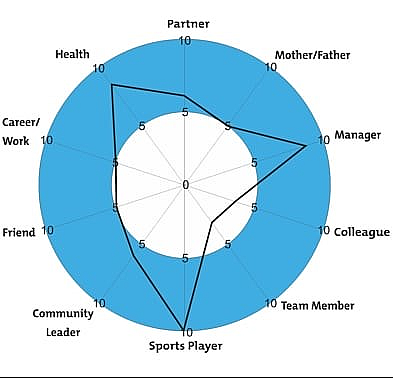
The next step presupposes that you’ll be happy and fulfilled if you can strike the correct balance in each of these areas. Consider each dimension in turn, and on a scale of 0 to 10, write down how much attention you’re giving that part of your life, and place each score on the wheel’s proper spoke. Connect the dots you formed all the way around the circle now. Do you have a well-balanced life wheel?
What Are Your Priorities?
You may start prioritizing once you’ve determined where you spend your time. Consider your ideal level for each of the defined dimensions using the Wheel of Life paradigm. Remember that living a balanced life does not imply achieving a perfect score in every category, since some dimensions need more attention and effort than others at any one time. “What would be the optimum level of attention for you in each area?” ask yourself. Then, on your wheel, plot those spots as well.
Consider what needs to be done right now against what can wait or perhaps be done by someone else. When everything on your to-do list looks to be significant, it’s challenging to get everything done. We are surrounded by urgency. Urgent activities appear vital and as if they must be completed immediately, but this is not always the case. Checking your business email from home is an example of this. “Is it important to check my mails at this time?” ask yourself. “Will this activity obstruct a task I had planned with my family or friends, or even for myself. If you absolutely must check your inbox, think out how to make up for what you’ve missed. After that, figure out what exactly is causing you the greatest anxiety. Do you ever wake up in the middle of the night with a heavy burden on your mind? Something like that should almost certainly be a top priority. The longer it stays in your memory, the more likely you are to lose track of everything else.
Working in a stressful atmosphere or spending the majority of your time tending to the needs of others can have a huge influence on your personal life as well. Indeed, some people devote so much time to others that they are unable to do their own tasks. They accept that they will have to come to work early and stay late after everyone else has gone home in order to complete their own tasks. That has a significant impact on both job and personal life. When you get home from work, you’re so frustrated and burned out that all you want to do is get out. And if this happens frequently, you will miss out on vital things at home until they become necessary.
After all, without a sense of urgency, it’s easy to put things off. “Today’s work was quite stressful, so I’ll just workout tomorrow.” However, putting it off will just make things worse. These missed opportunities will eventually catch up with you, and you will experience the same stress and pressure at home as you did at work. It spirals out of control. When faced with these types of dilemmas, concentrate solely on the positive outcomes of the activity in question – both immediate and long term.
Putting Everything Together
So, when you’ve determined what’s genuinely important, what’s next? The Wheel of Life work-life balance assessment requires you to take action, and one of the finest things you can do is make a task list. This should include activities from every facet of your life. You don’t want to forget about an important family occasion because you didn’t write it down on your to-do list. It’s also vital to carry the list with you wherever you go so that you can complete one of your duties whenever you have free time.
Consider your prioritization list. Delegation is crucial in this situation. When you try to accomplish everything yourself, work-life balance becomes a bigger problem. It’s important to remember that it’s not about how much time you spend at work versus how much time you spend at home. In all aspects of your life, it’s about being “you.” What are your core beliefs? What can you do to incorporate your passions into your regular activities? To better achieve the balance, values such as having a strong work ethic, inspiring trustworthiness, and demonstrating consideration for others can be brought out in many areas of your life.
So, the next time you’re attempting to balance work and home life, take a step back and consider your beliefs, take stock of where you spend your time, and start prioritizing what’s genuinely important. This realization will protect you from juggling the unimportant and will lead you to a more balanced and fulfilled existence.
When Your Boss Knows How to Assess Performance, It’s Easier to Strike Balance
When thinking about the most essential work-life balance advantage for workers, the most significant benefit isn’t even a benefit. Of course, childcare, flexible scheduling, and family leave policies are vital, but the best thing we can do to support working parents (and all workers) is to improve one of the most basic and underutilized managerial functions: performance reviews.
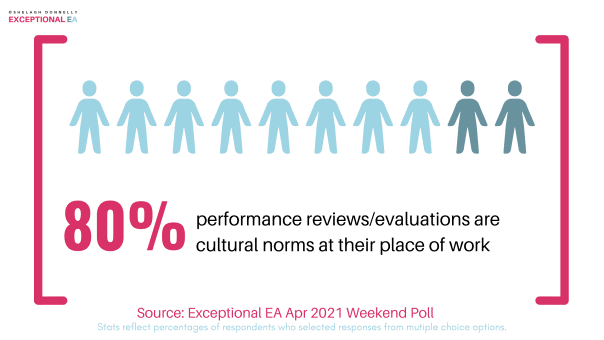
Performance reviews terrify most managers, and employees despise them as well. There are the typical gripes about how long they take to finish, how subjective they are, how infrequently they occur, and so on.
Furthermore, it’s difficult to determine how well people are functioning when it comes to knowledge work, but it’s very easy to monitor the quantity of work and work hours in the office. As a result, “chair time” and “face time” become important factors, although they shouldn’t be treated as paramount. When a boss is unsure about identifying performance, though, they generally take the simpler route.
Many managers use face time instead of actual work performance as a metric, but they rarely confess it. That’s why, rather than chair time or face time, the best thing managers can do for all of their employees — especially those with work-family issues — is to do the hard work of genuinely evaluating performance.
When managers do this, employees are free to organize their work life in order to be the most productive. Surprisingly, when you concentrate on quantifying face time, you get…face time. However, when you concentrate just on performance, you will achieve superior results.
Performance Reviews Done Right: A Case Study
Ryan, LLC, has been widely praised (and rightly so) for transforming a successful but unduly time-intensive workplace into an even more successful firm that now combines its high-performance culture with a respect for time flexibility.
It achieved this transition through a series of modifications over the course of a decade, with its new performance evaluation system serving as the core intervention. Ryan now has managers, employees, and teams construct a set of agreed-upon performance indicators that are routinely tracked, rather than sporadic, subjective evaluations focused mostly on “time on task.” Managers at Ryan do not measure office hours as long as these KPIs are met, and clients and coworkers are satisfied with their access to staff. When Ryan made the modification, it was discovered that certain employees who had been getting excellent ratings by working 70-hour weeks were less productive than those who worked fewer but more efficient hours. Turnover dropped dramatically, while employee satisfaction, engagement, and financial performance rose.
Not every business can transform in the same manner Ryan did, at least not in the short term. However, some of the essential modifications do not necessitate a complete revamp of your company’s performance management system. They’re little adjustments that most managers can do on their own.
And modifying how we evaluate is at the heart of effective management. Consider how much more competitive your entire company would be if managers:
• Defined success based on customer satisfaction, core activities, or project completion.
• Held regular goal-setting and feedback sessions with staff, with goal achievement serving as the foundation for performance review.
• Recognized which portions of employees’ employment lend themselves to flexibility and which must be completed at established office times.
• Provided more flexibility in how, when, and where work is completed, while ensuring that sufficient time is spent in the office to foster communication, cooperation, and innovation.
• Employees who perform effectively and develop trust are gradually given more freedom and flexibility.
• Recognized that in professional settings, we can maintain or even improve performance standards while letting go of how work is completed.
We empower all employees to create schedules that work best for their success at work and at home by making some of these modifications. Working parents will certainly benefit from this, but other employees will benefit as well — and their organizations will profit in terms of engagement and performance.

Course Manual 2: Self-Awareness
What is self-awareness?
According to Badal and Streur (2012), self-awareness — a conscious understanding of one’s own character, feelings, motives, and goals – plays a significant role in the success of an entrepreneurial venture.
How do I ensure that my business succeeds? is the question on every entrepreneur’s mind. Lack of information, expertise, and skills is one of the issues that contributes to business failure. This frequently leads to company mismanagement, poor decision-making, and, ultimately, the inability to sustain the business.
Entrepreneurs put a lot of money into their firms and take risks in order to establish profitable companies. More emphasis is sometimes placed on technical and business management skills, but a lack of business knowledge and competence is simply one of the elements that contribute to SMME failure.
Lack of self-awareness and development is another significant factor that is rarely discussed. Because SMMEs are vital and contribute to economic growth, we must continue to discuss their issues in order to finally figure out the success recipe. The first step in establishing yourself as an entrepreneur is to have a strong grasp of who you are.
Some of the reasons why self-awareness is so vital for entrepreneurs include:
• Your business relies on you as an entrepreneur – knowing your strengths and limitations will help you utilize your primary assets and connect them with the company’s core skills.
• Self-aware entrepreneurs can accurately evaluate others, which helps them connect their team’s skills to the business.
• Successful entrepreneurs understand how to harness their inner strength.
• Self-awareness allows you to establish an authentic personal brand.
The business resembles the entrepreneur’s personality, thus if you want to succeed, the path begins with you.
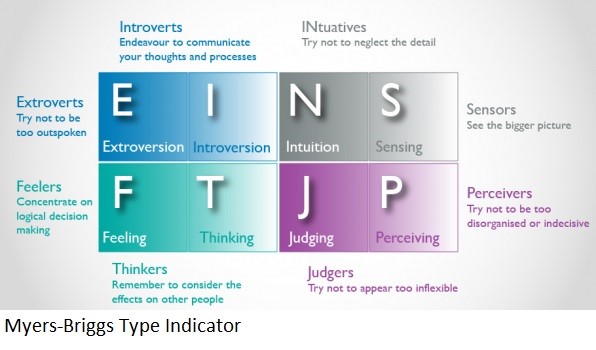
Work-life Balance
As previously said, being an entrepreneur can present a unique set of obstacles, including long hours, stress, restricted financial flow, and the need to prioritize your business over everything else in your life.
Despite this, as the most precious asset in your company, you must maintain your health, fitness, happiness, and mental stability (yes, mental stability!) at all times.
This is frequently easier said than done due to the constant challenges and expectations of entrepreneurship. It can be difficult not to drive at 100 miles per hour – or to realize you’re doing so until you strike a stone wall!
Self-awareness is essential here as well. By listening to your body and mind, recognizing when you’re struggling, recognizing when you need sleep, and, more broadly, prioritizing your health and wellbeing, you’ll be acting in the best interests of your company, despite how it may feel.
Becoming more self-aware
1. Be more aware of your surroundings
Make an effort to be more aware of how you act, why you act the way you do, and how others react to you and the decisions you make.
2. Schedule time for introspection.
Make everyday self-reflection a habit. If this isn’t already a part of your daily routine, don’t expect it to happen on its own; instead, you’ll need to plan ahead, set apart time, eliminate distractions, and reflect on your day and activities.
3. Keep a journal
We are prone to forgetting as humans. We also have a tendency to alter our memories of the past in light of the present. As a result, keeping a journal/diary of significant events, difficulties, triumphs, and decisions can be quite beneficial.
4. Write down and revisit your objectives
Self-awareness is having a good grasp of your goals, anxieties, and motives. Make a list of these, set them aside, and come back to them later (what do you think of the individual who wrote them?).
5. Maintain a sense of objectivity and humility.
This is at the heart of the problem. You must be able to objectively evaluate yourself and your activities, which necessitates taking a step back, honestly assessing yourself, and accepting that you will suck at times!
Keeping the Socratic paradox in mind — “I know that I know nothing” — will aid you here.
6. Obtain feedback
Ask for input from the people around you on a regular basis, both at work and in your personal life.
7. Take a test.
Taking a personality test might assist you in developing an organized and objective approach to learning more about yourself.
The majority of people use a personality test to learn more about their strengths and limitations. Examine yourself to see what you’re good at and what you truly enjoy doing, and see where your talent and passion meet. While taking a personality test, remember to ask yourself the following questions:
• What is your company’s mission statement?
• What are you in charge of?
• Are you putting in enough effort?
• What is your level of commitment to your job?
• Are you blaming your failures on personnel or external factors?
• Do you share your knowledge with your coworkers?
The Myers-Briggs evaluation, the Predictive Index, the DISC assessment, the StrengthsFinder assessment, and the Entrepreneurial Aptitude Test are just a handful of the more popular assessments.
Finally, whether you’re self-reflecting, keeping a journal, getting feedback, or taking a test, make sure you’re self-aware enough to embrace whatever it has to say about you!
It Takes a Lot of Effort to be an Entrepreneur
You’ll work longer hours than you thought imaginable to get your business off the ground, and you’ll take on more duties than you ever imagined. Sure, it can be extremely rewarding — but you must exercise caution to avoid burnout. Recognizing the subtle symptoms that you’re on the verge of it is the first step.
Long hours of arduous work are probably nothing new to you as an entrepreneur. After all, it’s what you agreed to when you decided to start a company based on your passion.
However, as much as you undoubtedly enjoy your job, you must exercise caution. Because of the nature of your employment, you’re more prone to burnout than someone with a typical career. Long hours, social isolation, job insecurity, and a lack of safety nets all contribute to a perfect storm of stress and anxiety.
Recognizing the early warning signs is the first step in avoiding the burnout that comes with all of the above. The sooner you recognize what’s coming, the more prepared you’ll be to handle it.
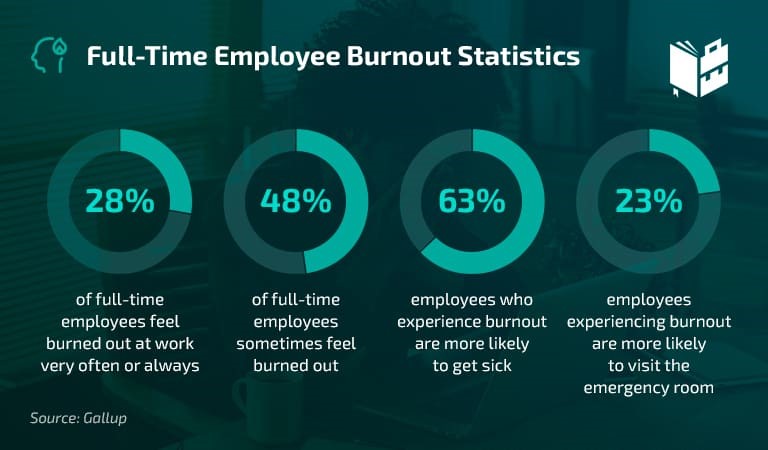
1. You’re working longer hours – and you can’t seem to stop
In the early stages of burnout, an entrepreneur may have a nagging feeling that something is amiss, but they are unable to pinpoint what it is. All they know is that everything they used to do seems to be taking longer. As a result, they put themselves wholeheartedly into their work.
Perhaps you’ve become fixated on showing your worth to clients. Perhaps you’re trying to rekindle your old zeal by taking on more work than you can handle. Perhaps you’re simply overdoing things to avoid dealing with personal issues.
Working unusual hours, having difficulties resting during your break, and neglecting your physical and emotional needs for your job are all signs that you’re on the approach of burnout.
2. You’re exhausted all of the time
It’s no secret that most folks in North America are caffeine addicts. There’s no doubt that if an employer got rid of the office coffee machine, there would be a backlash. After all, most of us wouldn’t be able to operate without a daily cup of coffee.
That’s a problem, but it’s not one we’re discussing right now.
When you feel drowsy even after a couple cups of coffee, you’ve crossed the line into burnout land. When you’re tired regardless of how much sleep you get each night. When you’re depleted of energy despite your best efforts.
Permanent exhaustion is a sure warning that something needs to change before everything goes to hell.
3. There seems to be something wrong with you all of the time
Do you seem to be sick all of the time? Do you ever feel as if you’re jumping from one disease to the next? Do you have the feeling that your body is more like a rusted old junker than the well-oiled machine it should be?
It’s probably because you’re stressed – to the point that you’re about to burn out.
Your body and mind are more closely connected than you would think. When you’re under persistent stress, you’ll soon become exhausted. It not only weakens your immune system, but it can also cause problems with a variety of physical systems, including, but not limited to:
• Headaches
• Chest pain
• Sore muscles
• Stomach problems
• Higher blood pressure
• Weight gain
Basically, if you’ve been feeling physically unwell recently and can’t figure out why, it’s possible that you’re overworked.
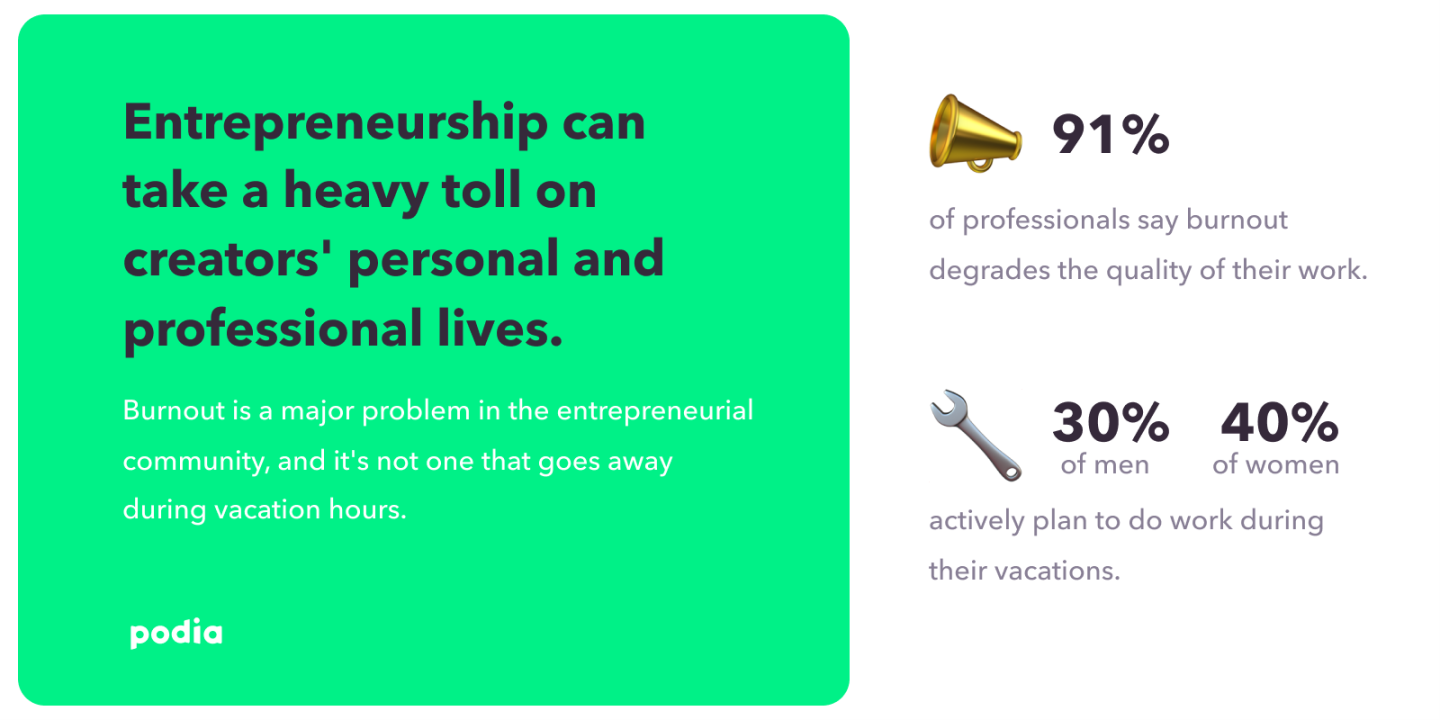
4. You’re irritated and bored
It was a passion project when you first launched your company. You couldn’t wait to get started on your work when you woke up in the morning. It boosted your confidence and energized you like nothing else in your life.
The honeymoon has come to an end. Your job used to excite you, but now it fills you with a mixture of dread and boredom. Sure, you still get a jolt of inspiration now and then, and you occasionally enter a flow state.
However, such encounters are becoming increasingly rare.
It’s aggravating, and it starts to spill over into other aspects of your life. You’re being irritated by stuff that would normally not bother you. Your mood starts to spiral out of control, and you begin to feel like you’re riding a twisted emotional roller coaster.
5. You’re unmotivated and forgetful
Procrastination is sometimes misunderstood as a sign of laziness rather than a symptom of something more serious. Something is definitely wrong if you’re starting to forget deadlines you’d normally remember and putting off work you know needs to be done. At this point, you’re no longer in the early phases of burnout.
You’ve reached the brink of the cliff. Procrastination will eventually give way to anxiety. That anxiety will lead to further tension, and that stress will finally become unmanageable.
What can You do to Avoid Burnout?
Right. Let’s wrap things up now that you know what to look for by talking about ways to reduce stress and reclaim your passion, energy, and productivity. It’s not as difficult as you would think, because it entails a combination of mindfulness and self-care.
• Before going to bed, limit your screen time.
• Create a schedule that works for you and allows you to get a solid eight to ten hours of sleep each night.
• Get into a regular fitness routine. Find a physical activity that you enjoy and perform it for at least half an hour every day.
• Schedule work-life balance into your overall career and actively make time for friends and loved ones. When you’re not at work, set appropriate boundaries and disengage.
• Eat healthily and on a regular basis. Don’t forget to eat breakfast.
• Try meditation to help you redirect your thoughts.
• Keep an eye out for potential stressors, and take a step back on a regular basis to assess how you can relax more effectively.
• Keep caffeine to a minimum.
Of course, everyone is different, so there are a variety of additional factors that can assist you in finding balance in your life. As a result, have an open discussion with your family and friends about it. They’ve likely been through (or are presently going through) similar situations and can offer helpful advice.
If you recognize yourself in any of these 5 subtle signs, don’t dismiss it; instead, start thinking about how you can adapt. Mental health is frequently ignored, which is an issue. Your days as an entrepreneur will be packed with a variety of tasks and responsibilities, but there will be times when you need to stand back and focus on yourself. Trust us when we say that your company will have a considerably better chance of long-term success.

Course Manual 3: Level of Expertise
Assessing your level of expertise as an entrepreneur is an essential step in the Baseline Assessment stage of this programme, to ensure that you are fully equipped and prepared to achieve your business goals, and ultimately balance your entrepreneurship.
Getting Past the Start-up Stage
It’s easy to imagine the founder of a successful company as a natural Risk-Taker, someone who is driven by unfettered determination and fiercely independent, with complete autonomy and control over all elements of their company. Many entrepreneurs labor alone to bring an idea from concept to reality, identifying possibilities, accumulating resources, forming networks, creating goals, and implementing strategies, among other tasks. The prevalence of other talents that drive entrepreneurial success, as well as this jack-of-all-trades approach, play a large role in the odds of survival for first firms.
As their company grows, however, founders will always face a managerial challenge: A quickly expanding business necessitates skill sets that go beyond the entrepreneur’s. Suddenly, the founder must find the proper people, put together a team, and manage them. Perhaps the entrepreneur founded their company because they saw a product-market fit or a way to innovate in an established market. However, in order for the firm to succeed, the entrepreneur must work efficiently on the business rather than intensely in it. If this is not done, the venture’s success may be jeopardized.
You should constantly aim to be the best you can be, regardless of what you do for a living. For some, this means sustaining a healthy lifestyle; for others, it means actively seeking personal transformation in order to achieve the lifestyle they desire.
The majority of business owners fell into the latter type. Entrepreneurship is a never-ending battle for success, but the better an entrepreneur is — the more developed their talents, the broader their knowledge — the less arduous the battle becomes. Because their ability immediately connects to the fitness of their business, business owners benefit a lot by investing time and energy in self-assessment and personal growth. Owners who strive to be their best set a good example for their employees, highlighting the need of constant self-improvement.
You should commit to better yourself in real ways as an entrepreneur or small-business owner. It isn’t difficult to find methods to change; it is taking the first steps toward change that is challenging.
8 Ways to Improve Your Entrepreneurial Skills Proactively
1. Make contact with other entrepreneurs
Twitter is an excellent place to begin. It’s ideal for keeping an eye on what others are up to and identifying essential people because it’s a real-time platform.
You may also use lists to narrow down what you see. Create a list containing hashtags on topics relevant to you. Make a new one with great entrepreneurs you respect, or one with competitors.
After that, join an entrepreneur group. Upskilling platforms are available for free and for a fee. This allows you to connect with other entrepreneurs who are in the same stage of their careers as you. They could even be attempting to solve the same issues. To get started, all you need is a quick internet search.
2. Join online communities in your field
Sara Zailskas Walsh, a Google UX Writer and Content Strategist, recommends a platform called Content Strategy. So far, it appears to work by posing questions to the community. Members respond with their own unique perspectives and potential answers. If you’re a solitary practitioner, this type of partnership is invaluable. Look for these groups and introduce yourself.
You could always start one if there isn’t one already. It’s a sure-fire way to learn rapidly if you volunteer to run it, whether it’s a monthly meetup or an online event.
3. Practice resilience
Things that don’t work can teach you a lot. Challenges arise, and if things don’t go as planned, you must figure out why so you don’t repeat your mistakes. Regular retros that examine what went well, what didn’t, and how to solve problems can aid in the documentation and mitigation of risks. Standing up, dusting yourself off, and trying again has a noble quality to it.
4. Better Time Management
There are many methods to stay busy without achieving your objectives. You may have dozens of tasks as an entrepreneur, but if you don’t manage your time efficiently, you won’t get anything done. Successful business owners recognize that finishing some tasks ahead of others assures that their company will continue to grow in a positive direction.
To improve your time management skills, start by determining what actions are required to maintain your company’s forward motion. Then you can fill in smaller activities that are required but do not require immediate attention. Finally, you should learn how to check items off your to-do list that aren’t important, delegate responsibilities, and otherwise lessen your load so you can focus on what matters.
5. More Book Reading
Reading is more than a boring activity assigned by teachers in elementary school. Reading enhances your concentration and focus, as well as your reading comprehension and communication abilities. You don’t have to read fiction to improve your leadership skills; there are literally thousands of books about entrepreneurship available, including books on business strategy, finance, and marketing.
There are many wonderful books people mention in passing conversation. Anything you learn about entrepreneurship through coworkers, Ted Talks, chats, and conferences can help you improve your talents. Make a list of everything you want to do. Then gradually work your way through them, either reading or listening to them.
6. Taking Related Courses
However, if you need additional guidance in your entrepreneurship education, classes are the way to go. As an entrepreneur, you must always learn new things. Look for courses in your field of interest (think about your strengths and weaknesses to spot gaps). Conferences and events, seminars, and meetings are all great opportunities to improve your skills while meeting new people.
You might be able to find appropriate skills courses at local community colleges, but if fitting education into your already hectic schedule is a challenge, you should investigate online education. Hundreds of business-related classes are available online, including AACSB-accredited online MBA programs. Online classes give you the flexibility you need without sacrificing quality, allowing you to study as much as you need while still running your business.
7. Putting Your Social Skills to the Test
It doesn’t matter if your company is consumer-oriented or in the service industry; as the owner and leader, you are the company’s spokesperson and primary communicator. That implies you must be at ease in social circumstances, as well as proficient in spreading the word about your company.
People skills are developed and honed in the same way that any other talent is honed – through practice. You should use every opportunity to flex your social skills when sending an email, making a phone call, or having a discussion. You may learn the habits of good speakers and use them in social situations, as well as solicit feedback from friends and family to help you avoid conversational blunders.
8. Setting Aside Time for Rest
Your business should not consume every second of every day. Entrepreneurs are particularly vulnerable to burnout syndrome, which is characterized by physical and emotional exhaustion that prevents productive work. As a result, you must find a way to unwind and re-energize, which always begins with rest. You may go to the gym, watch a movie or two, or play with your children. You are resting and improving yourself for another day of work as long as you are not thinking about your business.

Why is it critical to evaluate your company’s progress?
It’s all too easy to get caught up in the day-to-day operations of your company, especially in the early stages. Once you’re up and going, though, it can be beneficial to consider longer-term and more strategic planning. This is especially true if you hire more people, create departments inside the company, appoint managers or directors, and distance yourself from the day-to-day operations.
Reviewing your progress will be especially beneficial if you:
• unsure of how well the business is performing
• unsure if you’re getting the most out of the business or capitalizing on market opportunities
• your business plan may be out of date, e.g., you haven’t updated it since you began trading
• your business is moving in a direction other than the one you had planned
• the business may be becoming unwieldy or unresponsive to market demands
It’s also useful if your organization has opted to advance to the next level. A well-thought-out business strategy will assist in addressing any issues and demonstrating actual solutions.
You could ask the following questions:
• What’s my plan of action? To answer this question, consider where you are now, where you want to be in three to five years, and how you want to get there.
• What are my current and potential markets? Which markets should I compete in, how will they develop, and what does my company need to be a part of these industries?
• How can I obtain a competitive advantage? How can the company outperform the competitors in my target markets?
• What are the resources I’ll need to succeed? To compete, what talents, assets, finances, relationships, technical knowledge and resources do I require? Has anything changed since I first started?
• In what kind of business environment do I compete? What external factors might have an impact on the company’s capacity to compete?
• How will I know whether I’ve succeeded? Keep in mind that as your company grows, your performance metrics may alter.
It’s unlikely that you’ll be able to answer these questions on your own; enlisting the support of your professional advisers, fellow directors, and senior staff will all contribute to a more effective assessment.
Seek Advice Early and Often
Rather than being written down, much institutional information is held in our heads. Not every brilliant thinker has time to sit down and write a book on all the things they’ve learnt over the years, let alone try to find someone with whom to share their knowledge. That experience is a critical link in the cycle of information transfer, which might be jeopardized if mentorship doesn’t develop.
As an entrepreneur, you’ll come across thousands of scenarios that others have experienced, fought with, and triumphed over. When you meet them, talk to them and gain from their decades of experience and wisdom. That is something you will not be able to find anyplace else.
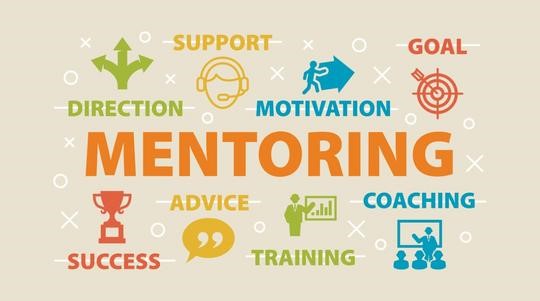
Finding the appropriate mentor, on the other hand, is easier said than done. The relationship necessitates the same level of trust and chemistry found in intimate friendships, as well as your willingness to share some of your most private worries. A 15-minute coffee talk could result in a lifetime of important advice.
Keep in mind that your mentors’ personality will not always be the same as yours. In fact, I believe that some of the most effective mentors will have very diverse thoughts and viewpoints. It’s critical for your development as an entrepreneur and as a person to seek out people who can help you solve problems in new ways. If mentors offer advice that differs from your own, don’t be angry or discouraged. Experiment with them and take in the bits that are effective.
Any entrepreneur who wants to create big and think fast needs mentorship. Look for individuals who can assist you with this. A piece of advise can make all the difference.

Course Manual 4: Goal Commitment
Make use of your review to rethink your company’s objectives
It’s critical to set aside time on a regular basis to ask the following crucial strategic questions if you want to be successful:
• What is the current state of the company?
• What’s the plan?
• What will it take to get there?
Often, enterprises might figure out where they want to go but fail to plan out a path to get there. If this happens, a company will lack the direction it needs to make even the most well-thought-out plans into reality.
As a result, at the conclusion of any review process, it’s critical that work plans and a timeframe be developed to implement the new ideas. It’s also crucial to keep an eye on how the new strategy is going and to allow for any teething issues or necessary revisions on a regular basis. Because today’s company environment is so dynamic, it’s likely that you’ll need to evaluate, update, and revise your business plan on a regular basis to stay on track.
Improvement is Ongoing
Furthermore, a simple planning cycle can substantially improve your ability to make critical changes to your work routine. Planning ahead of time allows you to anticipate problems and respond to change more quickly.
Expert advice
You may find that at this point in your company’s development, you require outside assistance with the changes you must make. In this scenario, you might want to think about:
• appointing an experienced non-executive director who can provide a regular, impartial assessment of what you’re doing
• employing skilled consultants in areas where you cannot afford to develop inhouse skills
• using a management consultant to help you identify how you can strengthen or change your management structure to grow the business
The Entrepreneurial Mindset and Effectuation
Professor Saras Sarasvathy of the University of Virginia Darden School of Business’s widely regarded 2001 paper “What Makes Entrepreneurs Entrepreneurial” looked at what successful entrepreneurs do rather than the characteristics we believe they have.
She accomplished this by assigning a short business case to a group of successful entrepreneurs. She discovered common thought processes and patterns of behavior among successful entrepreneurs as a result of this research. The now-famous five principles of effectuation were discovered:
Affordable Loss Principle – Set affordable loss; don’t focus on expected profits.
Bird in Hand Principle – Start with the means available.
Lemonade Principle – Look to leverage surprises, even unwelcome ones.
Pilot in the Plane Principle – Control the controllable.
Crazy-Quilt Principle – Form partnerships with willing stakeholders.
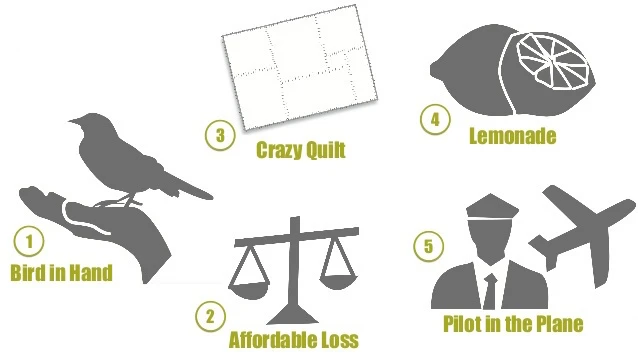
In reality, the basis of effectuation theory is a collection of common-sense rules for reducing uncertainty and risk. Anyone can learn it, and it may be used in a variety of situations and startups. It’s a more scientific approach to developing a successful entrepreneurial attitude, and it’s beneficial to learn.
Work-Life Balance
Employees today recognize the value of achieving a healthy balance between work and other aspects of their lives.
Work-life balance has been linked to increased productivity, enhanced performance and competitiveness, higher morale, and lower levels of stress, absenteeism, and sickness.
Action Checklist
1. Determine what the needs of employees are and how well they are being met.
Find out what kinds of work/life balance issues your workers are dealing with. You might think about your personal situation. Examine the impact of home commitments on work absence as well. Exit interviews can be conducted to determine whether work-life balance concerns are causing employees to leave. Set up focus groups or conduct surveys, explaining why you’re doing so and keeping track of the results.
Keep in mind that different things are important to different people, and their priorities are likely to differ. Flexibility may be valued by one individual due to caring obligations, while flexibility may be valued by another due to study commitments. Any individual’s ideal balance will shift during the course of their career, and maybe in the short term. It could be to accommodate school holidays or based on the level of assistance they receive.
2. Create a business case
Use your findings to determine what kind of measures might improve your workers’ work-life balance and to develop a business case for enhancing work-life balance that can be linked to the bottom line. To bolster your argument, use the findings of independent research. Inform significant people inside the organization, as well as interested parties such as staff associations and trade unions, about your proposals. Employee participation in conversations from the start can assist overcome opposition to change, as will ensuring that your work-life policy is inclusive and beneficial to everyone.
It is critical to determine the financial resources and key employees required to develop and maintain policies and programs before moving forward. At the same time, consider the costs of not providing flexible arrangements, such as the loss of important personnel, recruitment and training expenditures, and so on.
3. Pay attention to your company’s culture.
Every work environment has its own distinct culture. Work-life balance programs must be compatible with the existing organizational culture in order to succeed. Consider your organization’s goal, mission, and values, and how programs to support work-life balance might be connected with these. Focus on creating connections between proposed measures and values – keep in mind that people work not just for the money, but also for the joy of contributing to a common goal. Make sure employees understand why they’re doing what they’re doing and how it contributes to the company’s goals.
Flexibility, new work techniques, empowerment, and trust must all be part of your company’s culture. Flexible working arrangements require trust between managers and employees, as well as a desire to empower individuals to work in the ways that best fit them.
While managers will naturally want to ensure that such agreements are not exploited, employees must believe that they can rely on one another to get the job done. Instead of focusing on inputs or presenteeism, the focus should be on outputs and outcomes, i.e. performance and results. Trust is a powerful motivator, and introducing flexible or home working provides an opportunity to demonstrate that you trust your staff, enhancing relationships and intrinsic motivation. Those who work from home may not work normal office hours, but they are frequently motivated to put in extra effort or time. Managers must also lead by example, incorporating work-life balance into the culture of the organization at all levels, not just the lower ranks.
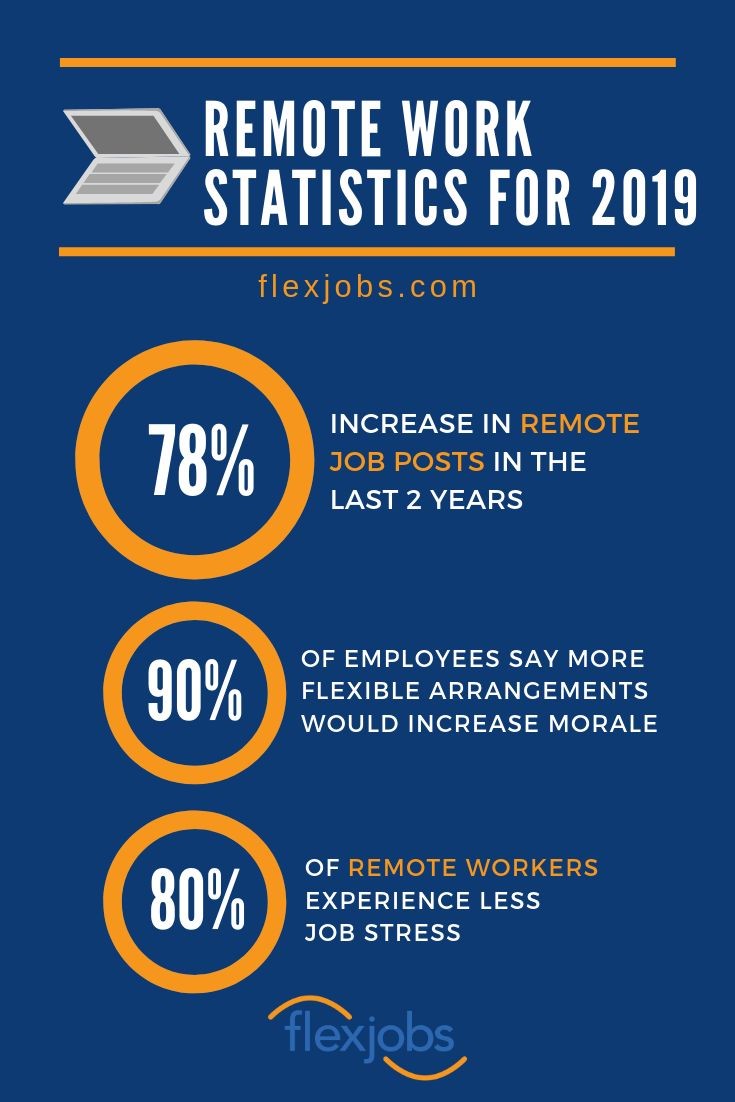
4. Think about your company’s structure
Examine the structure of the company to see if it promotes or hinders work-life balance. A traditional hierarchy with a command-and-control approach to management may make implementing new measures to enable flexibility difficult; in such cases, you’ll need to make a strong case for change, using research evidence to demonstrate the business benefits in terms of employee retention and productivity. Flexible working techniques may be easier to implement in a flatter organization where empowered people work in teams, make decisions, and organize their own work.
5. Boost personal and organizational productivity
Assuring that employees carry out the “work” portion of the equation as smoothly as feasible is a key aspect of attaining work-life balance. Time management, delegation, prioritization, and information management to avoid overload are all abilities that can help you minimize stress and work hours while keeping a high level of productivity. Such steps could have a good impact on employees’ personal lives, for example, by removing the need for them to bring work home, or by making them less exhausted and worried when they arrive home.
Consider how you could improve your organization’s procedures and operations to decrease overlaps and inefficiencies, making workers’ work life less hectic, stressful, or weary. Consider the potential that in flatter, less hierarchical organizations, some employees will be able to take on more tasks, allowing others to work less.
6. Think about your possibilities
There is no one-size-fits-all strategy to achieving work-life balance; instead, a flexible set of policies and perks should be in place to address a wide range of scenarios.
Take into account the following:
• Flexible working hours
• Self-rostering – teams of employees negotiating and agreeing on their own hours to accommodate needs
• Annualised Hours – allowing employees to change their working hours throughout the year
• Buddy system – pair people up so they can cover for each other
• Flexible working location – remote working has its own set of issues for both businesses and individuals
• Special leave – consider a paid or unpaid leave allowance each year
• Career breaks
• Health, wellness, and employee assistance programs
• Childcare/eldercare subsidies
• Phased retirement – allowing employees to work part-time while deferring or staggering pension benefits
The elimination of the default retirement age in the United Kingdom has resulted in an increase in the number of people opting for the latter option.
7. Consider the practicality of the situation.
When selecting what policies to implement and what options to provide, try to find a balance between employee perks and the company’s operational demands. Consider the practical consequences of each proposal carefully, and consider what procedures, if any, you might need to implement to approve and oversee benefit take-up. Offering options that prove to be impracticable and must be retracted can only lead to disappointment, animosity, and a loss of confidence.
Although it may not be possible to accommodate every circumstance, a flexible benefits package may be considered. Setting out a list of priced benefits and giving each employee a predetermined annual stipend to “purchase” whatever advantages they want from the package is one approach to do this. Alternatively, certain perks could be purchased from wages as needed.
Consider what employees have to say. If a worker can make a case for a different manner of working, the suggestion should be looked at. A flexible set of policies and practices, as opposed to a rigid set of policies and practices, may be more responsive to individual circumstances. It can also improve the profitability of an enterprise.
8. Publicize the initiative and its advantages.
Success is determined not just by the policies established, but also by how they are implemented. Consider how to begin the program and which channels to use to inform everyone about the benefits, such as staff meetings, departmental and team briefings, strategically placed posters, email messages, and intranet postings. It’s important to emphasize that choosing flexible alternatives will have no impact on promotion possibilities, recognition, or other career opportunities.
Ascertain that all employees have continuing access to information about the alternatives available and are aware of who to contact if they are interested in using them. Incorporate policy and program information into staff induction programs.
9. Provide supervisors with information and training
It is critical to ensure that procedures are followed consistently throughout the organization. Line managers should be given information on the many benefits available as well as training on how to advise employees on the best benefit combinations. Work-life concerns should be addressed in annual performance and development assessments. Keep in mind that while balance cannot be “forced,” employees can help businesses choose the best solutions.
10. Assess your accomplishments
It’s critical to keep a solid worklife policy relevant and up to date in order to sustain its benefits. Measure employee satisfaction and performance, as well as criteria like staff retention rates, to measure the success of policies. You should be able to demonstrate how policies affect the company’s financial line, employees, customer pleasure, and retention. Take into account the company’s culture as well. Do not confine performance evaluation to a once-a-year assessment.
Consider holding a meeting every four months to assess progress. Careful monitoring, feedback, and adjustment will aid in the successful implementation of the policies.

Course Manual 5: Customer Perception
Employees are the backbone of any company, and it would be difficult for a company to stay competitive unless they worked happily and to their full ability. True, a corporation can replace inefficient staff; nevertheless, doing so frequently disrupts the company’s relationship with its customers, creating business damage. It would be preferable if businesses recognized the impact of employee stress on customers and business, and then took proper steps to avoid conflicts, unrealistic expectations, and stress.
Employees that are stressed have reduced productivity, are more likely to become unwell, take more days off, and react poorly to their coworkers and clients. All of these facts are supported by research: statistics reveal that in the United States alone, roughly half of all working days (about 550 million working days) are lost due to absenteeism caused by workplace stress. This corresponds to yearly cost losses of over $3.5 million for large corporations – clearly, this is not the way to make money!
Given these statistics, it is vital for businesses to comprehend the impact of employee stress on consumers and their operations, and to do all possible to lower stress levels among individuals who are critical to success. Employees that are worried and uncared for are unlikely to maintain a pleasant and upbeat attitude, which will reflect in how they interact with the company’s consumers. When consumers are mistreated, it can spell disaster for a business.
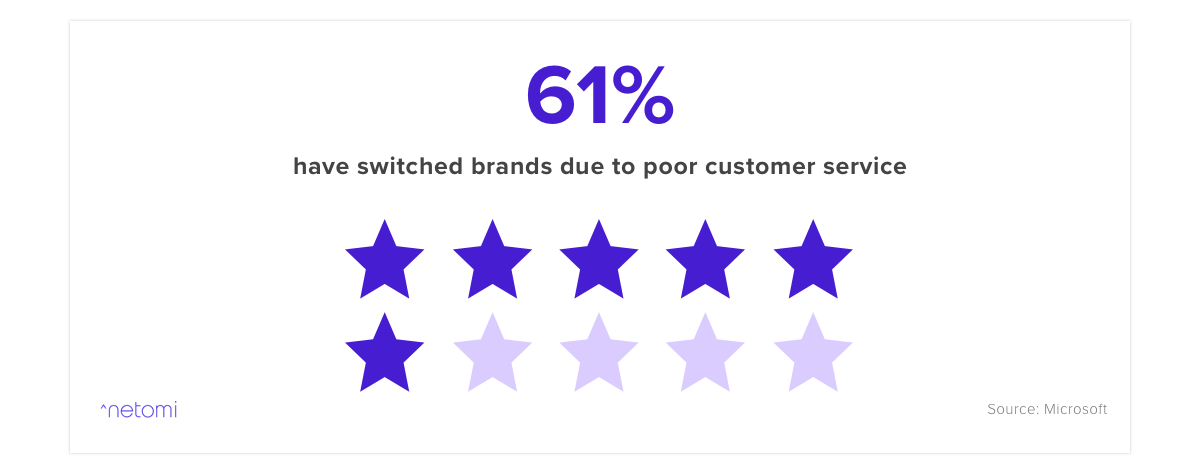
There is far too much pressure on any company to succeed, competition is increasing by the day, and the market appears to be dwindling — in such a situation, having a worried, irritated, and low-productive workforce would be counterproductive.
As a result, it is becoming increasingly important that company leaders and managers are taught and prepared to not just manage stress, but also to ‘read’ the early signals and proactively address the causes of stress and conflict.
What is the Influence of Employee Experience on Customer Experience?
The client experience is directly influenced by the employee experience: A positive experience for employees leads to a positive experience for customers, and vice versa.
This idea is supported by numerous studies. According to a Forbes survey, organizations that excel at customer experience have 1.5 times the number of engaged employees. These same firms are also more likely to create bigger returns, beating their rivals by 147 percent.
Apart from the research, this makes sense: employees who have great experiences at work (as opposed to those who merely do their job) are more productive and willing to go the additional mile. Because they respect and take pleasure in what they do, they want to do an outstanding job for their customers, managers, coworkers, and themselves.
You only have to look at the numerous top organizations that follow the motto “people first and the customer experience will follow” to see that this is true. Take, for example, Starbucks. They consistently rank at the top of customer satisfaction surveys and provide competitive pay, stock options, training, and health benefits to their employees.
Consider Marriott International. “Take care of associates, and they’ll take care of your customers” J.W.Marriott once stated. They make employees feel valued, offer many different training programs, respect diversity, and even publicly award their employees as a firm that is consistently top-rated for customer service and as a place to work.
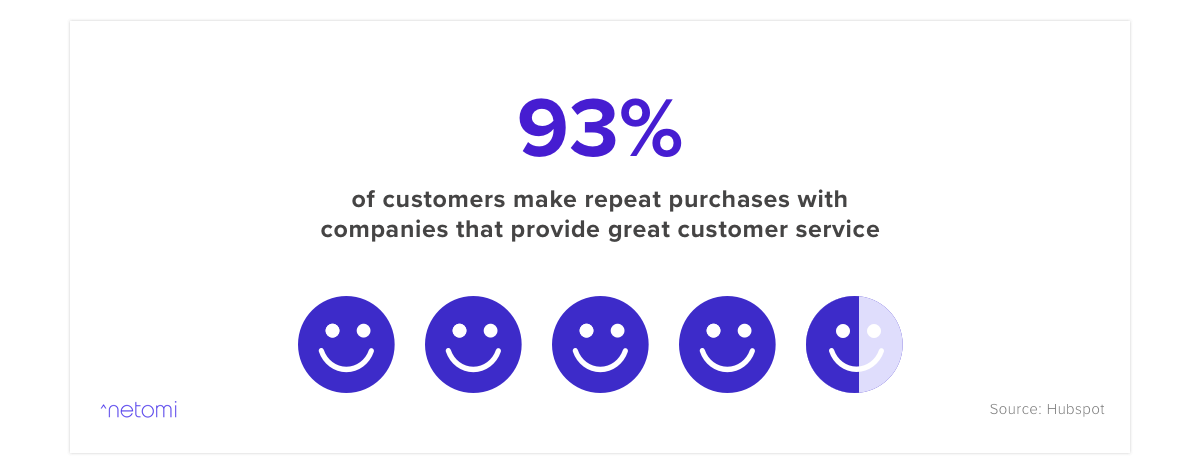
Understanding the Effects of Burnout on Employees and Customers
Burnout was always a major worry, but when the epidemic struck in 2020, it became even more so. Burnout was common as millions of people lost their jobs and financial security, all while dealing with the realities of staying safe from a virus. With no signs of abating, we are currently in the midst of a burnout epidemic.
But, what exactly is burnout? What effect does it have on Employees?
Burnout — it’s an Occupational Phenomenon
Burnout is a work-related illness induced by mismanaged stress. Among the signs and symptoms are:
• Physical and emotional tiredness
• A mental disconnect from or bad attitudes toward one’s job
• Reduced workplace performance and professionalism (simple tasks often become difficult to do)
Burnout: a Multi-Faceted Construct
Burnout has three basic dimensions, according to Maslach (1978). The first, emotional weariness, describes how people feel when they are stressed. It includes sensations of exhaustion, weariness, and a lack of energy. The second aspect of burnout is depersonalization, which is the interpersonal dimension. Depersonalization entails a callous and detached attitude toward service receivers, as well as a reduction in relationship investment. Reduced personal accomplishment, the third component of burnout, is characterized by a decrease in feelings of success and represents the self-evaluation dimension of burnout.
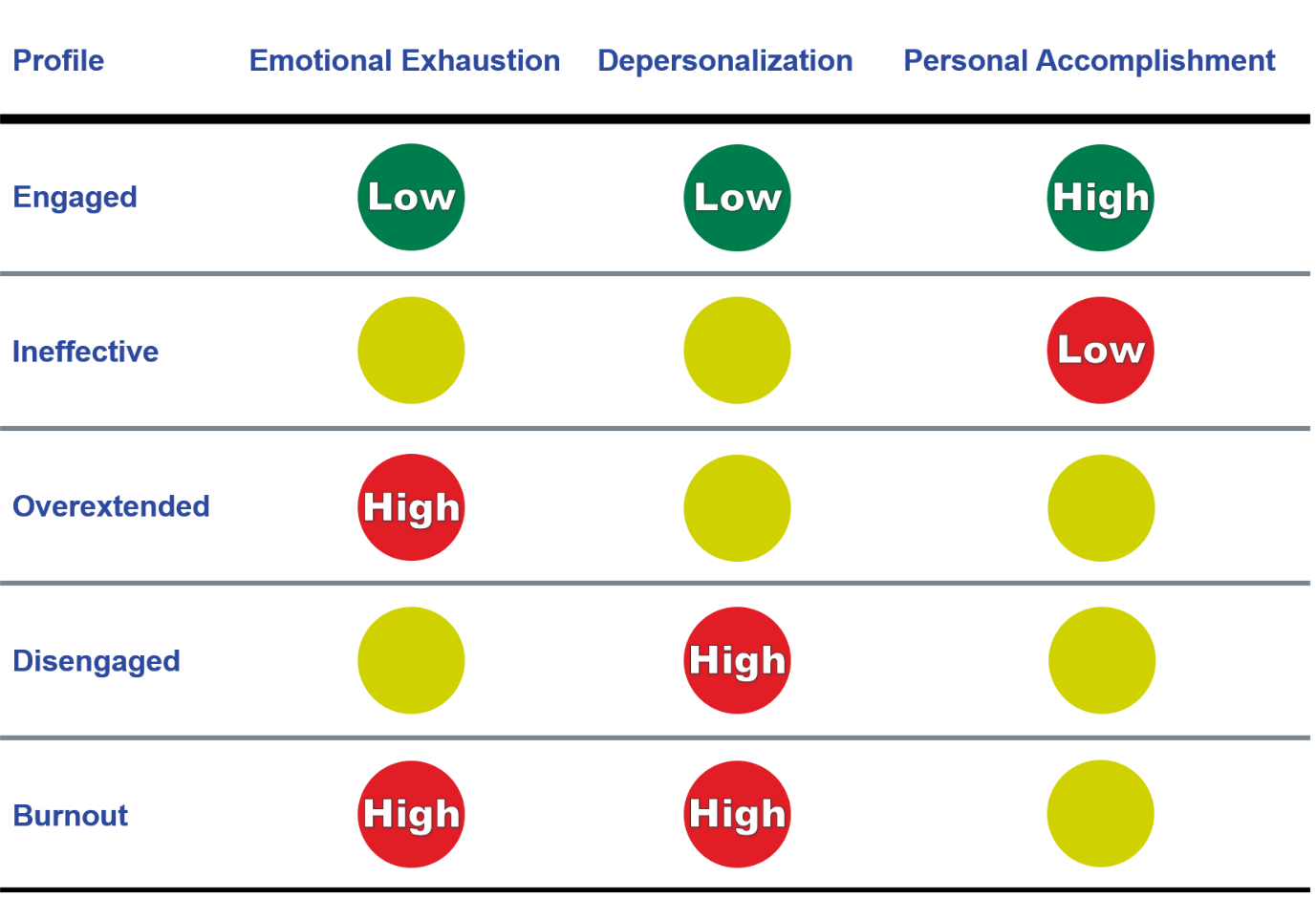
Depersonalization’s Impact on Customer Service Perceptions
People’s ability to empathize with others is harmed by depersonalization (Cordes & Dougherty,1993). Avoiding others, using jargon, cynicism, and mechanical behavior are some of the behavioral indicators. While emotional tiredness is a common side effect of stress, depersonalisation is unique to burnout and is directed at others, particularly customers (Maslach et al, 2001). “Staff lose all feeling an concerned for their clients and treat them in detached or even dehumanised ways” Maslach wrote. Customers who are the subject of depersonalisation will be affected as a result.
Importantly, as Taris (2006) points out, depersonalization does not always correspond to poor objective performance. As a result, clients may feel depersonalized by personnel while still obtaining appropriate service in terms of desired goals.
The handling of clients as objects rather than individuals is related to depersonalization or dehumanization. Workers may show attachment and emotional callousness, as well as cynicism toward coworkers, clients, and the company. The use of disparaging or abstract language is one of the visible indicators. For example, the burnt-out nurse referring to the ‘kidney’ in room 212 rather than ‘Mr Smith’ in room 212 (Cordes & Dougherty,1993). Although the hypothetical patient may have received effective and competent medical treatment, he or she may have found the relationship to be impersonal and unpleasant.
As a result, we propose that depersonalisation is a separate experience for customers that influences their opinion of service rather than a terrible service per se. Customers are aware that something is wrong in the engagement when communicating with staff that demonstrate depersonalisation, even if there is no technical fault with the service. Customers may not know the term depersonalising, but they can refer to the behavioural signs of employee depersonalization outlined in the burnout research.
What Effect does Burnout have on the Employee Experience?
As a result, burnout can have a significant impact on both staff and customer satisfaction. It has a negative impact on their whole work experience, performance, and health, as well as having a significant impact on a company’s ROI, resulting in absenteeism, poor customer service, and lower profitability.
Burnout does not discriminate between top performers and non-top performers. They might even be more prone to experiencing it. Perfectionist concerns are common among highly engaged, high-performing people, or they’re overworked and don’t look after themselves. They can be engaged but exhausted.
Learn from Small, Closely Observed Samples
In ambiguous contexts, the most in-depth learning comes from interactions with a small number of consumers rather than surveys of a large number of potential users. The latter have a lot of statistical power, but they don’t always deliver the formative insights that ethnographic approaches can. P&G has taken this approach under CEO A.G. Lafley, who requires that before launching new products, managers cease worrying about focus groups and spend time in consumers’ homes, observing them cook and clean. The average P&G marketer spent less than four hours per month with customers in 2000; by 2004, that amount had tripled.
Intuit, a company that sells tax-preparation software, uses a method called “Follow Me Home.” Employees are dispatched to clients’ homes and businesses to observe them do accounting and tax preparation duties, in order to identify pain spots that may lead to new opportunities.
Starbucks sends product development teams on “inspiration” excursions to meet customers on their own territory on a regular basis. One team, for example, visited numerous Starbucks locations and other eateries in Paris, London, and Düsseldorf, Germany, in early 2006 to gain a better understanding of local cultures, behaviors, and trends.
Nokia utilized the same approach to research how low-income individuals would use cellular phones in China, India, and Nepal. Based on the findings, the company’s developers designed an icon-based menu that allows semiliterate villagers to use cell phones. The menu consists of visuals rather than letters and numbers.
Boost Employee Satisfaction to Improve Customer Satisfaction
Investing in employee experience is a win-win situation: you’re not only assisting employees in being their best, but you’re also assisting your company’s financial line. It results in happier and more engaged staff, improved customer experiences and retention, and more profits.
That is why it is critical to develop ways to strengthen it, such as check-in meetings, a hybrid work approach, appropriate welcoming and training programs, benefits packages, and advancement chances.
Just remember not to get too attached to these techniques and to be willing to change them if necessary. It’s key to look at this as a trial and error period, not being married to our tactical solutions, and actively listening to find out what people need.

Course Manual 6: Employee Perception
During the Baseline Assessment stage of the programme, you will continue to work closely with your mentor assessing your expertise. A critical step in the assessment of your company, to ensure you are on the right track in achieving entrepreneurial balance, is to better understand how you are perceived by your employees.
It’s Good for Business to Encourage Employee Work-Life Balance
Only 41% of workers surveyed in the most recent Gallup State of the American Workplace study deemed a big rise in pay to be “extremely important” in a new job. That isn’t to imply that salaries should be wholly ignored. In reality, you must pay your employees well enough for them to be regarded, but pay is not the sole (or even the most common) reason for their retention or departure. According to studies, the majority of people resign from their jobs because of their boss. And, while it’s a huge part of it, encouraging a healthy work/life balance isn’t as simple as recommending your staff simply need time away from the office.
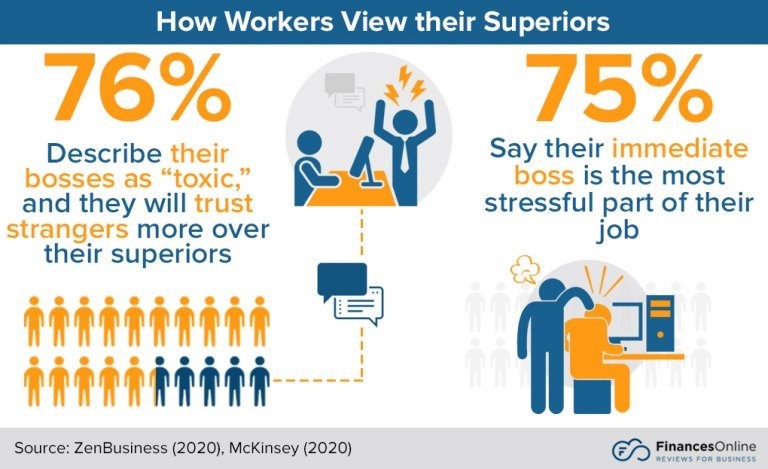
Employees who believe they have a good work/life balance are 21 percent more productive than those who do not, according to the Corporate Executive Board, which represents 80 percent of Fortune 500 organizations. Employees’ levels of engagement reflect this extra effort.
Employees who are engaged are 31% more productive than those who are not
According to the aforementioned Gallup poll, nearly 51% of the American workforce considers themselves to be disengaged and has been for a long time. According to the same survey, only 33% of employees are engaged, which is defined as “…involved in, enthusiastic about, and committed to their work and workplace.” Despite the fact that this is the largest level in Gallup’s 15-year history, about two-thirds of the workforce is disengaged. These figures should worry business owners, especially if two-thirds of your staff aren’t enthusiastic about what they’re doing for you.
There appears to be a direct link between work/life balance and employee engagement. Creating a work environment in which your workers feel like they have a life outside of work and a personal life is an important element of preventing burnout. This makes it easier for them to be involved in their work, which leads to increased productivity.
When employees have a better sense of work/life balance, absenteeism decreases, sick days decrease, and turnover decreases, all of which can have a beneficial influence on your bottom line.
Encourage a healthy work-life balance in your company
Benefits of a Better Work-Life Balance
Employing rules that encourage a healthier work-life balance for your employees can benefit both your company and your employees.
Benefits of a Work-Life Balance: Employees
A healthy work-life balance can help employees feel more in control of their careers, which can lead to:
• increased productivity
• fewer cases of sickness and absenteeism
• a happier, less stressed workforce
• employees feeling valued and that their personal and/or family lives are important
• improvements in employee mental health and well-being
• more engaged staff
• greater employee loyalty, commitment, and motivation
The Importance of Work-Life Balance
Karen Silins, president and owner of A+ Career & Resume in Kansas City, says she frequently has customers who leave their jobs in pursuit of something that pays less but requires fewer hours and intellectual power.
“Flexible scheduling is a big one,” she says, “along with work from home and good benefits. A lot of people may have a decent job but one of the biggest reasons people leave their current job is because they have a terrible boss and they want a better one. Or they wind up with too many hours (at work) and not enough time with family or friends.”
She claims that not everyone wants to be a workaholic or feels compelled to work more than 50 hours per week. Because of the high number of resignations in recent months, many businesses are left with fewer personnel doing the task of more people. Burnout can also occur as a result of this.
What is the solution? Hiring enough personnel to complete the job, giving legitimate raises, and not expecting everyone to be as committed as the CEO and leadership team. “It’s not a rocket science issue,” explains Silins. “Burnout will be less of an issue “If you have enough people doing the work and you don’t allow bad bosses to run amok”.
Businesses that promote a healthy work-life balance offer friendly cultures with open-door policies and managers who genuinely care about their employees. Silins says, “Feeling heard can be everything.” “If an employee feels heard, they feel valued.”
Flexibility in the Workplace is on the Rise
Those who are able to strike a good work-life balance frequently credit their flexible work schedules. According to recent data, many firms have given employees more flexibility with their schedules and where they work in the last seven years.
“It is clear that employers continue to struggle with fewer resources for benefits that incur a direct cost,” said Ken Matos, chief researcher and senior director of employment research and practice at the Families and Work Institute, a non-profit research organization. “However, they have made it a priority to grant employees access to a wider variety of benefits that fit their individual and family needs and that improve their health and well-being.”
Employers may benefit from flexibility in the long run. “As we look ahead, it is clear that in order to remain competitive, employers must find ways to offer flexible work options if they want to attract and retain top talent,” said Hank Jackson, president and CEO of the Society for Human Resource Management.
“Work-life balance will mean different things to different people because, after all, we all have different life commitments,” according to Chancey. “In our always-on world, balance is a very personal thing, and only you can decide the lifestyle that suits you best.”

How to be a Supportive Manager
Robert Half Management Resources presents four recommendations to help managers better support their workers’ efforts to attain a healthier work-life balance.
1. Understand what motivates your personnel. Not everyone strives for the same work-life balance. Discuss each employee’s goals with them, and then see what you can do to assist them. Some employees may find it beneficial to work remotely a few of days per week, while others may opt to change their normal work routine. It’s critical to be open-minded and adaptable.
2. Lead by example. Your subordinates will follow your lead. If you send emails at all hours of the day and night and work long hours on weekends, your employees will believe the same of them.
3. Make employees aware of their options. While organizations often do an excellent job of emphasizing their work-life balance initiatives to potential employees, the same cannot be true for current employees. Discuss the possibilities available to your personnel on a regular basis. Discuss parental leave alternatives with soon-to-be parents as well.
4. Maintain a prominent position. It’s critical to stay ahead of the curve when it comes to new work-life balance trends. What works for employees today may not work in a year’s time. Maintain the freshness of your work-life balance programs by providing in-demand benefits. Also, consider providing work-life balance programs.
The greatest method to ensure that everyone has a positive work experience is to first learn about their current condition. The seven questions below will help you identify employees whose job happiness is on the decline and whose work-life balance is deteriorating.
What’s the state of your work-life balance?
Sometimes all it takes is a simple, clear question to get to the core of what variables are contributing to or detracting from an employee’s work-life balance. Although this is the most obvious inquiry, depending on the employee’s situation or work environment, they may not be open with a response. In that instance, the following questions may be useful in elucidating an employee’s condition.
What are your thoughts about your current position in the company?
People who have a great work-life balance are more optimistic not only about their current job, but also about their future chances inside the firm. They are more engaged and hence more likely to be satisfied with their work-life balance because their personal lives are in sync with their professional lives.
How would you define the department/company etc. dynamics?
Work-life balance is influenced by an employee’s relationships with coworkers and colleagues. Even the most optimistic individual will be worn down by coming into a work environment rife with negativity and conflict each day, so it’s critical to understand team dynamics and address toxic situations before they spiral out of control.
What would you say our company’s culture is like?
In a similar spirit to the preceding question, identifying areas where your corporate culture may be lacking may help you identify areas to improve that will affect your total work-life balance. Do your staff feel as if they have a say? Do they have adequate chances to advance and grow? Is their working environment free and flexible enough? Examining your corporate culture critically can help you create an environment that promotes a healthy work-life balance.
How often do you bring work home with you?
Employees may take work home for a variety of reasons, ranging from pressing deadlines to understaffed teams. After-hours work is expected in most workplaces. However, if you notice that an employee’s professional life is taking over their personal life, they may be on the verge of burnout. Setting clear expectations about where the line between working from home and working from the office should be drawn will help relieve some of the stress. Furthermore, encouraging open communication among your staff may enable employees to address the problem before it becomes out of hand.
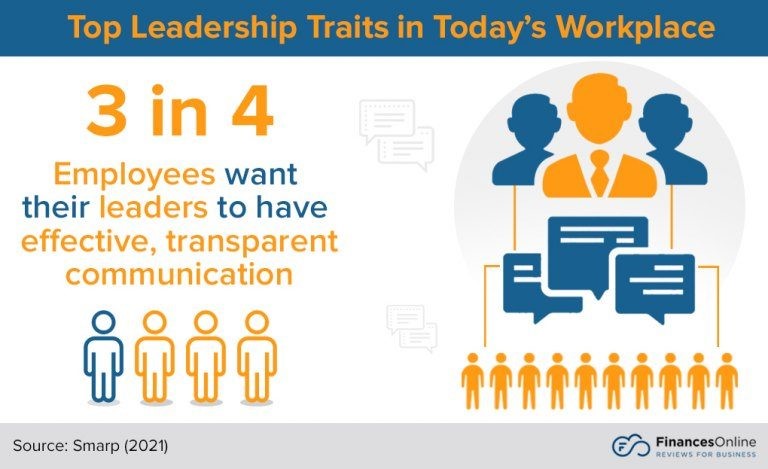
When was the last time you went on a vacation?
Every now and then, everyone needs a break from the daily grind. So, if you notice an employee with a lot of unused vacation time, you might want to inquire about if they’re receiving enough time away from the workplace. Restful employees are more productive and content with their work-life balance, according to studies, so it’s critical to encourage your colleagues to take the time off they’ve earned.
What is your ideal job, assuming no constraints?
Work-life balance will be harmed if you feel imprisoned in a career that does not correspond with your interests. Many people select a career based on their immediate needs and put off following their passion, settling instead for a means to an end, whether it’s due to family obligations, financial necessity, or economic reasons. Even the most successful employees in your firm may be dissatisfied with their jobs if they have no emotional tie to them. Knowing a worker’s “dream job” can help them achieve work-life balance by revealing methods to make their current job more meaningful.
Communication is a common thread that runs through all of these concerns. Instead of first speaking with their supervisor about their concerns, an employee will frequently leave a company for a job that offers better work-life balance. With the talent battle heating up, talented employees may be inspired by the actions taken by their employers.

Course Manual 7: Peer Perception
As a business owner, it’s easy to feel isolated. You must deal with specific pressures and maintain a positive attitude even when things are difficult. Even with the help of friends and family, there are some things that only another company leader can grasp. This is why you should join a peer group.
Any business leader or entrepreneur can come together in a peer group and feel on common ground, regardless of their history or the type of business they run. A peer group member can unload their burdens and have the discerning ear of other members by sharing tales, resources, and experience in a confidential atmosphere.
Here are six advantages of being a member of a peer group:
Resources
You’ll have access to years of experience, whether it’s through the workbooks discussed in peer groups or the shared wisdom of other peers. Taking notes on other people’s triumphs (and failures) will only help you improve.
The Ability To Freely Exchange Ideas
Perhaps you have an idea for a new project or are considering a new growth plan but don’t know who to talk to. Sharing your ideas in a non-judgmental and open setting allows you to recognize them for what they are, giving them strength and focus.
Support On A Professional And Emotional Level
When your company is going through a difficult time, your leadership characteristics truly shine through. This is the time when you’re supposed to take charge and have a positive attitude despite the stress and dread. Sharing your problems with others who have been there may not only provide you with perspective, but it may also provide you with a solution to whatever difficulty you’re facing.
Accountability
It’s one thing to have business ideas and goals; it’s another to be held accountable for them through frequent meetings with like-minded people. No more procrastination equals more growth for you and your company.
Knowledge
To have gotten this far, you must know a lot. However, you can hit a snag or find yourself stuck with no idea how to move forward. Learning from more experienced peers can assist you in breaking free from this rut.
Mental And Physical Well-Being
This is especially true in peer groups, where much of the discussion revolves around finding that elusive work/life balance. You’ll be given the tools to improve your personal wellbeing, which will make you a stronger leader, through our concentrated workbooks on resilience, stress management, and nutrition.

Peer Support Groups And Occupational Stress
According to studies, the average person spends a third of their life working (Fotinatos-Ventouratos & Cooper, 2015). Work is a significant part of one’s identity, and great work experiences are linked to higher organizational commitment, better job performance, and job satisfaction. Occupational stress, on the other hand, can reduce organizational commitment, increase turnover intentions, and lead to absenteeism, all of which can result in significant physical and psychological consequences for employees. Workplace depression and anxiety account for 44% of occupational illness and 57 percent of productivity and absenteeism (Health and Safety Executive, 2018).
Colleagues and managers are frequently the primary sources of support for employees within their firms, and social support from immediate supervisors and coworkers can help reduce emotions of perceived job overload and occupational stress (Bowling et al., 2015). As a result, employers are increasingly interested in peer support programs as a means of enabling employees’ ability to support one another while also reducing perceived workplace stress.
Peer support can be characterized as “a system of giving and receiving help founded on key principles of respect, shared responsibility, and mutual agreement of what is helpful” according to Mead, Hilton, and Curtis (2001) (p. 137). Individuals with similar life experiences may comprehend a peer’s condition better, therefore systemic social reciprocity is an important part of providing support (Mead et al., 2001).
Peer support programs are designed to build social support and resilience, which is defined as “the process of effectively negotiating, adapting to, or managing significant sources of stress or trauma” (Windle, 2011, p. 12). The development of resilience is a strategy that can help people reduce the negative impacts of stress-related psychological outcomes and improve their overall well-being.
Individual resilience has been linked to greater job satisfaction and organizational engagement (Sood et al., 2011); more resilient employees are also more likely to perform well at work in a pleasant workplace (Shatté, Perlman, Smith, & Lynch, 2017). Organizational mental health–related behaviors including as disengagement, absenteeism, and plans to leave the organization can be avoided by peer support programs.
10 Companies That Have Perfected The Art Of Work-Life Balance
Who wouldn’t want to feel like their work-life balance was a little more… well-balanced?
Work might feel like it dominates the week for many people, with employees half-expected to react to emails outside of office hours and workers often putting in overtime for additional compensation.
And this isn’t just a thought that comes to mind on a Monday morning. Nearly a third of employees say their managers want them to be available during their vacation. Even among the top firms to work for, one out of every five employees is dissatisfied.
Is it possible to strike a good work-life balance? Thought leaders like Arianna Huffington believe that we should instead strive for a positive work/life balance, while organizational psychologist Adam Grant suggests aiming for a work/life rhythm:
Work-life balance sets an unrealistic expectation of keeping different roles in steady equilibrium.
Instead, strive for work-life rhythm. Each week has a repeating pattern of beats—job, family, friends, health, hobbies—that vary in accent and duration.
Whatever you choose to call the desire to strike the appropriate balance of work and life outside of the office, some companies have begun to grasp the task. They’re starting to recognize that by introducing various time-off and flexible working practices, promoting healthy messages, and creating conditions where employees don’t leave the job feeling pressured and depleted, both employees and the whole organization gain.
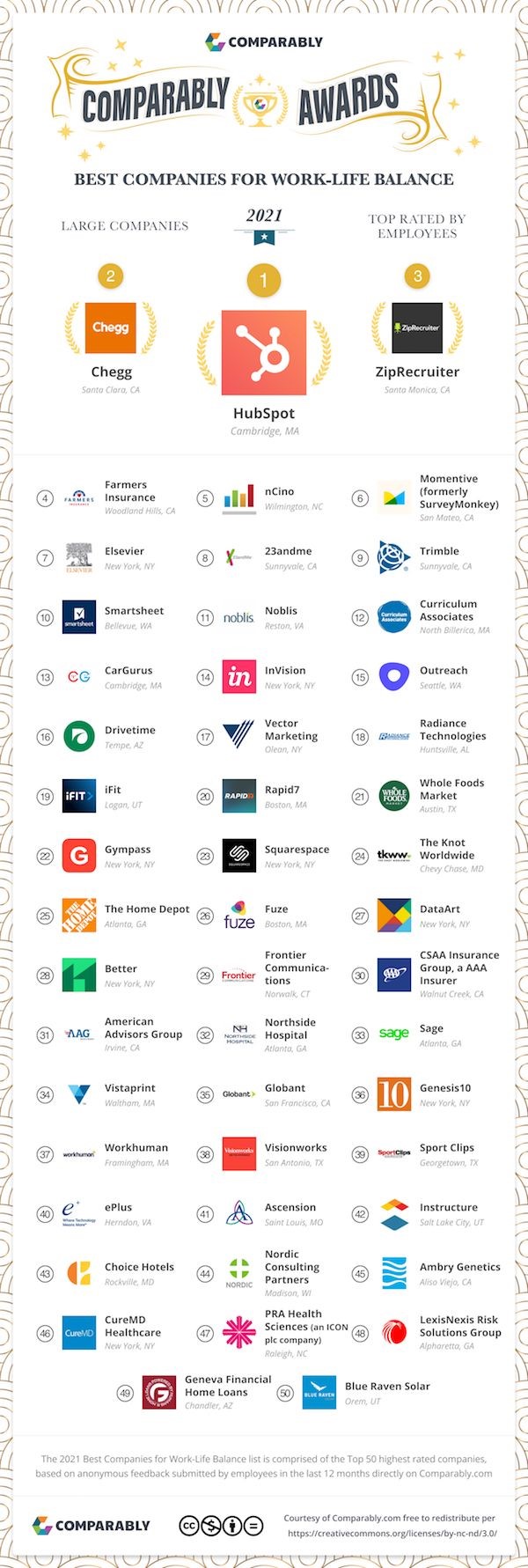
Here are the five peers thar are doing it right:
1. Etsy
Etsy is known for being a terrific place to work, with a strong emphasis on diversity, inclusiveness, team culture, and fostering environments that ‘keep commerce human.’
This ethos is reflected in employee feedback on the company’s ability to provide a positive work/life balance. They were named to Glassdoor’s list of firms that demonstrate that assisting employees in finding a balance between work and personal life is more than a recruiting term – they truly deliver. Work/life balance is rated 3.9/5, second only to compensation and perks, with one employee claiming that supervisors ‘take the stance that working 24/7 doesn’t improve your performance at all’.
2. Zoom
Zoom, a video conferencing startup, reached the same Glassdoor list as Etsy, with a 4.7/5 work/life balance rating. The company scores highly on all metrics, including culture and values, with nine out of ten employees stating they would recommend it to a friend.
Even more impressive was the company’s ranking in the top 5% of Comparably, with top marks for work/life balance, happiness, and culture, as well as a strong focus on personal development, as well as being named the best company for culture, diversity, and promoting women, as well as the best CEO to work for.
3. Starbucks
Work/life balance isn’t simply a triumph for trailblazing tech enterprises and eccentric internet retailers. Despite the hospitality industry being listed as one of the worst for attaining that balance, coffee giant Starbucks has been bucking the trend by demonstrating that it is possible to offer positions that achieve a positive balance between work and life.
Starbucks, for example, ranks in the top 5% of similar-sized US companies for work/life balance, happiness, and overall culture, winning awards for culture, professional development, best company for women, and, of course, work/life balance – all of which reflect the company’s mission to ‘inspire and nurture the human spirit, one person, one cup and one neighbourhood at a time’.
4. Target
Target is another retail behemoth demonstrating that work/life balance is possible in a fast-paced, shift-based organization with thousands of employees and hundreds of locations. And we’re not just referring to their corporate headquarters.
One part-time store employee said that management was very flexible with scheduling, time off, and preferred hours, and that a weekly plan with a “swap shift” board makes it easy for employees to take a day if anything unexpected came up.
As a result, Target’s work/life balance program rates in the top 10% of comparably sized US corporations, and the company has high happiness and culture scores.
5. Taylor Wimpey
Work-life balance winners abound in the real estate industry as well. Taylor Wimpey, a UK-based housebuilder, has been named one of the best UK companies to work for due to its work/life balance offering, as well as one of the best places to work in 2018 and this year, with one employee stating that ‘work/life balance is in healthy equilibrium and a senior leadership team who lead the way’.
Employees benefit from flexible hours, family-friendly regulations, the ability to purchase more vacation days, and even time off for charity work, as well as a variety of other perks such as a “dress for the day” environment and an annual team charity event.

Course Manual 8: Current Processes
In this workshop, after tackling mindset and expertise, you will be guided through a detailed analysis of the nuts and bolts of your business and conduct a thorough review of the current systems and processes you have in place for both the front ends and the back ends.
Is It Truly Necessary To Have Systems And Processes In Your Company?
To scale and continue scaling your business, you’ll need both systems and processes. Your business and how you think about it from a strategic standpoint will determine how you apply them. It’s perfectly great if you’re a solopreneur who begins by constructing processes before moving on to systems development. Do what works best for your company, whether that means putting in place systems or processes first.
Before you set goals for your company, think about your strategy and the structure you’ll need to reach them. Processes exist to improve your company’s effectiveness, whereas systems exist to increase efficiency. The most major distinction between the two is this. It would be beneficial if you double-checked that none of the aspects are causing the other to lag. To achieve effectiveness and efficiency, everything must operate together.
If you see that something isn’t being done quickly enough, you should investigate the system more. What can you do to make the system more efficient? You should think about the method if your effectiveness is suffering. What measures can be made better? Is it possible to replace a stage in the process with a better one?
To put in place successful systems and processes in your company, think about how you might improve the ones you already have until you find what works.
How Do I Create Business Systems and Processes?
“Small businesses don’t work, the people who own them do”
Author of the E-myth, Michael Gerber.
You may create your business so that it runs independently of you and generates the money you need without you working every hour, using solid systems and processes.
A business system or process is an activity or a group of activities that will help an organization achieve a specified goal.
There are numerous benefits to having systemized procedures in your company. Here are a few examples:
1. Place your team in command.
2. Take back control of your time – and your life.
3. Take a step back and work ‘on’ the business.
4. Try out fresh ideas – and improve everything around you.
5. Assist in the induction of new employees so that they may get up to speed quickly.
6. Replicate and expand
7. Reduce costs due to human error and inefficiency
8. Attract a buyer
9. Streamline your communications
10. Quickly and methodically induct new employees
11. Create a culture of accountability in your company.
12. Enhance the ability to scale more quickly
13. Boost the value of your company
So, how do you decide which systems to design and then go about implementing them?
To begin, consider a firm as a collection of systems, each of which serves a certain purpose inside that organization – otherwise, it would not exist. Consider that each system in your company has a goal, and the trick is to determine how effective each system is at achieving that goal.
Six key stages can be followed to develop a system:
1. Make a list of the systems: leadership, operational, marketing, customer service, human resources, finance, administration, and so on.
2. Determine whether the systems are core or support systems.
3. Draw a flow chart for each system. What’s going on right now, and does it have to?
4. Evaluate each system – is it effective? Is there any waste? What kind of impact did you have?
5. Identify each system and assign responsibilities.
6. Put each system in place – notify and teach the team, get feedback, etc.
The following are the main measures that should be taken:
Beginning With the End in Mind Is A Good Way To Go
Consider the end result first. What do you hope to accomplish with this system? What kind of influence will it have? Then think about the methods and various aspects that will be required to achieve that goal. What inputs do you require and from whom once you’ve identified the system’s main element? It could be data from your own team or information from a third-party source, such as a customer or a supplier.
Draw A Diagram Of Your Company And Decide Which Systems To Handle First
Begin by drawing out a process map. A process map is a visual representation of the procedures required to convert inputs to outputs. It’s a method for identifying the connections between the resources we have, the tasks they execute, and the tasks’ dependencies. This will assist you in determining how all aspects of your company work together to achieve operational excellence. Give each system a score based on how complete it is at present time when setting down your systems for the various aspects of your organization.

Consider how significant the systemisation of that element of the business is in comparison to others when prioritizing. This will help you figure out where to begin. There may, however, be a natural flow. For example, is it possible that the marketing system should come before the sales system and then the delivery system?
Create A Set Of Standard Operating Procedures
Then think about what you already have in place and the tools you’re using to see if there are any gaps in your process, skills, or knowledge. Each of your systems could have a variety of phases and types. These could include:
• Step-by-step procedures
• Instructions
• Standard letters
• Scripts
• Checklists
• Forms
• Templates
• Agendas
• Workflows
• Software
Think About What You Can Automate
With the help of some amazing apps and software, many tasks may now be automated. Consider which of your steps could be automated and which currently require human intervention or delivery.

Good Training Is Required for Implementation.
You may believe that the hard work is done and that the system is now ready to go live. However, a poor implementation plan or inadequate training can jeopardize all of your efforts. Everyone, from your most experienced to your newest employees, should be able to carry out the responsibilities and deliver the system without you or your interference at any time after receiving training.
Your staff will be empowered as a result of the systemisation of your firm, which will encourage them to take responsibility and authority for delivery. It is stated that if you manage your staff according to their capacity to follow a system and use their individuality and invention to improve it, you will be able to improve it.
Involve A Team Member In The Creation Of The System And Related Processes
Of course, having someone else develop the method is beneficial to your own time management! It can, however, aid in the training of your employees. For example, you may demonstrate how it’s done, including all of the components that would be included in a system. Then have them write up their notes in a style that corresponds to your other operations handbook. You have the system written up for you, but you also double-check that person’s comprehension and training quality!
In conclusion, develop your firm such that it has the procedures in place to generate the income you require without you working 24/7, and to generate a better valuation because it is self-contained.
Creating A Policy
For the essential commitment to be maintained, work-life balance programs must be initiated with the permission and support of senior management (that is to develop clear guidelines and lead from the top).
Employees and management must both have a say in the policies’ formulation to guarantee that they are ‘best fit.’ This participation will ensure that the policy satisfies its specific needs or the corporate culture of the organization (adopt policies to meet operational needs), such as offering a flexible ‘menu’ of benefits with practices that appeal to all employees.

To ensure that employees are aware of and comprehend what has been implemented and what it means for them, information must be delivered effectively to them using a variety of ways.
Feedback And Evaluation
Both employers and employees must share responsibility for the policy’s effectiveness, with means for regular review and feedback incorporated (include measures for performance, monitor progress and draw lessons from experience).
• Evaluate the existing state and goals of the workplace
• Address issues and concerns about time management, productivity, and deadlines by gaining buy-in from all levels (if appropriate)
• Make a policy or a set of guidelines
• Start a trial period or a pilot project
• Track, assess, and make any required adjustments
The policy might be prepared as a stand-alone document or included into existing human resources, health and safety, or other policies.
Recent legislative changes have enhanced employees’ entitlements to flexible working hours, maternity and paternity leave, parental and adoption leave, and domestic emergency leave, which may be incorporated in the policy.
Schedule Of Regular Meetings
Establish a regular meeting schedule that will serve as the foundation for your business management. These meetings should be held on a regular basis (e.g., weekly) and have a predetermined agenda. These gatherings serve a variety of purposes:
• Establish a standardized procedure for discussing topics, receiving updates, and resolving concerns.
• Establish a communication system that is consistent.
• Eliminate impromptu chats about things that occupy your time during the day.
• Create a venue for discussing and resolving problems, particularly when a trend emerges.
• Provide a venue for new issues and discussion regarding the company’s future direction.

Course Manual 9: Market Position
What is the definition of entrepreneurial marketing?
Entrepreneurial marketing is more about a marketing mentality that distinguishes itself from traditional marketing techniques than it is about a specific marketing method. Because it is built for huge, well-established businesses, it avoids many of the core marketing ideas. Entrepreneurial marketing employs a toolkit of novel and unconventional marketing techniques to assist fledgling businesses in breaking into crowded industries.
Many of the marketing methods used by entrepreneurs are formed out of need. Marketing efforts for new enterprises may be handled by ten, five, or even one person. They operate on a shoestring budget and have a fraction of the resources available to their major competitors. Graphic design teams and advertising experts are typically out of reach for start-ups, forcing them to discover creative methods to make the most of their limited resources.
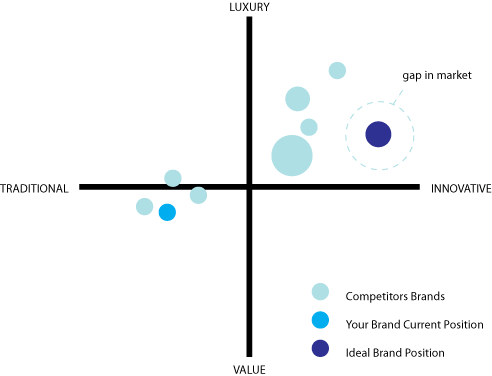
Entrepreneurial marketing is defined by its ability to innovate, take risks, and be proactive. Entrepreneurial marketing initiatives aim to emphasize a company’s most important assets while stressing their worth to customers. To set yourself apart from the competition, concentrate on unique items or superior customer service. They make their case by utilizing low-cost and easily accessible platforms such as viral videos, Tweets, Facebook pages, and email marketing. Any marketing strategy can be regarded as long as it results in a positive outcome.
Dell Computers: An Entrepreneurial Marketing Case Study
Michael Dell, a college student, chose to start a computer company in 1984. It is currently one of the world’s largest and most well-known computer businesses. The following are some of the early steps Dell took to get noticed in the computer market.
• Define your customers – Dell recognized a gap in the market for customized corporate computers early on. Their original products were targeted at large and midsized businesses who needed to buy a large number of computers at once. They didn’t start focusing on personal computers for kids and families until the late 1990s.
• Provide something new – In the early 1980s, computers were generally purchased and sold through retail stores. Dell pioneered the then-revolutionary practice of selling directly to consumers, bypassing the retail middleman. This made it simple for business customers to place huge purchases and personalize each machine.
• Go where the clients are — Dell advertised at electronics trade exhibitions, trade magazines, and other places frequented by corporate technology officers. Dell computers were optimized for corporate clients, according to advertising statements.
• Provide great services – Dell provided technical help to all of its customers 24 hours a day, seven days a week. Customers who were just starting to integrate computers into their organizations benefited greatly from this service.
When You’re Just Getting Started, It’s Critical To ‘Position’ Your Brand
“Positioning” is a term that is frequently used, however it is frequently mistaken with other marketing operations.
April Dunford, a positioning specialist, believes that “few companies have a strong grasp of what exactly positioning is, why it’s important, and how to accomplish it.”
The place a brand has in the thoughts of its customers is referred to as “positioning.” That’s vital, yet one of the most common mistakes founders make is thinking about their position too late. After all, it’s all too easy to get caught up in the product. You begin by developing marketing strategy, filled with creative concepts for engaging a large audience. However, in those early days, the most important decision to make is precisely what your message is and how it fits into your industry.
After that, you can focus on the product that will back it up, as well as the marketing techniques that will help spread the word. With this said, here are some key pointers for anyone launching a new business and looking to define his or her positioning.
Head-On Accidents Should Be Avoided At All Costs
Al Trout and Jack Ries argue in their seminal book Positioning: The Battle for Your Mind that you should never compete head-on with a company that already has a solid, established position. Even if you’re in the same niche, you should always try to position your product or service as a dramatic departure from the standard. Chipotle’s stance against industrialized agriculture is a prime example. By making honesty a major aspect of its business, the company effectively avoided many of its fast-food competitors. However, opponents may have argued in those early days that Chipotle’s stance in the fast-food sector was difficult to maintain over time.
Take notice of the branding strengths and flaws of your competition.
Examine the branding strengths and shortcomings of your competitors to establish what your company’s positioning should be. Most marketing departments do this when they first start out, and it’s crucial that you do it as well; be honest about your competitors if you want to prevent a “head-on” collision.
By filling in the holes in your competitors’ services, you may discover that they are less of a competitor and more of a method of attracting more attention to your specialty. This is why, in cities, apparel stores and restaurants frequently cluster together. They can gain from their competitors’ overflow as long as their offerings differ, especially in the beginning.
Lyft is a firm that successfully measured out its opponent, Uber, and used its analysis to carve out a significant market share. On the surface, these two companies appear to provide similar ridesharing services, but Lyft swiftly assessed Uber’s reputation as a business that engages in some unethical acts. As a result, Lyft shifted its focus to providing a friendlier service that stimulates contact between drivers and passengers, as well as carbon-neutral rides and bike sharing.

The Business Case for Work-Life Balance: Go Home
A comfortable home, a decent automobile, and enough money in the bank to take a trip every now and again is the well-worn picture of the American Dream. The fact that people who have worked hard to earn these things will have time to appreciate them is less stressed in this picture, but it is suggested, nonetheless.
So, it’s a little disheartening to learn that only 54% of those polled thought it is possible to attain career success in the United States while still contributing to family and community life in the current Allstate/National Journal Heartland Monitor Poll. Similarly, a sizable percentage of respondents (37%) stated they’ve missed out on personal experiences due to pressure to work late or avoid vacation time. This does not have to be the case.
The Case for Balance in Business
Several studies in industrial settings have demonstrated a negative association between long hours and what employees really do throughout the last century. In one study from 2005, researchers found that construction projects with personnel working 60-hour weeks over long periods of time had output that was around 24% lower than projects with employees working 40-hour weeks. Similarly, crews working 50 hours per week were 8% less productive than those who did not work overtime.
Construction foremen aren’t the only ones debating whether the sacrifice is worthwhile. The discussion over the feared “crunch time” has raged for years among enterprises. Even when clients want it, many firms flatly refuse to force their employees into long shifts. One testing and deployment company recently declared a minimum amount of annual vacation days for its loyal staff who refused to succumb to the temptation of an earlier policy of unrestricted time off.
In an incredibly competitive labor market, keeping an engineer pleased is a no-brainer. Employee-friendly scheduling, on the other hand, can boost anyone’s well-being and job happiness. Take, for example, sleep. Few things have a greater impact on cognitive performance. Despite this, medical experts recently discovered that work was the most frequently substituted activity for hours in bed. Employees can benefit from starting later, according to the same study, with research volunteers gaining an extra 20 minutes of sleep for every hour the workday was postponed. Granted, arriving at the office at 10:30 a.m. may not be feasible for all employees or teams. Giving people more flexibility with their schedules, on the other hand, can have real health benefits.
Then there’s the actual workday. The creators of DeskTime discovered earlier this year that the most productive employees who used the software were rarely tied to their computers for more than eight hours. Contrary to popular belief, the 10% of persons who completed the most work each day did so in short bursts of 52 minutes on average, with 17-minute pauses in between. The ability to work in this manner wasn’t only a bonus for these personnel. It had actual consequences in terms of performance.
The Best Employers Make Work-Life Balance Happen
FactSet works in both software and finance, so long hours are a given. Nonetheless, 92 percent of this company’s 2,000 U.S. employees claimed they were encouraged to balance work and personal life when we polled them. “FactSet is happy to let people work the way that they work best – be it from 10 a.m. to 6 p.m., 8 a.m. to 4 p.m. or in chunks of time. If you get your work done and are available for communication, you are doing well.”
Nearly half of FactSet’s employees (45%) use flexible scheduling, while 18% telecommute, and employees have access to at least three weeks of vacation from the start of their employment. Not bad for a $5.3 billion publicly traded firm with 35 years of revenue growth.
The scenario is similar at Hyland, the creator of the enterprise content management product OnBase.
“If you complete your responsibilities, you are afforded the flexibility (in my role) to set your own schedule. This support/respect is what I find most attractive about Hyland and what compels me on a daily basis to go the extra yard,” one employee said.
Ninety-eight percent of that team member’s coworkers surveyed by Great Rated! said they can take time off when they need it, and more than nine out of ten said the company encourages work-life balance. This is reflected in an on-site Montessori school, hair salon, wellness clinic, and gym, as well as job-protected maternity leave that exceeds federal requirements. It does all of this for its 1,565 U.S. employees, just like FactSet, while meeting the market expectations of an established, worldwide, and rising company.
These are just two instances of technology firms that succeed when they prioritize work-life balance, according to our research. Despite the perceived cost of flexible hours and a commitment to time off, they’ve grown their revenue year after year. According to the Heartland poll, 68 percent of Americans agree that employers should make it a point to provide workers far greater flexibility in their schedules, because happier workers are more productive and better for business. The companies that are bold enough to make this happen will own the future.
Be The Best Employer You Can Be
Employees that are skilled and motivated are the backbone of a thriving, expanding company. Paying a competitive wage isn’t enough to attract them. A positive work environment, as well as benefits such as flexible working hours and planned career development, are frequently more appealing to employees. Employees who are motivated put forth more effort to ensure that clients are satisfied. Customers appreciate working with personnel who are enthusiastic about the company they work for.
Outlook
Employees will be under increased pressure to work longer hours and be ready on call while economies remain slow, cities expand, and firms become more global and competitive.
Furthermore, a pressed generation of consumers will be responsible for both old parents and children, and many will be forced to work into retirement age. All of this indicates that in the coming years, consumers’ time will be squeezed more than ever.
However, with a dwindling pool of young talent, businesses will be pushed to make greater efforts to improve workplace flexibility and employee perks in order to keep employees happy and productive.

Course Manual 10: Tasks and Delegation
Myth of the Work-Life Balance
The concept of balancing work and life has a few flaws:
• It implies that there is a distinction between work and life, which is rarely the case for entrepreneurs.
• It solely counts the output. (Which is exhausting.)
• It suggests that you can divide your energy into pie slices.
Let’s face it: once you become an entrepreneur, the phrase “work-life balance” has no meaning.
“Personally, I’m not happy if I’m evenly dividing my time between work and other things. I really enjoy what I do, to the point that I get bored with a lot of hobbies. I focus on making sure that I’m doing well on a personal level: if I’m feeling stressed out, I’ll take a step back; if I feel like I’m not getting enough work done, I’m cool with investing more time.”
– Thursday Bram, Hyper Modern Consulting
For small business owners, finding a balance between a demanding profession and an essential personal life is a daily challenge. However, assuming you can compare the two on a level playing field is misleading. Whether you’re a one-person shop or have a team of 25, the pull of business needs is constant. To be effective in both fields, you must find a rhythm that satisfies both sides. This does not imply you must work equal hours at home and at work.
Work smarter, not harder
Many entrepreneurs believe that in order to launch a successful firm, they must work 80 hours per week. While pulling an all-nighter may be essential at times, you are not required to do it night after night to be successful.
Instead, you must figure out how to work smarter rather than harder. Here are some pointers to get you started:
• Turn off all electronics, including social media.
• Rather than procrastinating all day, finish your most difficult tasks first.
• Keep a lean to-do list with only the most critical and impactful things on it.
• Delegate jobs that don’t necessitate your knowledge.
Delegation
One of the best aspects of being an entrepreneur is that every day is different – but for many entrepreneurs, this also means that they wind up doing a little bit of everything. Doing everything for your business, on the other hand, can mean spending too much time on day-to-day duties and not enough time focused on growth. This is when good delegation comes in.
You can’t do it all on your own if you want to properly scale your firm. You can focus on the most essential, high-level priorities for your organization by outsourcing or engaging professionals to handle time-consuming chores. Giving up some tasks and control, on the other hand, might be difficult for entrepreneurs who are hesitant to give up any portion of the company they’ve developed.
In fact, according to Gallup research study titled ‘Delegating: A Huge Management Challenge for Entrepreneurs’, CEOs with “high delegator talent” had a three-year average growth rate of 1,751 percent, or 112 percent greater than CEOs with “low delegator talent.”
Richard Branson, the creator of Virgin, is an example of a founder with high delegate talent. People, he claims, are the key to his success because “they had skills that I did not. In some areas they knew better than I did how to make my vision a reality.”
Effective delegation, rather than micromanagement, allows you to focus on the most critical aspects of your organization while empowering your staff to handle the assignments you give them.
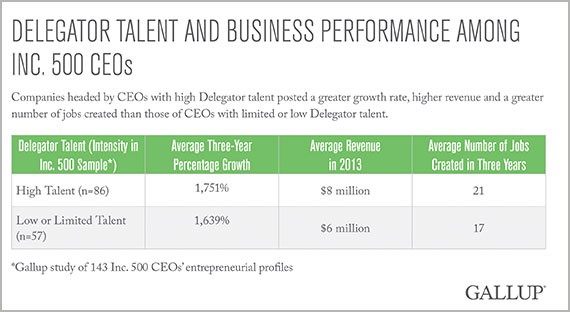
Why Delegation is Important for Entrepreneurs
Building the correct processes (including defining expectations, following up, and offering feedback) as well as providing your team with the tools and authority to act are all essential components of successful delegation. It also entails assigning the appropriate work to the appropriate person for the appropriate purpose.
Effective delegation has a number of advantages, including:
• Freeing up time to focus on the most important aspects of the business
• Developing employees’ skills and expertise
• Empowering employees to handle tasks they are best at (or better at than you)
• Increasing efficiency so you can take on and complete more projects
Many successful entrepreneurs, however, still struggle with management delegation. Due to a lack of direction, tools, or communication, many employees and freelancers fail to thrive. You must prioritize learning how to delegate properly if you want to ensure that delegating work benefits rather than hurts your organization.
What Delegators Do Differently
Six important disparities exist between leaders with strong Delegator talent and those with lower or limited Delegator talent, according to Gallup:
• Delegators understand that they cannot do everything themselves. They are willing to hand over authority and delegate responsibilities to others. This frees up their time so they may focus on tasks that will generate the most profit for the organization. Non-Delegators, or those with poor or limited Delegator talent, can become so caught up in day-to-day tasks that they rarely have time to focus on actions that are critical to their company’s growth.
• Delegators use a strengths-based strategy to build team capacity. They take the time to figure out what their employees are naturally good at, and then assign them to tasks where they are most likely to succeed. This enhances productivity and benefits the entire company by motivating and engaging staff. Non-delegators frequently don’t recognize their employees’ talents and abilities, causing them to force square pegs into round holes.
• Delegators make sure staff have everything they need to do their tasks. They provide tools, resources, training, and learning opportunities to their employees, and they genuinely care about their development. Non-delegators are impatient and unable to provide employees with all of the resources they require to complete the job they have been allocated.
• Delegators concentrate on results rather than processes. They create clear objectives for everything from timing to budget to deliverables, and they track progress to influence employee commitment, morale, and company performance. Employees are confused and frustrated at work when non-delegators micromanage and fail to set clear standards.
• Delegators promote fresh ideas and techniques to achieving objectives. They encourage psychological ownership and involvement among employees by allowing them to choose their own goals. Non-delegators have a hard time trusting people to do things as well as they can. At every stage, they stifle growth by centralizing and restricting decision-making.
• Delegators communicate with staff on a regular basis. They give feedback on what works and what doesn’t, and they congratulate staff on a job well done, all while cultivating a culture of mutual trust and respect. Non-Delegators are ready to assign blame rather than provide helpful feedback. Employees may get demoralized, resulting in a dysfunctional environment that hinders production and growth.
It’s Time to Begin Delegating Responsibilities
You don’t need a large payroll to run a successful business if you know how to effectively exploit outsourcing. Because of our hyper-connected world, it’s simple for solopreneurs to engage virtual assistants (VAs) to help with many of the day-to-day chores of running a business.
These are tasks that, while vital to your clients and overall business success, take a long time to perform and do not require your personal involvement. You may spend your time working ON your business rather than IN it by delegating these duties.
“It’s great to delegate bookkeeping, marketing, and admin work, but for many who are just starting off your budget won’t necessarily allow for it. Get creative and delegate more of your “life” duties like childcare, cleaning house, and grocery shopping to a spouse. Having my husband help me out by doing some grocery shopping means I have more time to spend with him when we’re at home.”
– Jennifer Donogh, Young Female Entrepreneurs
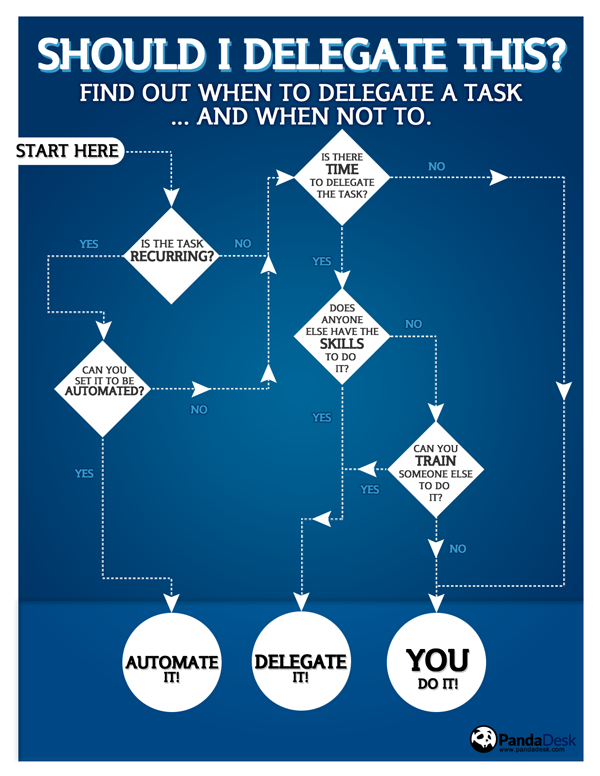
Don’t try to do it all alone
While you may be the best at most things, you can’t do it all. One quality of a good entrepreneur that will also help your relationships is to stay focused on your zone of genius, the things that nobody else can do, and then put your energies into hiring our outsourcing the rest.
“82 percent of business owners are working 40-plus hours per week, but only 44 percent want to be. The best way to reduce your workload and get more time to spend with the people you care about is by delegating tasks you don’t need to be doing yourself and creating a strategic plan that allows you to work on your business, rather than in it.” — Jo Clarkson
Delegate Smaller Tasks to Other Members
“I’ve found that by delegating smaller tasks to other members of the team, I’m able to have a decent work-life balance. Instead of putting everything on your shoulders, think about how you can bring your team together to solve some of these problems. In many cases, a lack of balance occurs when a boss thinks that they need to have a hand in every single thing that happens within the company.” ~ John Turner, SeedProd LLC
Say No (and keep saying No)
It can be easy to say YES to every opportunity, every client, every task—big or small— that comes your way. It can be hard, even terrifying, to say no. But in order to have any chance of keeping your head above water, saying no is a vital skill.

Course Manual 11: Support Network
Work and family are widely considered to be the two most essential and connected aspects in people’s lives (Frone, Russell, & Cooper, 1992; Hirschi, Shockley, & Zacher, 2019; Michel, Kotrba, Mitchelson, Clark, & Baltes, 2011). Several major publications in the entrepreneurial literature have emphasized the relevance of family for entrepreneurs (Aldrich & Cliff, 2003; Rogoff & Heck, 2003). Empirical study on the relationship between family and entrepreneurship typically reveals that family plays a significant role in entrepreneurs’ startup behavior and success (e.g., Eddleston & Powell, 2012; Edelman, Manolova, Shirokova, & Tsukanova, 2016).
Entrepreneurs are more stressed and receive less help from their employers than salaried workers and supervisors (Tetrick, Slack, Da Silva, & Sinclair, 2000). They frequently face a significant personal risk of failure, juggle numerous jobs in the firm, and are extremely dedicated to the company’s success (Parasuraman & Simmers, 2001). Because of the high demand and poor support work environment, family support is a critical resource for coping with the stress experienced at work.
“Making the effort to spend time with family and friends every week (without answering emails or taking calls during that time) is very important for balancing work with life. If you’re going out to dinner with your family or friends, leave the phone at home or in the car so you’re fully present.” – Kristin Kimberly Marquet, Marquet Media, LLC
Emotional Support Network, or “Pod”
Everyone, from entry-level employees to C-suite executives, requires assistance at work on occasion. More brains are better than one, whether you need a gut check on an awkward interaction or assistance troubleshooting a delayed project.
According to experts at the University of Illinois at Urbana-Champaign, groups outperform even the highest-performing individuals when it comes to solving complicated problems. “We found that groups of size three, four, and five outperformed the best individuals … [We] attribute this performance to the ability of people to work together to generate and adopt correct responses, reject erroneous responses, and effectively process information,” says Lead Researcher Dr. Patrick Laughlin.
But what if you’re a one-person operation? What happens when you’re working from home and can’t see your coworkers? What if you’ve never met any of your employees face to face?
Developing an emotional support network, or “pod,” can help you get the help you need when you need it.
How To Identify Who Is Within Your Circle of Support
Your circle of support can be anyone that you are close with: family, friends, and neighbors are all good places to start. when having conversations about your career. Take the time to recognize who belongs in your inner circle, and who you should get to know in your outer circle.
Is there someone in your daily life who works in a related field? Make a contact list of people you know from high school, university, past jobs, or even the gym. All of these folks are people you already know and might be considered part of your inner circle of support. They can assist you on your career path and provide valuable insight into your career objectives. They can assist you in gaining a better grasp of where you might go in your career.
Once you’ve figured out who’s in your inner circle, you can start expanding your network and figuring out who you might like to meet in order to broaden your outer circle.

A Strong Support Network Will Help Your Career
Whatever obstacles we experience in our daily work lives, having a solid support network consisting of our spouse, friends, and family can make a huge impact. But, more precisely, what can we do to assist? The largest car rental company in the world, Enterprise Holdings, which itself began as an entrepreneurship, asked a few of its employees how their partners had helped them so far in their careers, and they provided some excellent advice for all of us:
• Work well with others
When asked how she manages to strike a work-life balance, Tori Patrick, Vice President of Airports at Enterprise Europe, credits her husband:
I have a very supportive husband first and foremost, who takes an equal lead in our home life. We make both work and home a priority and equally understand the need to prioritise each at different times. Sometimes I have to work late, and as a mother of two I will sometimes leave early to attend one of my daughter’s matches or a school event. It’s not easy, whether you are female or male. You need a well-executed plan to get it done. And you need to plan together with your family, sharing tasks and responsibilities.
• Rejoice in each other’s accomplishments
Nothing motivates you more than seeing your partner succeed, according to Jon Thomson, Vehicle Acquisition Manager for London and the South East:
My husband and I got married in 2015 after 10 years of being together, so he has really seen me develop through different stages of my career. He has always been very encouraging and likes to think big. He is ambitious with his own career too (as am I) so we regularly set ourselves stretch goals, but we also take time together to enjoy our success. On the flip side there’s always another mountain to climb, but the key is that we are in this journey together – sometimes me supporting him – and sometimes him supporting me. I have to admit that if I didn’t have that support I think it would be harder for me to perform at work, so it’s been an important component of my success at Enterprise so far.
• Be an unwavering supporter
When we’re unclear what road to pursue – especially when it comes to our professions – sometimes all we need is a small boost in confidence, as Alyson, our Talent Acquisition Specialist, discovered:
My partner Matt really supported me when I mentioned to him that I wanted to apply for my current role. Having worked as a PA for six years and knowing my job well the thought of moving to a new job and team outside my comfort zone was really scary! He helped me see that I needed a change and really encouraged me to go for it. His positivity is what spurred me on to apply, mentioning that it was going to be a good experience whether I was successful or not, as at some point I would have had to move anyway if I wanted to progress with my career. Sometimes you need a little push from the ones you love to help with those big decisions.
• Be willing to share your knowledge and experiences
Are you dealing with a difficult situation at work? It helps if your spouse has the necessary abilities to assist you in overcoming the obstacle. Jon’s husband’s stage expertise was extremely beneficial to him:
An area in which my husband has been very active throughout his own career is the art of performance, public speaking and how best to use one’s voice. I have always struggled to feel comfortable presenting and speaking publicly, and he has been able to coach me through this. I remember preparing for a big presentation years ago and I practiced it at home with him. He gave me tips on breathing, pacing and even how much information to include both verbally and on power points. I have to say this really helped – even now I use some of his techniques to prepare myself when I have a presentation to give.
• Serve as a sounding board for others
A partner’s most significant job is probably that of a sounding board, providing guidance, reassurance, support, or simply a different perspective. We sometimes become so engrossed in our personal difficulties that we lose sight of the bigger picture, thus a fresh viewpoint can be beneficial in revealing a new side to our situation. Even better, as Alyson says, if that support comes from someone who isn’t in the same industry as you:
I talk to Matt about my day every evening when I get home from work: what’s gone well, and some of the challenges I’ve faced that day. Matt’s a carpenter so he’s a very logical thinker, he really helps me when I can’t see the “wood for the trees” with a particular problem. It’s nice talking to someone that doesn’t work in the same field as me because everything sounds so much simpler once I say it out loud to him!
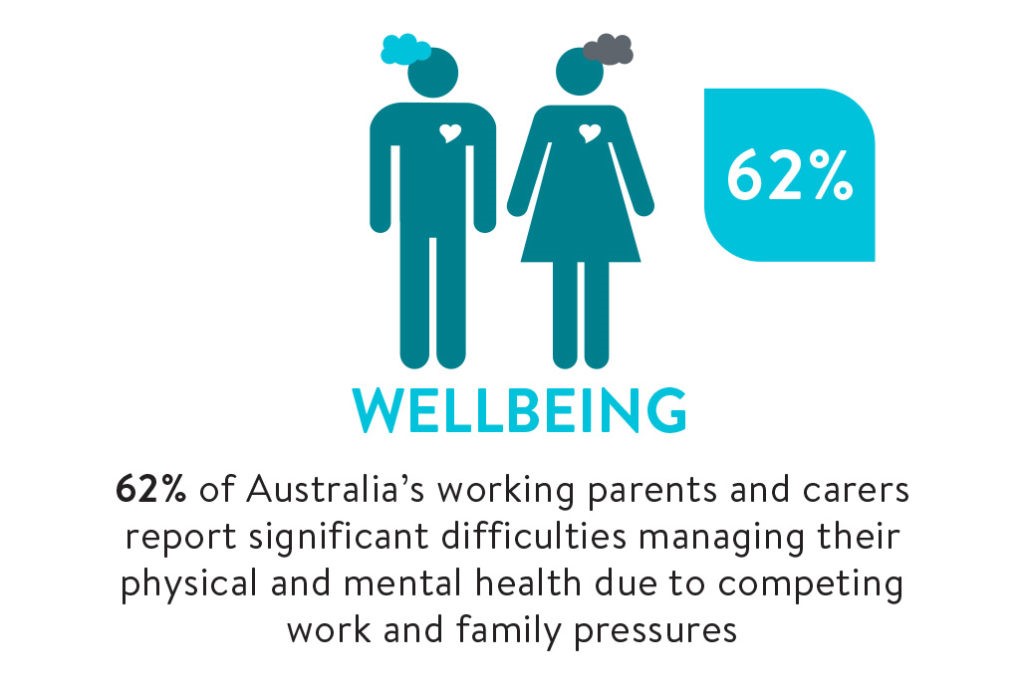
How Crowdoptic Finds the Balance
Jon Fisher, the CEO of CrowdOptic and a serial entrepreneur, has broken the mold when it comes to achieving the correct balance, and his insights may help all founders, no matter where they are on their journeys. CrowdOptic, Fisher’s startup, enhances security, social media sharing, and advertising by using algorithms and real-time sensor data from electronic devices, and its technology has been used in everything from sports to medical to government. It was also the first patented wearable technology solution, including Google Glass. While he practices what he preaches, he credits his success to a balance of productivity and quality of life for himself and his employees.
Make Time for Those Who Matter is one of Fisher’s most important and well-known pieces of advice for achieving a sense of balance as a serial entrepreneur.
Many in Fisher’s group had sacrificed time with their families in order to accelerate corporate growth, and many regretted it. As a result, he and his wife agreed to never prioritize work before their daughter or each other. “Hold your children up high as your greatest inventions, because they are.” he is reported as saying in a graduating speech for the University of San Francisco School of Management.
He goes on to say that he prefers to establish smaller businesses to sell because it requires less finance, risk, and, arguably, less personal sacrifice.
Fisher has made it a personal mission to show entrepreneurs that they can succeed financially without sacrificing family values. Despite his professional achievements, he considers the amount of quality time he can dedicate to his wife and daughter to be the actual measure of success.
“Your degrees today, your work to come are the means to leave a trail. Your family is another. I will look for you in the years to come as you build and find your happiness” Fisher said at the end of his commencement speech.
Always keep an eye on the (true) bottom line
When things are rough, relationships are often the first to suffer. But don’t forget that they’re some of the most crucial things to keep in good working order.
“I believe that humans are created to be relational. Relationships provide support, love, and emotional stability that helps us get through the rough patches in both life and business. I still struggle in finding the perfect algorithm for work and relationships because there is no algorithm for people. I have found that my time is best spent when invested in people and not machines. Money comes and goes. In fact, millions of dollars can be made or won in mere seconds, but relationships take time and effort to nurture. Keep the quality of your business high and the quality of your relationships even higher.”— Sam Oh – Money Journal

Course Manual 12: Professional Network
It may be necessary to embrace a non-traditional employment to achieve a work/life balance that prevents burnout. For example, freelancing or entrepreneurship can provide you with the flexibility you need to create a fulfilling job AND personal life.
These career possibilities aren’t as straightforward as taking a huge corporate position. When you go it alone, you’re accountable for your clients, your tasks, and your pay check. It’s a frightening prospect.
Building and maintaining a professional network is essential for success in these self-directed career paths. It’s easier to distribute information about yourself and your services, attract clients and great reviews, and get the resources you need when you have a large network of contacts.
Professional networking, in which you connect with individuals in your sector, is a vital aspect of a successful career. Networking can aid in the acquisition of new skills, the discovery of new possibilities, and the development of useful relationships. Gaining a better understanding of networking might help you advance with your venture. We’ll go over what networking is, who to include in your network, and what you can expect to get from it.
What is professional networking?
The process of forming mutually beneficial contacts with other professionals is known as professional networking. Employers can fill open vacancies by assisting you. A professional network’s ultimate purpose is to identify or generate professional opportunities for others.
Begin With People You’re Already Acquainted With
Developing a professional network doesn’t have to entail uncomfortable get-togethers with total strangers. In reality, getting to know individuals in your field through this method is one of the least effective.
Instead, start with the people you currently know to expand your network. You might be shocked at how many people are involved. Your professional network can include current coworkers, family and friends, old college acquaintances, and your social media network.
Make a list of everyone you know to get started. Then start contacting them to let them know you’re seeking for new chances, clients, or guidance for your new business. You could be amazed by the opportunities and referrals you get merely from your existing network.
Extend your network with the resources you already have
However, if you want to develop a career that allows you to have the work/life balance you desire, you’ll need to expand your professional network. But have no fear. Your current network can serve as a gateway to new connections. All you have to do now is properly leverage it. Consider the following actions:
• Contact the alumni services
• Make introductions through friends, relatives, and coworkers
• contact previous coworkers and supervisors
• post a request for connections on social media
• Make new relationships by emailing or calling contacts
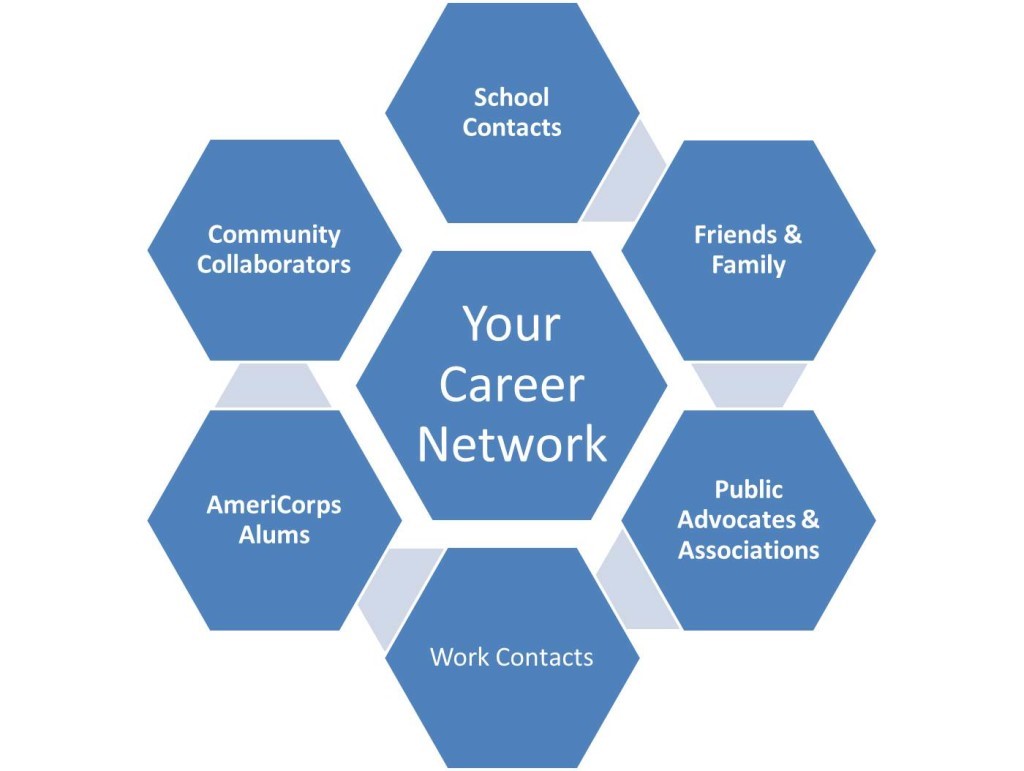
Who should you invite into your professional circle?
People who can assist you advance in your enterprise are the ones you want in your network. Your network might originate from both within and outside of your organization. It’s beneficial to network with a variety of professionals. Consider how you can meaningfully connect with people such as:
1. Professors At Universities
Professors stay up with new trends and activity in their fields in order to teach in a relevant way. As a result, educators are frequently privy to insider information. Friendly professors, especially those in your field, can function as a referee or propose career chances if you continue your connections with them.
2. Previous Classmates
College is a great place to make lifetime friends and potential coworkers. With the pressure to achieve, classmates are keen to surround themselves with people who can assist them in achieving their goals. Maintain contact with old classmates to create a strong network of professionals your age.
3. People You Know
People seek successful companions who can make them feel good about themselves. Let your friends know about your job ambitions as you attempt to expand your network, so they can stay informed about the goals you want to attain. This enables them to assist you if they become aware of an open position that you might be interested in. Friends may also help you stay motivated while you look for new career opportunities, which will boost your attitude at work.
4. Coworkers From The Past
It’s critical to keep in touch with former coworkers. Making a positive impression on individuals with whom you’ve worked can help you succeed. A former coworker may have insider information and be able to keep you up to date on new prospects.
5. Members Of Professional Organizations Or Clubs
To expand your network, form connections with people in professional organisations. Associations provide valuable guidance, a variety of viewpoints, and a wealth of resources. Your participation allows you to contribute the knowledge you’ve gained over the course of your career. This might also help you believe in your own abilities.
6. Members Of The Family
Keep family members as part of your professional network as much as possible. Even if they aren’t in your field, they may know someone who is. Keep your family informed about your ambitions, since their help may be needed when you least expect it.
What is a business support group?
A business support group is anything that brings together businesspeople and entrepreneurs to build professional partnerships. There are numerous explanations for this. People and organizations join such groups to recognize, generate, or act on business opportunities, allowing them to share knowledge and find prospective partners for future endeavors.
Doing things on your own or with a small staff can be difficult if you’re a small business owner. These support organizations allow you to meet other people who share your interests and have the potential to provide you with opportunities in the future.
Business Support Groups Have A Number Of Advantages
There are numerous advantages to joining a business support group. Face-to-face communication can be crucial for establishing a key support network for a business through networking. It can be consulted when you need advice, assistance, training, or just someone to vent to.
This also works vice versa, your network will know that you’re also there for them. It really enables you to develop important skills, share knowledge and experience, and helps reduce your stress and anxiety.
Business support groups can also put you in touch with new talent, assist you in identifying possible clients and suppliers, and help you improve the reputation of your own company.
“It’s not what you know, but who you know,” and this is especially true in business. If you don’t network, you won’t be able to build and develop a community, and you won’t be able to meet the individuals who are worth knowing. Those in your first circle of connections may never buy from you or want your services, but they are almost guaranteed to know or meet someone who does.

Getting the Most Out of Your Business Support Groups
Joining a support group and expecting opportunities to fall into your lap isn’t enough; you have to put in the effort to obtain value from them. You may need to visit a variety of face-to-face networking groups several times to know which you prefer and works best for you. Some organizations demand a membership fee and require you to complete X, Y, and Z in order to stay a member. Others are more laid-back, billing on a pay-as-you-go basis with no actual expectations of you as a customer.
Assign Corporate And Operational Sponsors To The Project
Corporate sponsors, who can be line or staff executives, provide new initiatives legitimacy and clout, while operating sponsors, who come from specific firms, divisions, or groups, bring organizational knowledge and build acceptance. They’re likely to give young enterprises the correct blend of independence and discipline, as well as a balance of identity and integration, if they work together.
Staples opened ten prototype rural stores in 2006. The local district manager and the company’s vice president for strategic markets, who was in charge of the program, received reports from each store at the same time. Long and uncertain gestation periods can be overcome with this type of dual sponsorship. Few employees will join a new company if they fear resources will disappear once it becomes self-sufficient, or if they perceive senior leaders’ excitement to be on-again, off-again. Companies that have dual sponsorship indicate that the new business is a long-term commitment and that they have considered the transition to maturity.
Make the request and make sure your expectations are aligned
It isn’t necessary for your professional network to be overly rigid or controlled. There were no agendas, set meetings, or conversations like “you’re in my network now, here’s your t-shirt…”
Even so, approaching individuals and confirming that they’re willing to be a listening ear and a source of help when you get stuck isn’t a bad idea.
This guarantees that you’re both comfortable with the situation, and it may also affect how they talk about their encounters with you. When they know you’re coming to them specifically for advise and support, they’ll likely devote more time, energy, and attention to the chat.
Are you apprehensive about making the request? That’s normal, but the good news is that most individuals will be thrilled that you regard them so highly that you entrust their advice to them.
Be straightforward, complimentary, and genuine when approaching the conversation. Consider the following scenario:
“I admire the reputation you’ve established for yourself as a product-management guru. I’d like to hear your thoughts on how you manage your personal branding while juggling the obligations of your job. Would you mind if I set up a meeting with you to go over that?”
If they consent to that first conversation, you’ve set the scenario for them to say yes to you approaching them for many similar conversations in the future. “Thank you so much for your advice on personal branding,” for example. Are you okay with me approaching you in the future for similar discussions?”
What if they say no to this or even your initial request? Don’t take anything too seriously. It’s possible that they won’t have time. You’re both better off acknowledging this now so you can develop a strong support network.
People can’t do that when they’re overworked; in that situation, they may need to form their own support network.
Workshop Exercises

Baseline Assessment Exercises
01. Performance Reviews : Explain in your own words how this process will directly impact upon your department?
02. Self-Awareness : Explain in your own words how this process will directly impact upon your department?
03. Level of Expertise: Explain in your own words how this process will directly impact upon your department?
04. Goal Commitment : Explain in your own words how this process will directly impact upon your department?
05. Customer Perception : Explain in your own words how this process will directly impact upon your department?
06. Employee Perception : Explain in your own words how this process will directly impact upon your department?
07. Peer Perception : Explain in your own words how this process will directly impact upon your department?
08. Current Processes : Explain in your own words how this process will directly impact upon your department?
09. Market Position : Explain in your own words how this process will directly impact upon your department?
10. Tasks and Delegation : Explain in your own words how this process will directly impact upon your department?
11. Support Network : Explain in your own words how this process will directly impact upon your department?
12. Professional Network : Explain in your own words how this process will directly impact upon your department?

SWOT & MOST Analysis Exercises
01. Undertake a detailed SWOT Analysis in order to identify your department’s internal strengths and weaknesses and external opportunities and threats in relation to each of the 12 Baseline Assessment processes featured above. Undertake this task together with your department’s stakeholders in order to encourage collaborative evaluation.
02. Develop a detailed MOST Analysis in order to establish your department’s: Mission; Objectives; Strategies and Tasks in relation to Baseline Assessment. Undertake this task together with all of your department’s stakeholders in order to encourage collaborative evaluation.
Project Studies
Project Study (Part 1) – Customer Service
The Head of this Department is to provide a detailed report relating to the Baseline Assessment process that has been implemented within their department, together with all key stakeholders, as a result of conducting this workshop, incorporating process: planning; development; implementation; management; and review. Your process should feature the following 12 parts:
01. Performance Reviews
02. Self-Awareness
03. Level of Expertise
04. Goal Commitment
05. Customer Perception
06. Employee Perception
07. Peer Perception
08. Current Processes
09. Market Position
10. Tasks and Delegation
11. Support Network
12. Professional Network
Please include the results of the initial evaluation and assessment.
Project Study (Part 2) – E-Business
The Head of this Department is to provide a detailed report relating to the Baseline Assessment process that has been implemented within their department, together with all key stakeholders, as a result of conducting this workshop, incorporating process: planning; development; implementation; management; and review. Your process should feature the following 12 parts:
01. Performance Reviews
02. Self-Awareness
03. Level of Expertise
04. Goal Commitment
05. Customer Perception
06. Employee Perception
07. Peer Perception
08. Current Processes
09. Market Position
10. Tasks and Delegation
11. Support Network
12. Professional Network
Please include the results of the initial evaluation and assessment.
Project Study (Part 3) – Finance
The Head of this Department is to provide a detailed report relating to the Baseline Assessment process that has been implemented within their department, together with all key stakeholders, as a result of conducting this workshop, incorporating process: planning; development; implementation; management; and review. Your process should feature the following 12 parts:
01. Performance Reviews
02. Self-Awareness
03. Level of Expertise
04. Goal Commitment
05. Customer Perception
06. Employee Perception
07. Peer Perception
08. Current Processes
09. Market Position
10. Tasks and Delegation
11. Support Network
12. Professional Network
Please include the results of the initial evaluation and assessment.
Project Study (Part 4) – Globalization
The Head of this Department is to provide a detailed report relating to the Baseline Assessment process that has been implemented within their department, together with all key stakeholders, as a result of conducting this workshop, incorporating process: planning; development; implementation; management; and review. Your process should feature the following 12 parts:
01. Performance Reviews
02. Self-Awareness
03. Level of Expertise
04. Goal Commitment
05. Customer Perception
06. Employee Perception
07. Peer Perception
08. Current Processes
09. Market Position
10. Tasks and Delegation
11. Support Network
12. Professional Network
Please include the results of the initial evaluation and assessment.
Project Study (Part 5) – Human Resources
The Head of this Department is to provide a detailed report relating to the Baseline Assessment process that has been implemented within their department, together with all key stakeholders, as a result of conducting this workshop, incorporating process: planning; development; implementation; management; and review. Your process should feature the following 12 parts:
01. Performance Reviews
02. Self-Awareness
03. Level of Expertise
04. Goal Commitment
05. Customer Perception
06. Employee Perception
07. Peer Perception
08. Current Processes
09. Market Position
10. Tasks and Delegation
11. Support Network
12. Professional Network
Please include the results of the initial evaluation and assessment.
Project Study (Part 6) – Information Technology
The Head of this Department is to provide a detailed report relating to the Baseline Assessment process that has been implemented within their department, together with all key stakeholders, as a result of conducting this workshop, incorporating process: planning; development; implementation; management; and review. Your process should feature the following 12 parts:
01. Performance Reviews
02. Self-Awareness
03. Level of Expertise
04. Goal Commitment
05. Customer Perception
06. Employee Perception
07. Peer Perception
08. Current Processes
09. Market Position
10. Tasks and Delegation
11. Support Network
12. Professional Network
Please include the results of the initial evaluation and assessment.
Project Study (Part 7) – Legal
The Head of this Department is to provide a detailed report relating to the Baseline Assessment process that has been implemented within their department, together with all key stakeholders, as a result of conducting this workshop, incorporating process: planning; development; implementation; management; and review. Your process should feature the following 12 parts:
01. Performance Reviews
02. Self-Awareness
03. Level of Expertise
04. Goal Commitment
05. Customer Perception
06. Employee Perception
07. Peer Perception
08. Current Processes
09. Market Position
10. Tasks and Delegation
11. Support Network
12. Professional Network
Please include the results of the initial evaluation and assessment.
Project Study (Part 8) – Management
The Head of this Department is to provide a detailed report relating to the Baseline Assessment process that has been implemented within their department, together with all key stakeholders, as a result of conducting this workshop, incorporating process: planning; development; implementation; management; and review. Your process should feature the following 12 parts:
01. Performance Reviews
02. Self-Awareness
03. Level of Expertise
04. Goal Commitment
05. Customer Perception
06. Employee Perception
07. Peer Perception
08. Current Processes
09. Market Position
10. Tasks and Delegation
11. Support Network
12. Professional Network
Please include the results of the initial evaluation and assessment.

Project Study (Part 9) – Marketing
The Head of this Department is to provide a detailed report relating to the Baseline Assessment process that has been implemented within their department, together with all key stakeholders, as a result of conducting this workshop, incorporating process: planning; development; implementation; management; and review. Your process should feature the following 12 parts:
01. Performance Reviews
02. Self-Awareness
03. Level of Expertise
04. Goal Commitment
05. Customer Perception
06. Employee Perception
07. Peer Perception
08. Current Processes
09. Market Position
10. Tasks and Delegation
11. Support Network
12. Professional Network
Please include the results of the initial evaluation and assessment.

Project Study (Part 10) – Production
The Head of this Department is to provide a detailed report relating to the Baseline Assessment process that has been implemented within their department, together with all key stakeholders, as a result of conducting this workshop, incorporating process: planning; development; implementation; management; and review. Your process should feature the following 12 parts:
01. Performance Reviews
02. Self-Awareness
03. Level of Expertise
04. Goal Commitment
05. Customer Perception
06. Employee Perception
07. Peer Perception
08. Current Processes
09. Market Position
10. Tasks and Delegation
11. Support Network
12. Professional Network
Please include the results of the initial evaluation and assessment.

Project Study (Part 11) – Logistics
The Head of this Department is to provide a detailed report relating to the Baseline Assessment process that has been implemented within their department, together with all key stakeholders, as a result of conducting this workshop, incorporating process: planning; development; implementation; management; and review. Your process should feature the following 12 parts:
01. Performance Reviews
02. Self-Awareness
03. Level of Expertise
04. Goal Commitment
05. Customer Perception
06. Employee Perception
07. Peer Perception
08. Current Processes
09. Market Position
10. Tasks and Delegation
11. Support Network
12. Professional Network
Please include the results of the initial evaluation and assessment.

Project Study (Part 12) – Education
The Head of this Department is to provide a detailed report relating to the Baseline Assessment process that has been implemented within their department, together with all key stakeholders, as a result of conducting this workshop, incorporating process: planning; development; implementation; management; and review. Your process should feature the following 12 parts:
01. Performance Reviews
02. Self-Awareness
03. Level of Expertise
04. Goal Commitment
05. Customer Perception
06. Employee Perception
07. Peer Perception
08. Current Processes
09. Market Position
10. Tasks and Delegation
11. Support Network
12. Professional Network
Please include the results of the initial evaluation and assessment.
Program Benefits
Management
- Time management
- Defined responsibilities
- Executive oversight
- Resource leveraging
- Performance accountability
- Standardized costs
- Streamlined estimating
- Streamlined purchasing
- Standardized processes
- Project tracking
Marketing
- Market research
- Value proposition
- Defined expertise
- Ideal client
- Brand awareness
- Market share
- Marketing strategy
- Streamlined sales
- Sales tracking
- Social proof
Financial
- Reducing costs
- Cash flow
- Streamlined forecasting
- Automated reporting
- Trend analysis
- Budget monitoring
- Budget controls
- Systemized book-keeping
- Systemized accounting
- Systems redundancy
Client Telephone Conference (CTC)
If you have any questions or if you would like to arrange a Client Telephone Conference (CTC) to discuss this particular Unique Consulting Service Proposition (UCSP) in more detail, please CLICK HERE.



























